

Let's try the blog at blogspot. The blog is HERE.
Happy Birthday Cari Clark! (And Greg. And Bob.)
This may have only been a four day work week, but it sure felt like a five day one. I am now doing performance appraisals with my employees at work, a thoroughly unsatisfactory process. They motivate no one, but can and do de-motivate people. Really, is there truly anyone who looks forward to these things? I never have, neither in private industry nor in federal employment. There has just got to be a better way.
Tomorrow I drive up to the Winchester environs to "fight" the Reb with Mister Lincoln's Army at the Cedar Creek reenactment. This one is a big deal because it's the triumphant reappearance - after fifteen years away - of my pard Mal Stylo. After my glowing reports of how fun reeancting was last year, he decided to buy up new stuff and start reenacting again, on a strictly limited basis. (I haven't told him that all of the events I have done this year sucked pretty badly. Didn't want to scare him off.) My pards Chris and Barry will also be present, so we're a four man regiment - the Second Maryland Volunteer Infantry Regiment "Sunshine Patriots." (From a pamphlet by Thomas Paine: "These are the times that try men's souls: The summer soldier and the sunshine patriot will, in this crisis, shrink from the service of their country; but he that stands it now, deserves the love and thanks of man and woman.") As the motto suggests, we don't take this stuff real seriously.
Oi! At the nearly constant urging of my son, who is something of an Anglophile like me, I watched the film "This is England" (2006) yesterday. It's a continuation of the troubled teen/juvenile deliquent movie genre I started in April. It has a a lot in common with Quadrophenia (1979), except this one is about Skinheads, not Mods, and takes place in 1983, not 1965. It also has a racial intolerance theme. To be honest, I am tired of films and material with racial intolerance themes. I've had this stuff thrown at me relentlessly since about 1968 or so and I'm weary of it. How long do I need to attend this particular white male reeducation camp, anyway? (Answer: Until I'm trained out of thinking like a white male.)
There's also a left-wing or right-wing (I'm not sure!) anti-Falklands War theme in this one I could have done without. I guess it was more anti-Thatcherite in tone than right-wing or left-wing. It seems that a lot of the time filmmakers have a knee-jerk reaction against war no matter what, whether it's in self-defense or not. (The last "good" war being, apparently, World War II.) That has gotten old, too.
BTW, if you're a right-winger you may get a kick out of this article, on an associated theme. How it wound up in the normally left-wing Washington Post, I'll never know.
The gal at Video Vault suggested that I turn on the English subtitles when viewing this one (Oi! Yobs!), but as I watch - and listen to - a lot of British stuff I was able to follow the dialogue pretty well. It's not like trying to understand Ozzy Osborne. Anyway, "This is England" - good film and recommended. I liked "The Full Monty" better, but this one is pretty good, too.
Also watched a History Channel DVD about the construction of the Eiffel Tower, almost twice the height of the Washington Monument in D.C. Goodness, what a view! The Seine. The Arc de Triomphe. From the highest platform. (I can feel my hands getting sweaty from this one.) Facing Northwest. From below. The Tower on Bastille Day. C'est tres magnifique!
Have a great weekend!
At the risk of sounding like a total geezer, I will once again insist that records (Lps, "vinyl") were better than CDs. Here's additional proof, forwarded to me by the Video Vault guy. Would Corned Beef Confucius, The Teen Challenge Addicts Choir or The Fabulous Rhythms of Modesto ever make it onto .mp3, I ask? No. Only on vinyl.
A friend alerted me to the location to The Door to Hell. In Turkmenistan. Coordinates 40°15'7.36"N 58°26'22.84"E in case you're planning a flight out there. ABANDON ALL HOPE, YE WHO ENTER HERE! However, my years as a parent have convinced me that the door to hell is really located at the nearest Chuck E. Cheese.
From my desk calendar: a girl named Careless. I get the distinct impression that this poem was meant to win the heart of the winsome young Careless. I wonder if it did. (Reminds me of when my son once dated a girl named Lisa - he made her a CD composed of songs with the name "Lisa" in the title, which I thought was brilliant. Wherever my son got his tactical sense with women, it wasn't through me...)
I am now reading "Who Killed Homer? - The Demise of Classical Education and the Recovery of Greek Wisdom" by Victor Davis Hanson and John Heath. It's based on an excellent premise that I wholeheartedly agree with: Classical Greek studies are essential and form the core of Western thinking. Here's an excerpt - their three arguments.
How are the Greeks relevant today? We, that is, the industrialized, democratic West, are at war with Islamo-fascist terrorists. Knowing Greek thought informs us about what it is we're fighting for, the core values of Western civilization - it's nothing less than that. I could elaborate, but it's way beyond the scope of a daily blog entry. In fact, I would think it's so self-evident as to not need elaboration... but it's in the nature of people to forget this stuff at their peril, only to have to re-learn it again.
I discovered the worth of ancient Greece in 2003, when I finally got around to reading the Iliad. I had encountered the phrase "American Iliad" for the Civil War so many times I got curious as to what was meant. The Odyssey, Euripides, Sophocles, Thucydides (took a breather after that one) and Ovid quickly followed, and I spent the rest of the year buried in books about ancient Greece. I distinctly remember coming in possession of some Penguin paperback classic when a teen and thinking, "Looks difficult. Maybe I better save this stuff for later on," and returned to the Middle Ages in England. I'm glad I did; I appreciate it a lot more now.
To me it's funny that anyone could assert that Homer is out of vogue. Those who make a steady diet of Clancy, Ludlum and King will find him a revelation. I once read in a book that the greatest Greek writers - Homer, Euripides, Sophocles - will always find a readership throughout all time because they are first rate. With the possible exception of Shakespeare, Dante and a small handful of others, there is no literature as good, and intelligent people will always eschew the second rate in favor of the first rate. And let's face it, Homer has been continuously heard or in print (in some form or another) for the last 2,800 years. Can any other author (save perhaps Moses) top that?
Hanson and Heath's book was written in 1998, which is a pity. I would like to read their take on the minor pop resurgence of the Greeks as portrayed in the movies "Troy" (2004) and "300" (2006). Nowadays, young males think it's cool to spit out (literally) the line, "Madness? This is SPARTA!" The trend isn't over yet; I see Columbia Pictures is working on a treatment of Xenophon's Anabasis. I'm heartened to see that this one isn't based on a comic book adaptation. Some of those Persians in 300 were ridiculous...
Last night I watched a film noir (Shockproof from 1949) that started out well, moved into some promising noirish plot turns, and morphed into an interesting "couple on the lam" film (this is actually a film noir subgenre). I was wondering/hoping if the couple would both go down in a hail of police gunfire, and was disgusted to see a totally horrible redemptive and upbeat ending tacked on. I HATE THAT. But, that's characteristic of Sam Fuller, who co-wrote the screenplay. You can never tell what he's up to. He did one film, "Shock Corridor" (1963) which included a nymphomaniac and a black Klansman as characters, and another, "The Naked Kiss" (1964), which started out with a bald prostitute beating her John to death with her high heels under the title sequence - and then proceeded to the main plot about child molestation. I described Fuller's movies as "hyperbolic" to my wife; I think you get the sense of what I mean.
While casting about on the net for panoramic images (as a result of my daughter sending me an e-mail about photo stitching software), I found this sensational image of London from St. Paul's Cathedral. What's really cool, however, is spotting the places I've been.
I WANT TO GO BACK, WAHHHH.
London really was the most remarkable place I've ever been. Sure New York City is great - the skyscraper view from the Empire State Building is a favorite spot - but I'll never forget the day we spent at first Westminster Abbey, then the National Gallery and the National Portrait Gallery. We saw more than 1,000 years of a great culture and civilization on display. It takes a lot to blow me away, but this did. Even as an American (and a Washingtonian at that), I felt like a mere child, a provincial, a yankee doodle. We regard Washington D.C. as being a monumental city, and it is, but it just cannot compare...
A good little street view panorama of Berlin, Germany (formerly the Eastern part) is here. I was up that goofy-looking television tower in January, 1991. When you go up it, here's the view you get.
Paris is here. I like the gargoyle at right; nice touch. Good resolution - you can almost see the people in the square below making distainful facial expressions at the United States.
Stand in the place where you live/Now face North/Think about direction/Wonder why you haven't now... I ought to see if I can get permission to go atop Springfield's only tall building to make a panoramic view of my own for my kids. "Here's Robert E. Lee, where you went to high school, our house is this way, here's Bertucci's and Mike's American Grill where we'd eat, the Springfield Mall where we dodged bullets and knives, Utah is this way, Burbank that, etc." You know, like that famous and much-parodied Saul Steinberg view of the world from the perspective of where you (and your viewpoints) are.
More: Tel Aviv, The Bushie, Moscow on the Hudson. Interesting tale, there. From wikipedia: "The illustration... inspired many similar works, including the poster for the 1984 film Moscow on the Hudson; that movie poster led to a lawsuit, Steinberg v. Columbia Pictures Industries, Inc., 663 F. Supp. 706 (S.D.N.Y. 1987), which held that Columbia Pictures violated the copyright that Steinberg held on his work."
Elsewhere in North America - specifically, Spanish Fork, Utah - my son Ethan and his merciless cronies have decided that The Pillsbury Doughboy Must Die, and dispatch him as violently as possible.
Hey! Remember the Eighties? Take On Me (a-ha parody). I always thought that lead singer looked like the kind of guy who frequently wound up in wall lockers in my high school.
Here's an interesting excerpt from "God's Equation - Einstein, Relativity and the Expanding Universe" by Amir D. Aczel. It's about the first independent solution of Einstein's field equation for general relativity - by a German soldier sitting in the trenches during World War I. As you may have guessed, this was no ordinary German soldier. Karl Schwarzschild is primarily known among laymen for his radius, which, with a black hole, describes the point of no return.
Or something like that.
The Dow goes down, the Dow goes up. The thing that has always disturbed me about the Dow Jones Stock Index is that it is not a scientifically-derived number calculated by how the economy really is, but more about how investors feel about how it is. In other words, if the weather is bleak and the news is troubling, the investors get fearful - and the number goes down. The next week the sun comes out again and lunch was good - the number goes up. And who really knows what the computers are doing automatically? There has to be a better way of determining the status of the job market, retirement savings, etc. But what do I know? I suck at finance. If I wasn't married to a woman who was good with it, I'd be penniless years ago.
Said wife and I watched a couple of early Michael Powell movies from the 1930's over the weekend. (His "Black Narcissus" from 1947 is one of my very favorite films. Plot summary: Nuns go nuts in the Himalayas.) One of Powell's early films, "Red Ensign," from 1934, was very curious. I noticed that the lead male player, Leslie Banks, was never shown in a full-faced close-up, always from a right side or from a three-quarters distance shot. "Okay, what's going on here?," I wondered. By the end of the film I surmised that the actor must have been scarred in World War I and Powell was photographically getting around the fact. A quick check on wikipedia confirmed my suspicions: "He served in the British Army during the First World War, in which he received injuries that left his face partially scarred and paralysed. In his acting career he would use this injury to good effect, by showing the unblemished side of his face when playing comedy or romance, and the scarred, paralysed side of his face when playing drama or tragedy."
So, what does the actor look like? The only good full-faced shot I can find is here, and it seems to be retouched. Another curiosity: Banks played the nefarious Count Zaroff in a film entitled "The Most Dangerous Game" (1932). So? Turns out a quote from this movie appeared in a letter from the Zodiac killer to the media. As I read a few days ago, the speculation is that this film appealed to the Zodiac, and may have even influenced him in his murders. Two of my interests therefore intersect.
That happened yesterday as well. I mentioned Melissa the Loud, the NYC hurdy-gurdy player, in my entry from 12 October (see below). My son sent me a link to a youtube video of her. I confirmed that a friend of mine, who does reenacting, saw her perform at an event! (If you're just checking in this morning, note that I added two updates from over the three day weekend.)
I re-watched an astonishing silent film classic over the weekend: The General (1927), starring an athletic young Buster Keaton. There are some jaw-dropping stunts in this film. One that I didn't appreciate until I read the wikipedia entry was this one: "One of the most dangerous stunts occurred when Buster sat on one of the side rods, which connect the drivers of the locomotive. In the film the train starts gently and gradually picks up speed as it enters a shed. The visual effect of the forlorn Buster as the motion of the side rod moves him gently up and down is very poignant. But in real life, it is nearly impossible for any engineer to start any train moving this precisely. If he had not accelerated by exactly the correct amount, the rods would have moved so fast as to send Buster flying, certainly injuring or killing him. The story goes that it took considerable persuasion on his part to convince the engineer to go through with it." Incredibly, the film was a flop when it was first released. The critics now regard it (aptly, I think) as one of the greatest films ever made.
Also watched a couple of 1950's Jacques Tati French comedies, tres drôle et amusant.
Finally, I also saw an excellent new (2003) production of a favorite subject, Pollyanna, last night, on a library VHS. I first got to see the film while I was lying sick with German measles in quarantine in 1975, while I was in the Marine Corps. I was confined to the measles quonset hut with two other guys, feeling really crappy, when the 1960 Disney movie was broadcast from San Diego. This being the only channel we could receive, we watched it. Afterwards, we played the famous Glad Game:
Marine #1: I'm glad I only have the measles - it could have been V.D.
Oh, the link to the more recent Pollyanna film is here. As I said, excellent production. If you have kids, you should watch it with them.
I am now reading "God's Equation - Einstein, Relativity and the Expanding Universe" by Amir D. Aczel, another book about cosmology. Right now I'm in a section about Einstein's revelations about non-Euclidian space; I just learned about Euclid's fifth postulate. Once again I think, the ancient Greeks - what an astonishing bunch of people. Was there anything they didn't consider? I bet if THEY had invented the Dow Jones Stock Exchange Index, it'd make a lot more sense.
Another weekend entry! I talked to my son on the phone today; a three way conversation with my wife. Somehow we all got into the matter of the Donovan song "Hurdy-Gurdy Man" (a favorite of mine), and on the subject of hurdy-gurdys in general. Ethan found this really cool youtube video of a woman playing one in New York City, in what looks like a subway station. I knew they sounded like Melissa's, but I didn't know you could make a scratching sound with one in time to the music that way she does. Interesting.
One viewer wrote, "...lovely woman. She has a rare, 'ancient' beauty; that expression would probably sound better in French as the title (with 'Peloponnese' in it perhaps) of a painting of her playing such an instrument. Maybe a francophone would oblige..."
I think the phrase he's looking for is beauté ancienne, or perhaps beauté mythologique. I'm pretty sure Melissa the Loud is Greek. ("Beauté des Hellenes?")
Here she is again, playing a tune with a decidedly more Western sound. And here she opens up that trap door and explains the action.
Histories of ages past
Hey! I forget to tell you. One of the highlights of the last Christmas season was seeing Maggie Sansone playing the hammer-dulcimer in the L.L. Bean store at Tysons. I have a recording of her playing a theme from Bizet's L'Arlesienne I've played every Christmas for years. Very cool.
Weekend entry! I'm now scanning the book "Zodiac Unmasked - The Identity of America's Most Elusive Serial Killer Revealed" by Robert Graysmith - no longer reading it. There's something wrong here. This book is way, way too conclusive and Graysmith's tone is... odd. I get the impression he's too close to the subject to be objective. He keeps mentioning how incredibly strong and terrifying the prime suspect, Arthur Leigh Allen is, and yet I don't see that at all from the photographs. I see that Graysmith is debunked on various sites on the Internet; I suspect that I've stumbled upon something of a literary mystery.
And then there's this - an important four minute video - and this, the article that goes with it. It's either a major hoax or this Dennis Kaufman is really on to something about his step-father, Jack Tarrance (above). In which case it utterly debunks Graysmith's two books and the recent film based on them.
Who was the Zodiac killer, really? I look forward to reading the press release about the upcoming FBI forensic results! (No word yet on the FBI's Zodiac page...)
I had a Video Vault treat yesterday. They got in a DVD copy of the 1986 Aki Kaurismaki film "Shadows in Paradise" (1986). In case you've never heard of him, Aki Kaurismaki is a Finnish director - his name sounds Japanese, but no, he's Finnish. He specializes in deadpan humor about life in Finland, often Helsinki. This film was the first in his "Proletariat Trilogy," or films about menial workers. The star of this one works with a company who picks up the trash - his love interest works as a checker at a grocery store. As I've seen and enjoyed the other two films in the trilogy, "Ariel" (1987) and "The Match Factory Girl" (1990), I was happy to see this one.
I will be the first to admit that Kaurismaki is an acquired taste. His dialog is often deadpan, the characters more or less doomed, the plots minimal, the surroundings bleak and the humor fleeting. I once gave a Finn I know a copy of The Match Factory Girl and asked if Finland is really as depicted in the film. "Good heavens, no!" she responded. "Where on earth did you get that film? I wanted to kill myself at the end."
But the humor is there, in a Kaurismaki film, and it gives these works their characteristic zing. For instance, in this one the two lead characters briefly discuss a trip to Florida. One confides, "My aunt visited there. Nothing to see. Just Finns and Donald Ducks." Another is shown enjoying a dreary weekend away from work - he shops, cooks for himself, eats a cheerless meal and watches some television in his squalid apartment; Monday morning he's asked, "How was your weekend?" The answer: "I had a hell of a time."
The screenwriting perhaps mirrors the director's own views about life. A film critic once asked him if Finland was as bleak and downbeat as his films. He took a large drag from his cigarette and replied, "It's a wonderland."
People constantly smoke in Kauismaki films, and sit in alleys, staring off into the distance, thinking hard, tradesmen thoughts. The sound of a minor key tango (Finns love tangos) or a rock ballad is often performed live by an unlikely ensemble or heard in the distance. And the locations for these films are usually blighted areas or along the docks of Helsinki, near heavy industrial equipment. Perhaps the most unnerving thing about the sights in a Kaurismaki film, however, are the mullets: One, Two. One gets the impression the director is saying, "Cheer up. Things could be worse. You could be one of the characters in my films."
My two favorite Finnish actors (admittedly not a large group) were in this one, Matti Pellonpaa and Kati Outinen. Pellonpaa has expressive eyes and a large, unkempt mustache that accentuates his mournful look. He unforgettably describes himself in this film, "I don't want anything from anybody. I'm Nikander. Ex-butcher, now a garbageman. Bad teeth and stomach, liver barely hanging on, which is more than I can say for my head. No use asking what I want." I am happy to be able to state that the actor achieved a celebrity in his native land before his untimely death in 1995.
Pellonpaa's romantic interest (such as it is) in this film is Kati Outinen, the Match Factory Girl herself, and the only actress I know whom I can describe as fish-faced and homely. She rarely smiles, her makeup is nearly always applied badly - and therein lies her odd charm. Hollywood never lets anyone who looks like this achieve stardom, so it's refreshing to see her as she's so violently anti-glamor, anti-starlet and anti-diva. I'd like to be able to state that she cleans up well and is more photogenic when smiling... but no. Her wikipedia entry states that she has received some adulation in France and Germany (those wacky Europeans!), so good for her.
Anyway, if you ever get a chance to see one of Kaurismaki's films, by all means do so. You might like them.
No big plans for the weekend, but I'm sure I'll have a hell of a time. Hope you do as well. Remember, the sky's the limit.
These days, film noir sells. I went to Video Vault, one of my haunts, yesterday, and rented a new release on DVD: "Moontide" (1942), with Ida Lupino and Jean Gabin. It was marked FOX FILM NOIR at the top of the case. Only it isn't a film noir.
Fox tried hard, though... with DVD feature comments by the likes of Eddie Muller, the modern doyen of noir. But too many of the necessary elements are missing. And what do you have in a film when two people (Lupino and Gabin) are in love and it isn't a film noir? A melodrama. Oh, it wasn't a bad film, and I always enjoy seeing Ida Lupino, one of my favorite actresses. But the dark kick I usually get with a good noir was almost entirely missing.
(Another confirmation: It's missing from my standard reference book, "Film Noir: An Encyclopedic Reference to the American Style" by Silver and Ward.)
On Saturday, during my yard sale, my pard Chris (a fellow bassist) and I talked briefly about musical modes. (You know, lydian, mixolydian, dorian, etc.) I then made a mental note to show him the Leonard Bernstein video from the library on the subject, as it explains them in a way that is absolutely clear. Bernstein had that quality; in addition to being an incredibly gifted composer, musicologist, arranger, conductor and pianist, he was a wonderful teacher. A lousy singer (he sings some modal passages from pop songs), which is really curious given his other musical talents, but a wonderful teacher.
I recall reading somewhere that modes often come into play when songs are composed from an oral, or sung, method. In other words, not from a trained pianist sitting down and composing a song using his knowledge of major and minor keys. Since the Beatles often wrote their songs by singing the melodies and fitting the chords to the songs, it should come as no surprise that much of the Beatles music is modal. In fact, it was this that caused Leonard Bernstein to develop the topic for this particular Young People's Concert from 1966. His daughter was trying to work out the chords for a Beatles song, and asked her Dad for help. (An advantage of having a world class musicologist as a father.) He responded that as the song was modal, the usual major-minor scales wouldn't work.
You know the C Ionian mode; it's the familiar do-re-mi-fa-so-la-ti-do scale, the basis of Western music for centuries. The D Dorian mode is easy. Find a piano, start at D, and play each white key until you come to the D an octave higher. That's D Dorian. The Kink's famous song "You Really Got Me" is in the Dorian mode. And while "Mixolydian" sounds complex, you hear it over and over again in Western music, in jazz, blues and rock. It's merely the do-re-mi Ionian scale with a flattened, bluesy seventh. And so on... once you understand them, the modes are easy. My bass teacher had me doing nothing but playing modal scales for the first week of lessons.
I've discovered that the best thing about being mature is that relatively few things are daunting. Back when I was a kid I'd start something, get discouraged, and give up. (Probably because I'm somewhat ADHD.) For instance, while I loved classical music from the time I was sixteen on, music theory utterly confused me. It was way too much like math, my traditional weakest subject. I once took a music theory class in high school but gave up and transferred into another class after a week or two. However, when I was in Burbank at my high school's 100th anniversary last month, I met this very music teacher I had given up on and told him that I overcame my fears and now played bass and studied modes. It was one of the triumphal moments in my life, like getting three kids through high school, completing a marathon, graduating from Marine Corps boot camp or finishing twelve semester hours of calculus and differential equations. (When I took up rugby at age 42, I used to ask myself, "Can this be as hard as calculus was?" It wasn't. In fact, it was considerably more fun.)
I'm still reading "Zodiac Unmasked - The Identity of America's Most Elusive Serial Killer Revealed" by Robert Graysmith. I can't say as I'm a fan of the way the author is unfolding the story. It's kind of hard to follow. It starts with dated entries in 1971, takes a detour starting from 1963, and now I'm in 1972 - and I'm only a fifth of the way through the book.
It makes an incredibly thorough and convincing case that Arthur Leigh Allen was the Zodiac killer. An yet... and yet... there's this from wikipedia: "While being investigated, Allen passed a polygraph test, had his fingerprints compared to those at the murder scene of known Zodiac victim Paul Stein (they did not match), and had his handwriting examined (it did not match those of the letters claiming to be from the Zodiac). In 2002, a DNA comparison to a sample found on one of the stamps of the Zodiac letters was also not a match." Wow, what a daunting case.
Guess I'll also have to watch the 2007 film.
My friend Don called this website to my attention: More Eleganza! He also pointed out that some of the styles look like those worn by the crew of the U.S.S. Enterprise in Star Trek, in its various television and film incarnations. It's funny. If you were to ask somebody in the 1970's what people would be wearing in the year 2000 and beyond, they would have come up with the ridiculous styles you see here, in double-knit polyester. And yet, we're wearing natural fabrics, silk ties, button-down collars, cotton chinos, watches with mechanical movements, etc. And many of us still use old-fashioned fountain pens (which are considered luxury items). The futurists always get it wrong.
More fun: Stuff White People Like. I suppose I ought to write an entry about Civil War Reenacting. While there is one "Colored" regiment doing CW reenacting - the 54th Massachusetts, re.: the movie "Glory" - the hobby is basically only really enthusiastically engaged in by white folks. (Black folks have little interest in re-living the years of slavery - who can blame them?)
I finished "The Star of Bethlehem - An Astronomer's View" by Mark Kidger; interesting book. According to him, and his arguments seem compelling and backed up with sources, the Babylonians or Persians (there is some doubt as to the nationality of the Magi) almost certainly saw a star go nova in 5 B.C. It lasted for about seventy days and was recorded by the Chinese and Korean astronomers. Interestingly enough, it would have been at first seen in the west, leading the wise men to Jerusalem (the logical place to find a new King of the Jews), then seen in the south, leading them to Bethlehem.
Kidger says that the astronomers were led to the star by a series of what was to them significant events in the heavens:
1. A triple conjunction of Jupiter, Saturn and the Moon in Pisces (a constellation associated with the Jews) between May and December of 7 B.C.
Here's a short excerpt from the book - I have the Arthur C. Clarke story "The Star" on hold at the library. I look forward to reading it...
I am now reading "Zodiac Unmasked - The Identity of America's Most Elusive Serial Killer Revealed" by Robert Graysmith. I remember the murders and the publicity back in 1969 (I was thirteen), yet one more thing that contributed to an era when it seemed America was going mad. Apparently Zodiac's glyph was taken from his watch. Note in wikipedia article: "In September 2008, a Sacramento man came forward and said that he had found evidence that pointed to his step-father being the Zodiac Killer. A blood-stained cape, a bloody knife and rolls of photographic film are being examined by the FBI, along with other personal effects and writing samples. The FBI expects testing to be complete by mid-October 2008." Mid October... that's in a week or so. There may be some interesting news forthcoming on this old case...
I admit I find myself getting interested in the oddest things...
One of them is sociological: What happens to a society when there aren't enough marriageable men or women to go around? For instance, the not-enough-women situation is growing in China, as described here. As described, the Chinese only have themselves to blame. I'm guessing that as the men grow up, look around and envision lives devoid of wives and kids, that they will create pressure to be allowed to immigrate out of China. But to where? A similar situation also exists in some countries that were formerly controlled by the Soviet Union; the women are getting out of the country to seek more affulent men - have become mail order brides, in other words. This leaves unhappy men, who are generally uneducated. A social recipe for disaster, I would think... unhappy men with little hopes for the future historically turn violent.
In America, on the other hand, we have the familiar SWANS (Strong Women Achievers, No Spouse) - which I read is reaching epidemic proportions in Black America. Or we think we see this syndrome - the author who coined the term thinks it's a myth. But if it is, why does the matter resonate so strongly among single women? What's behind it is a perception among females that males find well-educated, high-powered women intimidating. I ask, what sane man looks for female intimidation in a marriage? I have to admit, the whole SWANS thing has the feel of what Stephen Colbert calls truthiness about it. As the saying goes, where there's smoke, there's a fire. And the article also flies in the face of the information my wife gets - and reports to me - about the scarcity of thirtysomething marriagable men, as reported to her by her single friends and her own astute observations.
I'm happily married and have been for nearly 28 years, but I have to wonder: What man would want to marry one of the corporate power femme-drabs he encounters day after day in the office? (And don't get me started about working with or for these women... whoo, boy, there's a long blog entry possibility.)
I am now reading "The Star of Bethlehem - An Astronomer's View" by Mark Kidger. He hasn't determined what the famous star was, yet, but so far he's ruled out: 1.) A comet, 2.) Venus, 3.) A planetary conjunction of some kind, 4.) A Supernova, or 5.) A meteor shower. I hope he draws some kind of conclusion before the book ends.
Finally, I checked out a book from the library, a picture book of magazine advertisements from the 1970's. Look what I found: The Eleganza Catalog for Men - the ne plus ultra of clothing ugliness in an ugly era. When I was in the Marines I'd see the black Marines thumbing through these in the mess hall every now and then, and I recall thinking that those were the worst-looking clothes I'd ever seen. Turns out my memory of this was absolutely accurate. Can you believe those lapels?
We had our own yard sale on Saturday; we made $110! Not bad for getting rid of a lot of stuff we didn't really want.
I had great directionals posted all over the neighborhood - there was no earthly way you could miss this sale. The last piece of the puzzle was parking my car at the end of the street; the final sign was located on my back window. Just as I parked at 8 AM, cars saw the sign and zoomed left. We had three groups of people at the house - none of whom could speak English - before I could complete the walk down the street.
Back when I turned 40 in 1996, my wife threw a surprise party for me, and my friends brought joke gifts - one person gave me a cane, ha ha. I pitched it up into the attic above the garage. While milling around for stuff to sell I saw it. It went for $2 to a heavily-tattooed 27 year-old who blew out his ACL while skateboarding. I figure I got the last laugh with that one.
Best of all, I finally got rid of that stupid latex skull mask I foolishly bought two years ago for $10 at a yard sale. I hesitated and hesitated and finally gave in - and have regretted it ever since. It went for $5. (Oddly enough, the people from whom I bought this mask also had a yard sale on Saturday. I stopped by while taking down my signs, related my story, and got a free Traveling Wilburys CD.)
I have been saving McDonald's Happy Meal toys in a big tub upstairs for more than a decade, thinking that perhaps they'd put my kids through college. Nope. According to my research, they won't be worth much for another thirty years or so. So they went, too - five for a dollar.
Perhaps the oddest sale was with some academic German language books, owned by my friend Chris. A woman showed up and pawed through them. When I saw this I asked, "Sprechen sie deutsch?" She said, "Ja ja" and bought them all. Cool.
Today and tomorrow I have corporate-style training. You know the drill: facilitators, breaking up into groups. Ech.
I woke up this morning feeling like crap - I grew a cold yesterday - so I rolled back into bed.
Today's blog entry is by guest columnist Bill Brownley (a reader of this blog), who saw the new rugby movie, "Forever Strong." Here's his review:
Although it was a formulaic sports movie, it was pretty well done. Or at least not embarrassing. The strong points were the depiction of Highlands program, the way they captured at least a bit of the rugby brotherhood thing, and some of the action sequences. The actors were all pretty believable as rugby players--although Sean Faris is way too pretty to be a hooker. (Can you believe a hooker had the starring role?)
I thought Sean Astin was quite believable (the Rudy guy), and the guy who played Gelwix was good. The other coach (the bad Dad) was over the top bad. The rugby action was OK, but I would have liked longer shots that gave you a better sense of the overall game instead of the more chaotic close in action shots. But--really pretty good.
The beefs I have were as follows: There were no real parts for women except as objects of one sort or another. The "bad" team was constantly drinking and smoking--an unrealistically negative view of a High School team, and thus rugby in general, and some of the best stuff was in the after shots with the credits--you got a better sense of the history and tradition. This could have been more effectively worked at the beginning.
I give Forever Strong a solid B-.
Sounds like an endorsement! Looks like I'll see it as a rental.
Elsewhere in the news, my Internet viral candidacy continues...
That's all. Back to bed. Enjoy your weekend!
Gosh, I get uncharacteristically grumpy for one blog entry and people start sending me e-mails! Okay, let's look at these one at a time.
I got an e-mail from a somewhat annoyed Irish-American who took me to task for calling Irish myths and ancient literature "hooey." First of all, cut me some slack. I'm an American who at least knows who Finn MacCool, Queen Medb, Cu Chulainn and the Fomorians were. And, let's face it, when it comes to legendary and epic story lines, cattle rustling really doesn't spring to the top of the list, does it?
And my own son is nagging me about modern films, saying that the reason I don't like them is because I'm seeing crappy ones (like Syriana). I countered that perhaps the reason I see crappy modern films is because modern films are mostly crappy. He wants me to see "No Country for Old Men." My wife hopefully adds, "It's by the Coen Brothers." (Big deal. I liked "Blood Simple" and "O Brother Where Art Thou" but disliked "Fargo" and "The Man Who Wasn't There." Not especially good odds.) Okay, okay, I'll give it a try. On a Tuesday - when Video Vault has half-price rentals. I feel burned when I pay full price rental for a modern film I end up not liking.
A Reb hasn't sent me hate mail yet (Yank shot during reeactment), but a reader of Bryan Sykes' book tells me that the work is really better than I'm reporting and that he liked it. Okay. Here's a passage I liked, about the well-known (among geneticists and genetic genealogists) "Genghis Khan Effect." (Associated National Geographic article here.) Are you Asian? Wondering if you can count Genghis Khan among your ancestors? Family Tree DNA, a company I have used for my own Y-DNA testing - can tell you! Note: "To date no Western European or North American male has matched the signature."
I'm done with Bryan Sykes' "Saxons, Vikings and Celts - The genetic roots of Britain and Ireland." I have to admit that I'm disappointed with it. He writes far more about the genetic results in Scotland, the Hebrides and the Shetlands than in all of England (one suspects his data is not up to snuff there), which got very short shrift. His summary, however, is interesting: Genetically speaking, Wales, Scotland, Ireland and even England are mostly Celtic - not Saxon, Norman or Viking. This is entirely different than what I've picked up reading English books since I was fifteen or so. He estimates that in England, the non-Celtic genetic material is perhaps 20% of the total. Summary: Despite the various invasions of England since Roman times, and the enormous cultural changes each invasion has wrought, England is basically genetically Celtic. Wow.
On the Syriana DVD, in the "Features" section, is a featurette entitled, "Make a Difference, Change the World." In it director and writer Stephan Gaghan describes how important it is to reduce our carbon footprint. And then admits that he drives a gas-guzzler from the 1960's. I didn't bother listening to the rest of the pitch as it's clearly another case of, "Do as I say, not as I do."
Finally, want to know about Civil War reenactors? It's all here (10/1/08 entry) in Cathy Stanton's excellent 1997 work, "Being the Elephant - the American Civil War Reenacted." Ahem - I'm cited as a reference.
Union cavalryman shot during reenactment in Southern Virginia. I have noticed, over the years, that it's always a Union guy getting shot. What does that tell you? Next up: Rebs to local media: "We didn't do it."
October! My favorite month. October in Virginia is beautiful, like April. We make our first fires in the fireplace, and there's a general sense of hunkering down for the coming winter. Also, there's a three day weekend in October (for Federal employees like me) - Columbus Day. The month is marred by performance appraisals, the yearly reviews at work, and I have nine of the miserable things to write and give. I don't know of a single manager among my peers who thinks they really motivate anyone. But they can and do demotivate people.
Some people ask me why I constantly prefer old films to new ones; last night was a textbook example. I wasted just over two hours of my life watching "Syriana" (2005), a well-neigh impenetrable work. The plot was confusing and the dialogue elliptical. The title doesn't even make sense. I'm about as clever as the average bear when it comes to movie plot lines (you've got to be to enjoy film noir), but I confess that most of the time I wasn't sure why any of the characters were doing what they were doing, or what in general was going on. Roger Ebert, in his review (he gives it four stars), brushes this aside: "The movie's plot is so complex we're not really supposed to follow it, we're supposed to be surrounded by it. Since none of the characters understand the whole picture, why should we?" I suspect the unclothed Emperor is waving his privates in Ebert's face, here. Films can and are scripted better than this. Back, say, fifty years ago, they routinely were. And the problem with failing to understand motivations is that none of the characters are really allowed to become sympathetic. When the viewer doesn't care if they live or die (as I didn't) you don't have a movie. You have images flashing on a screen.
The bad guys in Syriana are, 1.) The United States government, 2.) Big Oil in foreign countries, 3.) The CIA, 4.) Lawyers, and 5.) The Chinese. So who is portrayed sympathetically, aside from George Clooney? Islamic terrorists! Yes! Even funnier: George Clooney won an Oscar for his role in this. If there was anything other than an absolutely flat and unremarkable performance from him in this film, I didn't see it. Or maybe he got an Oscar for eating pasta and gaining weight for the role (which suggests that "The Biggest Loser" is on par with "Gone With the Wind" or "Ben-Hur"). And that script was nominated for an Oscar! But then, who cares? Oscars are no longer given out for excellence in acting and cinematic arts, but to who can come up with the most politically correct subject matter or portrayal.
I suspected that I wasn't going to like this film when I rented it. So why did I? Because a guy I used to play rugby with - now in prison - was an extra in it. I get a kick out of oddities like that.
Ebert also wrote about the film, "I'm afraid it inspires reviews that are not helpful." Oh, I don't know. I'm think I'm helping you by advising you to avoid this one. One last comment, and I'll leave be: The other day Congress allowed the ban on U.S. offshore drilling to lapse, meaning that, eventually, more U.S. produced oil will be flowing through the pipes. The way I see it, if it prevents any more films like Syriana from being produced it will have been well worth it.
I am now more than half way through Bryan Sykes' "Saxons, Vikings and Celts - The genetic roots of Britain and Ireland." It's not quite the book I was hoping it would be. The chapter on Ireland contained a lot of tedious hooey (the Cattle Raid of Cooley, for instance) from Ireland's mythical past with little real genetic conclusions; it was pretty hard going. I wasn't sure what it was I was expecting from this work, but so far it's merely okay.
Here's a funny image from the photographs section. Oh, look, an Englishman with bad teeth - no stereotypes there. Note his ring: the three lions passant of the Plantagenets.
I used to be interested in heraldry and liked the specialized language of it. For instance, the proper description of that Plantagenet armorial bearing is "Gules, three lions passant guardant in pale or." Cool. I once read a book about heraldry, designed for Americans, that patiently explained why, say, a mug of beer on a crest was bad heraldry. I wish I could find it again...
Okay, this is Mister Positive signing out for today!
Neil DeGrasse Tyson weighs in on Hollywood aliens, a fairly ignorant bunch.
And here's some sociological/political fun: The Christian Science Monitor's "Patchwork Nation." Even more fun: take the survey and see how you fit in with your region. I'm a 90% fit with Fairfax County, a "monied 'burbs" area ("High-income counties, with high professional employment and formal education; high expenditures by consumers on new vehicles, luxury goods, property taxes, and charitable giving; midsize in terms of population and population density, primarily within metro areas; family age populations, low density housing; predominantly white, but with some Asian-American presence").
Or are you interested in "Purple Nation," or how political red state-blue state America really looks? (Hint: Sometimes we're greenish.)
I am now reading "Saxons, Vikings and Celts - The genetic roots of Britain and Ireland" by Bryan Sykes. It's a work about DNA and racial migrations, of interest to me because I am one of many, many Americans whose DNA traces back to the Isles. I'm about a 1/3rd of the way through it and so far it's historical backstory (King Arthur getting co-opted by Saxons and Normans for political purposes) which I already know. Good so far, however.
Last night I watched a neat little noir, "The Garment Jungle" from 1957 (late period noir), which describes the Union/non-Union (and consequent crime) issues in the NYC garment trade. At one point, an older actress appears in this; I knew her face right away but it took me a while to figure out where I've seen her elsewhere. It was Celia Lovsky! No? Not a familiar name? How about T'Pau, High Priestess of the Vulcans? An interesting personality... I didn't know she was Peter Lorre's wife. (You've got to love wikipedia. Check out this line, giving away nothing: "She delivers the final confirmation to Edward G. Robinson's character Sol about Soylent Green's true ingredient.")
The Garment Jungle was interesting, too, in that it actually showed a woman (Gia Scala - a major babe) about to breast feed a baby. Well, you know, there was no exposure of the character's breast, of course (1957), but it did show it. Never saw that in an older film before! You see the most surprising things in these obscure old films. The film was also cool because it had great shots of 1950's New York City - I always like that.
Oh, sure, now that Monday is here the sky clears up and the rain goes away. Swell. By the way, the rain screwed up Saturday yard sales. There were only three dreary ones - kid crap. Didn't buy anything.
We've decided that we're going to have a yard sale of our own this weekend, however. (Probably an evolving manifestation of Empty Nest Syndrome.) This week we'll be going through every room looking for stuff to sell. I have a big plastic tub of McDonald's Happy Meal toys from the past fifteen years or so; I was hoping they'd go up in value sufficient to enable me to put my kids in college with the proceeds, but no, that didn't happen. So they'll go ten for a dollar - or in a dumpster.
I learned something new this weekend, namely, that paint can go bad. Now, I've been around latex and enamel paint all my life, since my father was a maintenance painter at Lockheed. I have painted countless square feet of drywall, wood and other materials with oil-based and water-based paint. I know that almost always, when paint is stored for an overlong period of time, it hardens. But I opened up a plastic tub of semi-gloss Builder Beige ("Cool Platinum") and started painting in a closet on Saturday, and began to notice a funny smell. "Eh," I figured, "It'll go away when it starts to dry." But it didn't. It was like I painted a shelf with old cheese. P.U.! So I threw away the old paint, put a fan in the closet to blow the stink out and repainted with a fresh can of paint, which got rid of the smell. Thank goodness! Perhaps some bacteria started to grow in the paint, or it reacted with the plastic tub I put it in.
I also learned that authoritative reference books may not be so authoritative. Over the weekend I saw one of the relatively few films noir I haven't yet seen: "711 Ocean Drive" (1950), starring Edmond O'Brien as a telephone technician who becomes a racketeer. Nice film. The climax takes place at Hoover Dam near Las Vegas, where O'Brien is gunned down by the police. But my authoritative film noir reference, "Film Noir: An Encyclopedic Reference to the American Style" by Silver and Ward, says that he falls to his death spectacularly at the foot of the dam. Huh? Did we both see the same film?
As promised, I finally got to the part in "Death by Black Hole and Other Cosmic Quandaries" by Neil DeGrasse Tyson that describes what happens to a human being placed too close to a black hole in space. It's in the chapter entitled, "When the Universe Turns Bad - All the ways the Cosmos wants to Kill us": "spaghettification." Horrible!
BUT THAT'S NOTHING.
Here's the part, from another section, that jumped right off the page at me: Asteroid Apophis named after the Egyptian god of death and destruction. Whaaat?!? How come I never heard of this? 2036? I may be dead (age 80), but my kids will be middle-aged!
Leaping out of my chair I immediately consulted my resource of choice, wikipedia, which has this. Oh. That's better. Zero on the Torino Scale. So... if I have to go with a source about a cataclysmic asteroid impact, the world-famous astrophysicist or wikipedia, I'll go with wikipedia.
(Deep breath.)
From my desk calendar: On order. Being basically an orderly person, I mainly agree with this sentiment. Oh, I admit, it's a little rapturous in tone, but I like it.
The other day I watched a krimi film, "The College Girl Murders" (1967), a.k.a. "The Monk with the Whip." Krimis (abbreviation for the German term "Kriminalfilm" or "Kriminalroman") are campy West German films made in the 1960's, often with stories by British writer Edgar Wallace. The whole film subgenre is best described here. I'm pretty sure I saw this film with my Dad late one Saturday night on TV; we both thought it was so cheesy and weird that it was entertaining.
I am greatly enjoying my book, "Death by Black Hole and Other Cosmic Quandaries" by Neil DeGrasse Tyson. He's a skilled writer, able to make difficult scientific concepts understandable by non-scientific readers. Here are some short examples:
Looking out in space (or at your kids) is the same as looking back in time.
Your brain does automatic white balancing. Can't disappoint the press, who, surprise, surprise, bring preconceptions to the matter of the news.
Dig a hole in the earth to the other side. Jump in. What happens? (Note I wrote "to the other side" and not "China.")
There are a lot of good scientific writers out there - I was pleased to discover that Stephen Hawking was one of them - and there are some oddballs, too. I once read a book about cosmology and time travel (I forget the name of the author) that featured a fictional female co-researcher who kept changing blouses. I had the distinct feeling that in addition to string theory, quasars and quarks I was getting some of the writer's personal fetishes as well.
Yesterday I mentioned Pluto... this from Tyson's wikipedia entry: "As director of the Hayden Planetarium, Tyson bucked traditional thinking to keep Pluto from being referred to as the ninth planet in exhibits at the center. He has stated on The Colbert Report that this decision has resulted in large amounts of hate mail, much of it from children. In 2006, the I.A.U. confirmed this assessment by downgrading Pluto to 'dwarf planet' classification."
I must confess that I, too, was annoyed with the demotion of Pluto. When I was a little boy I was fascinated with the planets, and was encouraged in this by my mother, who glued a neat chart of the solar system to a piece of plywood and drilled holes in each planet, fitting in a Christmas light. I directed her as to what color bulbs went with each planet (the Sun = yellow, Mercury = orange, Earth = blue, Venus = green, Mars = red, Saturn = yellow, Neptune = blue, Uranus = blue, Jupiter = orange, Pluto = purple). The thing was hung up over my bed, and they all flashed on and off at night. I could hear them going "ting" as they flashed, and fancied that if my ears were acute enough I could also hear the planets making such noises.
Anyway, to me, Pluto was a full-fledged member of the solar family. How dare the International Astronomical Union reclassify it? It's just one more thing that leads me to believe that anything international (like the United Nations) is up to no damn good.
The weather forecast for Saturday morning yard sales is not encouraging: "Overcast with rain showers at times. Thunder possible. High 74F. Winds light and variable. Chance of rain 40%." But we'll see. The hardcores, like me, will be out there.
Have a great weekend!
I decided to resume my survey of juvenile delinquency-teensploitation films with a viewing of the 1990 John Waters film "Cry-Baby," starring Johnny Depp. (6.2 IMDb rating.) Bad call. I found it way too arch, lowbrow, unfunny and just plain hard to watch. A real watch-glancer.
Notable among the constantly mugging unpleasant faces (everyone is constantly over-acting in this) was Kim McGuire as the appropriately-named "Hatchet Face," although Iggy Pop is always pretty hard to look at, too. He played Cry-Baby's uncle in this film. I have to admit, McGuire made an effective grotesque, right up there with Anne Ramsey from "Throw Momma From the Train." But, geez, who wants to spend 101 minutes looking at that?!? I guess there's a certain mindset one is supposed to adopt when watching a John Waters film - which is why, in the future, I'll avoid John Waters films.
Yesterday I tossed my copy of Rutherfurd's "The Forest" into a Metro trashcan. When I bought it at a yard sale, the seller, who had read other Rutherfurd books, told me that this one just didn't catch fire for her. It didn't for me, either. So last night I visited the library and checked out a book about cosmology (where I go when I'm burned out with history), "Death by Black Hole and Other Cosmic Quandaries" by Neil DeGrasse Tyson. A collection of essays, it's just what I need right now as I'm feeling a bit unfocused, ADHD, and unprepared to wade through a 700+ page book.
One interesting section describes Percival Lowell's famous telescopic observations of the features on Mars he called "canals." (He thought there was an ancient civilization who built them to transport water from the Martian North pole.) Turns out he also saw what he described as canals on Venus, which nobody else has ever seen. Here's the interesting and funny account of why. Mystery solved!
You knew that the astronomical symbol for Pluto comes from Percival Lowell's initials, right? He called it "Planet X," which is a pretty cool name, too. However, it fell to a British schoolgirl, Venetia Burney, to name the thing "Pluto." She's still alive! And what's her opinion of the recent demotion of Pluto from planet to dwarf planet? "At my age, I've been largely indifferent to [the debate]; though I suppose I would prefer it to remain a planet." My father once said that the neat thing about being British is that even when you express ignorance or don't have an opinion you still sound intelligent!
I understand from the liner notes of my book that in one of the essays Tyson will also explain what will happen to our bodies should we ever draw close to a black hole. I already know: the gravity differential between our feet and head will pull us apart. But I'm looking forward to his account as he's an interesting writer. When I come across it perhaps I'll share it with you, Gentle Reader.
Once, in a past book about time-space and cosmology, I read a fascinating account of how, biologically, our brains are out of sync timewise with our sensory receptors (nerves, sight, hearing, etc.) and that the effect of this was that, in way, cause precedes effect. What it suggested was that, everyday, we are constantly time-travelling. That is, not in the usual forward motion of time's arrow. I wish I could find that again.
And, of course, there's also psychological time... a watched pot never boils, that sort of thing. Each of us has within him or her an internal chronometer that runs at variant times, depending on, in part, whether or not we're mentally occupied or enjoying ourselves ("time flies when you're having fun"). I have discovered, over the years, that my internal clock is uncommonly good. I can usually tell, without looking at a clock, more or less what time it is to a good degree of accuracy. I think it's because I'm an inveterate clock-watcher and/or suffer from Marschallin complex, an over-awareness of the passing of time.
If you didn't look at the link, the Marschallin is a character in an opera by Richard Strauss, "Der Rosenkavalier." Oddly enough, I haven't yet heard it - which is good, because it's only lately that I think I'd appreciate it. Maybe it's one of those masterpieces best understood by those over the age of fifty or so. Anyway, the Marschallin has a special gift, she has a consciousness of how the past and the future impinge on the present. This could simply be called maturity, or it might be a quality possessed by the very best historians - I don't know.
Der Rosenkavalier, Der Rosenkavalier... I wonder which library in Fairfax County has a recording...
The Red Balloon hasn't scared me off foreign films. Yesterday I saw an excellent one, "The Vanishing" (1988), a Franco-Dutch film (original title: "Spoorloos"). It's about a couple on a bicycle tour vacation... they make a stop at a gas station, the woman goes to get a Coke and a beer and then disappears. Three years later her boyfriend is still compulsively looking for her - and encounters her abductor. The film has an unforgettable conclusion. If this sounds familiar to you, yes, it was made into an American film in 1993.
But what a difference! Check out the two applicable Roger Ebert reviews: the original (3 1/2 stars), the remake (1 star). Both films made by the same director!
Executive summary: Stick with the foreign language original, which is every bit as fiendishly good as Alfred Hitchcock's "Psycho" (1960) and Henri-Georges Clouzot's "Les Diaboliques" (1955), both favorites of mine.
Here's a quote for you from yesterday's desk calendar entry: "Life is pleasant. Death is peaceful. It's the transition that's troublesome." - Isaac Asimov
Is it? Is it really? We won't really know until it happens to us. It reminds me of a favorite Twilight Zone episode, "Nothing in the Dark," where Robert Redford plays "Mister Death." But the real star is an old actress, Gladys Cooper, who plays a fearful aged lady trying to keep death at bay. The scene where she makes the transition between life and death (she merely takes Redford's hand) is one of the Twilight Zone's best moments - and that's really saying something.
Another scene I think of is the famous one in Ingmar Bergman's "The Seventh Seal" (1957), at the end, where Death leads a line of people away into the Dark Lands. A distinctly medieval image (I've seen it in old churches in Berlin, Germany), it's one of the great moments in world cinema. But I don't think the transition will be quite this dramatic. There may be a stray Goth (New Medievalists?) here and there who might prefer it... but no.
Long ago I used to be interested in tarot cards; I was attracted to them by their odd visual symbolism. Everyone knows there's a death card - the tarot practitioners call it Major Arcana #13 - and it's used a number of times in movies and television. But one of the first things I learned was that it didn't represent physical death, it really mean an ending, or a transition. "Darn!" I thought, in my teenage disappointment.
(NOTE: Remember the 2002 Beltway Sniper? The first time I heard in a radio report that a tarot death card was found at one of the crime scenes, I thought, "The police should look for a teenager.")
I suspect the actual transition from death to life won't be troublesome at all, no matter how violent the means of getting us to that point will have been. I think it'll be very understated. I think birth will prove to have been much more dramatic. We don't dwell much on the process of falling asleep each night - it just sort of creeps up to us and happens. I think the transition into death will be something along those lines.
But... why dwell on it? As Bertholt Brecht once said, "Do not fear death so much, but rather the inadequate life." This strikes me as very good advice.
On a much less profound matter, I'm trying to research my home town's once-famous Pumpkin Building. I didn't even know we had one before last week's trip!
I am now reading "The Forest," by Edward Rutherfurd. He's sort of like James Michener with an English accent, in that he writes long novels about places (Salisbury Plain, London) that start from dim prehistory and runs to the present day. His other literary trait is that he follows families down through the ages, which, of course, appeals to the genealogist in me. I just finished the section about where King William II "Rufus" is murdered in the forest. A fellow named Wat Tyrrel comes down to us as the culprit, but Rutherfurd has other ideas. One section of the book is sensibly called the Rufus Stone.
Over the weekend I saw a famous 1956 French short film, "The Red Balloon," by Albert Lamorisse. I've heard about this one all my life. It won scads of awards... it was okay. Pleasant. But I don't understand all the admiration, or the Oscar for best screenplay. I get the feeling it was more of a craze than an honest assessment of the subject matter. Like the whole world went, "Alors! C'est le ballon rouge, c'est magnifique!" One IMDb reviewer wrote, "It will tear your heart with joy, fascination, sorrow and spellbind you with jubilation in just 30 minutes!" Naw.
On Sunday my good lady wife and I visited the newly dedicated (9/11/08) Pentagon Memorial. It's an interesting design for a memorial; the first I've ever seen that defines the victims by age of birth. Each victim has a bench with water underneath - the benches either face towards or away from the Pentagon depending upon whether the person was killed on board the plane or in the Pentagon. (No, the hijackers didn't get benches.) The benches are situated depending upon birth year - naturally, everyone looks for victims sharing their year of birth. There were eight people killed who were born in 1956, my birth year. The youngest victim was 3, the oldest was 71. There's a symbolic "age wall" that starts out 3 inches high and ramps up to 71 inches.
This sort of makes sense to me because the memorial highlights the notion of human generations, and it's fitting because the events of 9/11 partially defines a generation. (Namely, that of my kids.)
Parking is weird. I suggest going there on Sunday, when you can park in the adjacent, unmarked section of Pentagon parking lot. (The cop said they won't ticket on Sunday.) Otherwise you have to park at the Pentagon Mall and walk a rather long distance. The only negative thing I noticed about the memorial was the use of small rock gravel, which winds up in the water and looks unsightly. It also makes the area look unfinished. Grass seems a much better solution.
On Sunday we also stopped by the closest real, honest-to-goodness lighthouse to our home, the Jones Point Lighthouse in Alexandria. (Near the Woodrow Wilson Bridge.) Amazingly, we've never been there. Wikipedia says that, built in 1855, it is the oldest surviving inland lighthouse in the United States. It has something in common with The Red Balloon in that it is underwhelming. Check it out.
I like lighthouses; they have an antique, outmoded look and purpose to them that, being a history buff, I greatly appreciate. One of my favorite things to do is to visit them at night, when they're operational. While on a vacation in the Outer Banks a couple of years ago, I drove over to the Bodie (NC) lighthouse at night. I asked, but nobody in five families wanted to go with me - drips. I parked the car and shut off the engine, creating silence. The moon was out, and periodically the whole landscape was lit by the light from the first order fresnel lamp - it was really kind of magical.
I saw some roadside signs indicating that my kids' high school, Robert E. Lee in Springfield, is having a fifty year celebration next month. It's half the age of my high school, Burbank High! I think I'll attend some of the activities, like the Homecoming Game. Having invested ten years of my life (1998 to 2008, when my three kids attended) in the place, I feel some attachment. I guess when it comes to what I call history with a lower case "h," I'm sentimental in that way.
Monday - Eeecccch! What makes this one especially difficult is the prospect of an entire five day workweek. What with my daughter's wedding, flying to Utah to put the other daughter into college, Labor Day, the trip to Burbank, etc. I haven't worked one of those in months. A sickening prospect. Bring on retirement!
Speaking of Burbank, I forgot to post this photo last week, from the car show associated with my high school's 100th anniversary: the motorized desk. The auto shop teacher made it. He was considering putting a more comfortable seat on it, but I said that it would be less of a gimmick and that it was better as is. My guess is that this thing perhaps gets driven arond the track at football games or something...
If you want to know what film noir is about visually, I recommend watching this two minute "show" on americanfilm noir.com (click on "play movie"); it's pretty good. The music is modern, not period, however. Noir incidental music was, by and large, rather bad. People think film noir featured jazz-based scores, but that was towards the latter part of the genre. Most noirs during the classic period (1940-1955) had romantic strings and solo violins and more or less cliched "suspense" music. Anyway, check it out. Nice little mash-up.
Speaking of noir, I saw a stinker this past weekend, "Johnny Allegro" (1949), with George Raft. I wonder how he acheived his stardom, I really do. I don't think he can really act. Come to think of it, this wasn't really a film noir. More of a thriller. Anyway, I didn't like it. The bad thing about being a noirhead is that I feel compelled to watch films that I think may be noirs, just to be complete. I am frequently disappointed.
Over the weekend I also saw (or, rather, fast forwarded through) a bizarre effort from 1963 entitled "Hootenanny Hoot!" - a musical movie. Like one of those early rock and roll films, but this wasn't rock and roll. It was folk, or folk-country. Johnny Cash did a number in it, an odd version of Frankie and Johnny that seemed to confuse genders - or maybe I wasn't really listening, which was probably the case. An IMDb reviewer has the right take on it: "Any movie that tries so hard to be hip, but has a banjo in every other song, is doomed to the ridiculous. The Hootenany circus, the grand finale of the movie, is maybe the most bizarre staging of musical numbers I have ever seen in a movie. The Gateway Trio singing "Foolish Questions" while bouncing up and down on a trampoline is the epitome of square... The choreography is a strange mix of early Rock n' Roll, Broadway, and Hee Haw." I will add that the female member of the Gateway Trio was wearing high heels while bouncing on the trampoline while strumming the guitar.
On Saturday night I once again stumbled onto "Monster Madhouse," a Fairfax Cable Access show that intrigues me. (I like some cable access shows; they have a local, low budget quality that is somehow endearing.) The star is a fellow in way-over-the-top Alice Cooper makeup calling himself Carlos Borloff (get it? Boris Karloff?). He plays a mean rock guitar (his band is called "the Monsterminators") and interviews obscure horror show celebs at conventions. He presides over an ensemble cast of tarted-up ghoulish women, zombies, guys in rubber suits and... a Civil War reenactor. Of course. Can't have an activity of any kind without them.
He also has local horror show hosts Count Gore DeVol out of Baltimore and Dr. Sarcofiguy (Fairfax) on his show as well. This guy is enterprising, I'll give him that.
Actually, the whole thing is a little hard to describe, but it's oddly entertaining. Monster Madhouse is broadcast on the Cox Cable Access channel at, I think, 10 PM on Saturday nights. I think I'll tune in again; it beats watching the wretched Saturday Night Live. That show should have been canceled years ago.
While I was in Southern California my pal Mike took me to lunch at a restaurant I've always wanted to visit: The Bahooka, a tiki place in Rosemead. Being a product of the Sixties, I am very much a tiki sort of guy (got it from Dad). The Bahooka is the ultimate tiki restaurant; the interior is wrapped in bamboo, has hanging glass floats, aquariums, tiki carvings and other sorts of Polynesian stuff. Does it up well. This shot gives you an idea of what the interior is like, dark and cluttered in the best tiki bar tradition. One room is called "the Brig"; those cell doors were recovered from some prison. The star of the place is a big, 31 year-old fish named Rufus who likes to eat carrots. That's one in his mouth.
We started off with a bowl of their punch, served with two long straws. Despite the blue color, this punch has a strong pineapple taste - it was great! I had a huge plate of food with ribs, a ham sandwich with Hawaiian sauce and pineapple and fries. It was delicious...
I really miss tiki bars and restaurants. We used to have a decent one in Alexandria - the Honolulu - before it was destroyed to make way for road improvements. As far as I know there are no real tiki bars anywhere in Northern Virginia, and that's a shame.
While in California, Mike and I also visited a place called the Museum of Neon Art in downtown Los Angeles. It's new, and is just building up their collection - but it's promising. I love old school neon signs and so we made the short trip from Burbank to L.A. Some photos:
Wide shot with Mike - There was one main display room, and this was it.
Van de Kamp sign - This was a bakery in the L.A. area; I used to see these signs everywhere.
Mobil Pegasus - From the gas stations. Once again, used to be seen everywhere.
OK - From GM used car dealers. Your assurance of quality!
Chris and Pitts - A brand of barbeque sauce sold in the West.
Zodiac Room - Judging by the space-themed font, from the Sixties. I miss that Jetsons space age stuff.
RCA - An older sign, 1940's or 1950's.
Pontiac - From some old dealership, I guess. Handsome sign!
Case with neon bottles - Also on display was some neon art, like the free form stuff seen at the top of this blog entry. I prefered the signs.
Afterwards Mike and I took a walk over to the venerable Clifton Brookdale Cafeteria, on Broadway. My Mom took me and my friend Jimmy here for my eleventh birthday. To say that L.A. has changed since 1931, when Clifton's was founded, is understating things. The entire area is now Spanish-speaking, every business. It was like walking through downtown Tijuana. Anyway, the interior of Clifton's hasn't changed - it's still the same old kitschy, foresty-themed place it always has been. Photo one, photo two. In photo one you can see a little chapel. If you go inside and push a button a redwoods diorama lights up and plays the "Parable of the Redwoods," just as it has since 1931.
More on Clifton's, if you have a mind to it, is here - scroll to the bottom.
Finally, we took a drive over to Burbank's inspiration point near the Starlight Bowl, to see if the view had changed much. It hadn't, except entrance to cars was blocked and foliage now grew up and obscured most of the view. (Spoil sports.) Not having my wife to make out with (Mike wasn't good for that), we left.
Okay, I hope this gets Burbank out of my system and I can return to being a Virginian. It's weird being schizoid.
Have a great weekend!
Indulge me. This is all about Burbank, okay?
My photo report on my recent hometown trip is here. Be sure to check out Genevieve Cowden Sultenfuss (groovy name), Class of 1928.
When I was in Burbank I visited a fascinating shop called Halloween Town (perhaps derived from Burbank High graduate Tim Burton's "The Nightmare Before Christmas"); it is from the front of this store that the top photo of me and the Hitchhiking Ghost comes. It was by far the most well-executed (no pun intended) Halloween store I have ever seen. The interior was dark and atmospheric, with all sorts of fascinating stuff for sale. One of the most interesting items was a collection of lenticular portraits in the manner of the Disney Haunted Mansion changing portraits. These were extremely well done - I was fascinated looking at them. (Short video here.) I took a note to research these to see if they were available to view on the Internet - they are. The URL is The Ghoulish Gallery. Check out Daemona.
But wait! There's more! As it turns out, there are a number of firms doing this kind of thing. I had no idea. Here's another. And another. And yet another. I think the best ones are the ones with the most subtle changes...
Since I am now reading the centennial Burbank High School book I purchased while out there, I'm having a hard time getting Burbank out of my head. In fact, I'm feeling a bit of geographical schizophrenia, not to mention an odd sense of guilt. I was mowing the lawn last night when it dawned on me: I left my home town. My kids, having grown up in Northern Virginia, will never have the connections with the place that I have had. That is, unlike the people I'm reading about in the book, my kids will not go to school with others' kids who will later return to teach at the school and live in the city where they were raised, socialize with each other growing up and have another generation of kids, etc. It's hard to explain. I guess I mean the kind of cozy sense of community that comes from families staying put for generations.
Sometimes this can be a negative thing. For instance, over the years my wife has noticed an odd trend among Mormons. Women out here, for whatever reason, decide to settle in Utah - the Mormon Mecca. But guess what? The women out there all have their friends and family that they've grown up with, and really don't want to be your friend. So, somewhat disillusioned, the women return to the East. It's not just a Mormon thing, of course. We've noticed it with families who have grown up and stayed in one place here - they have their own built in social group and really aren't interested in expanding it. Hence the newcomers tend to flock together. (In fact, my in-laws living in Utah, having moved there from Southern California, are members of a social group called the Newcomers Club.)
Before travelling out to Burbank I thought of myself as an Easterner, and more specifically, a Northern Virginian. I've lived in Virginia for 21 years. I'm kind of proud of being a D.C. tour guide for visiting friends and relatives. Now I'm not sure what I am.
Before leaving the topic of the BHS centennial book I must point out that both my friend Mike and I got into it, in the Seventies chapter, on pages 106 and 107. Our stories face each other. How appropriate! I confess that I am inordinately proud of being thus included. While my Civil War reenacting-related stuff has been published nationally many times, this is more important to me. It's like I'm a recognized part of the continuity of the school. And it's funny that when I arrived back at school for the centennial activities, people would look at my name tag and say, "Oh, yeah - Wes Clark. KBHS, right?" An odd but pleasurable feeling. (Either that or they knew me from Avocado Memories or Burbankia, both about Burbank.)
A number of times during the weekend I heard the Burbank High School Fight song, which I don't think I ever heard while attending school there. (My graduating class was self-characterized: "Apathy.") Actually, the only school song I can keep in my head is the parody one from Rydell High, in "Grease":
 17 October 2008
17 October 2008
 16 October 2008
16 October 2008
 15 October 2008
15 October 2008
 14 October 2008
14 October 2008
Marine #2: I'm glad I have the measles and not leprosy.
Me: I'm glad I'll be leaving the exclusive company of the two of you tomorrow.
 12 October 2008
12 October 2008
Unenlighted shadows cast
Down through all eternity
The crying of humanity
'Tis then when the Hurdy-Gurdy Man comes singing songs of love
Then when the Hurdy-Gurdy Man comes singing songs
Of love
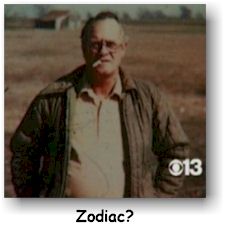 11 October 2008
11 October 2008
 10 October 2008
10 October 2008
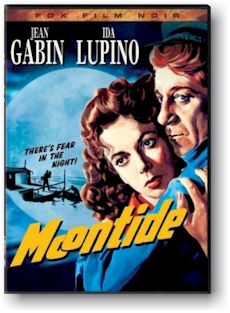 9 October 2008
9 October 2008
 8 October 2008
8 October 2008
2. The planetary massing of Mars, Jupiter and Saturn in Pisces in early 6 B.C.
3. The nova observed by the Chinese and Koreans in Aquila/Capricornus in the spring of 5 B.C.
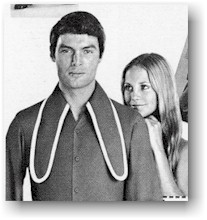 7 October 2008
7 October 2008
 6 October 2008
6 October 2008
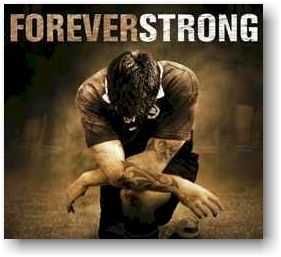 3 October 2008
3 October 2008
 2 October 2008
2 October 2008
 1 October 2008
1 October 2008
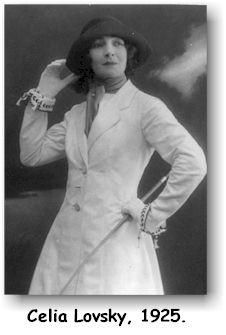 30 September 2008
30 September 2008
 29 September 2008
29 September 2008
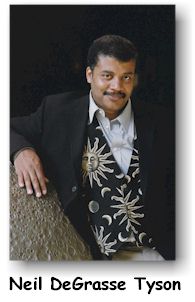 26 September 2008
26 September 2008
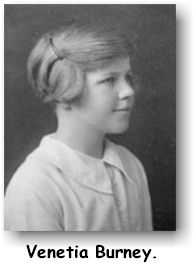 25 September 2008
25 September 2008
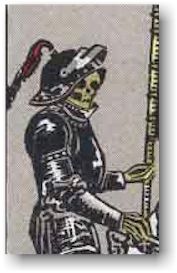 24 September 2008
24 September 2008
 23 September 2008
23 September 2008
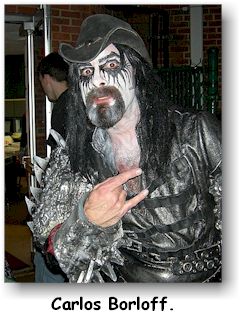 22 September 2008
22 September 2008
 19 September 2008
19 September 2008
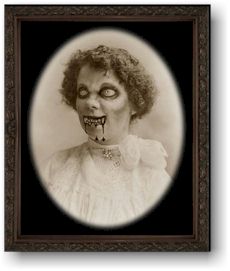 18 September 2008
18 September 2008
My daughter sang this in April during a high school production of the play...
I'm back. I had a GREAT time at my high school's 100th anniversary celebration; I'll post a page describing it when I get some time. Right now I'm swamped with e-mails and little administrative chores. It was especially great to be there with Bob and Mike, my two high school buddies from the Class of 1974. This was the first time we've all three been together since 1994. We've kept in touch ever since high school. It's true - the friends you make in high school you retain all your life.
This being Southern California, there were car shows. The Road Kings of Burbank had a show on campus, as part of the festivities, and I found the one I liked best: this great 1956 gold and black Chevy Bel Air convertible. You've got to love the beautiful simplicity of the dashboard. Wow. And on Friday night Mike, Bob and I showed up at the Burbank Big Boy Bob's to see the fabulous old cars parked there as well - a Bulldog tradition from the 50's and 60's I have somehow never taken part in. The other popular Burbank "things" I did on this trip that I have never done was to have a meatball sandwich at Santoro's Subs, tea cakes at Martino's bakery and browse in the Autobooks-Airbooks store. I'm really a native now!
The Chevy was used as the parade ride for Happy Days' Anson "Potsie" Williams, but the parade celebrity I thought more remarkable was Genevieve Cowden Sultenfuss, Class of 1928. Yes, 1928. That was eighty years ago. If she was eighteen when she graduated that makes her 98 now. And she wasn't even the oldest Burbank High alumni alive! (That, as I understand, is a lady three years older.)
Mike and I also took the NBC Studios tour. It's funny, but as long as we've lived in Burbank we've never done that. It was cool to stand near the place where Johnny Carson did the Tonight Show monologue for so many years. Nowadays that particular studio is used for the two story set for NBC Access Hollywood. Not at all the kind of show I'd ever watch, but I suppose I have to tune in one night just to see how the set is lit, etc. It was also surprising to learn about the set construction logistics involved in putting on "Days of Our Lives," the soap opera. Filming a one hour show five times a week requires a constant churn of sets.
This time I took the Nikon on the plane with me and kept it handy, rather than in the overhead bin. When making the approach into Burbank airport I got a great view of the city from the air. As it turns out, my friend Mike's house is about in the center of this shot. We were looking at the image on his TV set, identifying various landmarks.
Sadly, for Burbank, the NBC studios are pulling out of town and moving to nearby Universal City, so this was a sort of last opportunity to see the operations there. I bought an NBC key fob for $2.50 as a sort of home boy obligation. As a boy, NBC was my favorite channel. Why? It showed Star Trek, my favorite show.
A reader sent this in: the blog, as viewed through corporate eyes. Could I do a blog about my workplace? Oh, yes, certainly. Will I? No. I have grown accustomed to receiving a paycheck. And as insane as I think my job sometimes gets, there are far, far worse jobs. Read on.
I am almost finished with Eric Schlosser's "Fast Food Nation." As I wrote before, it's an excellent work, but I'm tiring of his constant assignment of blame for every fault of government to Ronald Reagan and those horrid Republicans in Congress. (He glosses over whenever OSHA or the USDA does something neglectful during Carter or Clinton's watch.) It's a very politically partisan work. Nonetheless, I believe Schlosser has managed to identify the absolute worst job in the country: meatpacking plant cleaning crew worker. I see that, according to this list, Mike "Dirty Jobs" Rowe never tackled that one! I'm guessing the reason is that about the last thing on earth the slaughterhouses or the fast food companies which buy from them would allow is a camera crew mucking about the entrails showing all that stuff.
By the way, I don't normally get into my personal political opinions on this blog, but there's one opinion I'm willing to share: I don't favor the White House, the House and the Senate being controlled by the same party. And unlike seemingly everyone else, I don't really want our politicians to get along, either. I want them to fight, argue, scrap, debate, haggle, scratch each other's eyes out - and compromise. I think the truly common sense, middle-of-the-road, bi-partisan stuff will nearly always get passed without much hassle. And since I'm not an especial fan of an activist government (a government mighty enough to help poor little you is stupid enough to thoroughly screw poor little you), legislative gridlock is often fine by me. I suspect there are others out there who share those views, but I, for one, will never be represented by polls because I refuse to take part in them. I get phone calls all the time from polling firms (Rasmussen, Zogby, Obama, McCain, and Heaven knows who else), and refuse to take part.
I think I'm going to form my very own political party, The Curmudgeon Party. Its guiding light can be an older manager I used to work for. When I once asked if he was a Republican or a Democrat, he answered, "A pox on both their houses!" At the time I was a little startled - now I understand exactly what he meant. I wish I worked for him again.
A few paragraphs ago I wrote, "as insane as I think my job sometimes gets..."; I must share this one harmless little anecdote. I was once in a trying meeting with the organizational bean counters - the budget group - going over tedious and convoluted costing definitions. I'm an engineer and therefore find this stuff arbitrary, with a logic that escapes me. I asked what the definition of one funding level was, and was told, "That's the minimum level of funding necessary." Smelling a rat, I then asked what another level of funding was, and was told, "That's less." There was a brief silence in the room, and I said, "Less than a minimum level of funding... that isn't much, is it?" and everyone laughed. There are times when I cannot escape my quondam classroom persona of Class Clown.
No updates for the next few days; I'm fleeing work and am off to my hometown of Burbank, California, where my high school is holding some 100th anniversary festivities.
"Fast Food Nation," by Eric Schlosser, is a fascinating book! Some excerpts:
Where flavors come from. (Executive summary: New Jersey, along the Turnpike.) I was introduced to IFF, International Flavors and Fragrances, in a book about perfumes I read a year or two ago by scent chemist Luca Turin. It, too, was fascinating. An interesting Time article on IFF is here.
Great stuff! I have been trying to avoid fast food, and dining out in general, in order to maintain my weight. But this book provides ample added incentive!
Speaking of weight, I'm back up to 257 this morning. Grr.
A reader took me to task in an e-mail for expressing my dislike of poetry yesterday, and supplied some examples. Okay, I need to modify my statement somewhat. I do not dislike all poetry. Homer, I like. Shakespeare I like. (But that's sort of poetic prose, isn't it?) There are probably some others... maybe e.e. cummings, Ogden Nash, that sort of thing. It's just very difficult for me to get motivated enough to read a book of poetry, all right?
Speaking of Ogden Nash, here's a good one:
 17 September 2008
17 September 2008
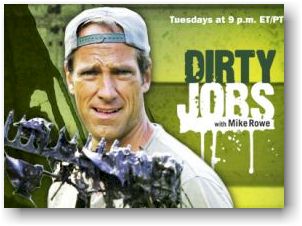 10 September 2008
10 September 2008
 9 September 2008
9 September 2008
What's in your Burger King strawberry shake? (A partial list.) Mmmmm.
A visit with a senior flavorist at IFF
I guess the reason I'm attracted to Nash's limericks is because my father sometimes came up with little word ditties and poems, usually performed in the style of Oliver Hardy. For a time I used to call Dad "the Bear," and I remember my surprise when, on the fly, he came up with this, set to music:
Years later I discoved that this was a quick adaptation of a song from the 1930's entitled "the Love Bug," once used in an Our Gang short. But I found that I, too, have this ability, and often devise little songs with contextually funny lyrics on the fly, the lyrics to be quickly forgotten. It's a kind of one-off performance art I can do on occasion, nearly impossible to repeat.
My instantaneous adaptation of Suzy Snowflake (improvised while trimming the Christmas tree one year), however, has remained with me, and I trot it out every December:
I tried to read Walt Whitman's "Leaves of Grass," one of my nice, leather-bound volumes, over the weekend, but couldn't. I couldn't get into "Romantic Poets," either. (Another nice book.) I just don't like poetry. I once slogged through Alfred Lord Tennyson's "Idylls of the King" because I was a King Arthur compleatist, but it just about killed me. And "the Essays of Michel de Montaigne" (my third nicely-bound book) looked really, really dry, so I didn't even try. So I'm dumbing down and reading "Fast Food Nation" by Eric Schlosser. A wonderful dietary aid. I'm only 36 pages into it and I'm determined to eat better!
Did you know that McDonald's is the world's largest owner of retail property? Excerpt from book here.
Thanks to the Video Vault guy's contacts, over the weekend I saw one of the rarely-seen films noir (it has never been released on either VHS or DVD) with an absolutely untoppable title, "Kiss the Blood Off My Hands." It stars Burt Lancaster and Joan Fontaine. It got mixed critical reviews, and I can see why - it has a redemptive ending. I hate those. In a film noir, if you're going to create an hour or so of a fatalistic and doomed mood, you pretty much have to kill off the protagonist at the end, preferably with his girlfriend (as in the wonderful "Odd Man Out" or "Criss Cross"). Otherwise you have a cheat, the sort of happy Hollywood endings Europeans detest. Paugh. Most critics agree that this sort of ending ruined "Gilda," an otherwise excellent noir.
Anyway, KTBOMH featured one of my favorite British character actors, Robert Newton - he starred in David Lean's "Oliver Twist" (1948) (arguably one of the greatest films ever made) and "Treasure Island" (1950). He's an over-the-top Cockney; sort of like what would happen if you took the Who's Keith Moon and made him an actor. They even resemble one another somewhat.
Interestingly, Keith Moon once cited Newton as a role model... Newton died of alcoholism, Moon of alcoholism and drug abuse.
I also saw a niced little Criterion DVD, "The Naked Prey" (1966) starring Cornel Wilde and a bunch of South African natives. (By the way, Criterion DVDs are like Penguin Paperbacks, a fairly reliable sign of quality. Haven't yet seen one I didn't like.) I was recommended to this one by a friend who read last week's bit about the Tarzan film where a man is torn in half by the release of two trees. In this one, a white hunter is captured and rubbed all over with clay - given a stalk at his mouth to breath through - and is rotated on a spit over a fire, slowly cooked within the clay. Yow!
By the way, if you know of other such ghastly scenes in films, don't tell me. I'm really not interested into turning this into one of my cinematic vogues.
I liked this assessment of the film: "Roger Ebert called Naked Prey 'pure fantasy' of the 'great white hunter' variety, adding disdainfully: 'Sure, it's nice to think you could outrun half a dozen hand-picked African warriors simply because you'd been to college and read Thoreau, but the truth is they'd nail you before you got across the river and into the trees.'" Ha!
This past weekend I also went though various parts of the house, getting rid of stuff we, as empty-nesters, don't really need. We got rid of about half of our paper files, tossing stuff related to elementary schools, middle schools, etc. that have been in there for a decade or more. I guess it's a physical manifestation or acceptance of ourselves in our new role. We're turning our house back into a place where only adults live.
Are you a hen-pecked husband? Check here.
I am happy to report that this morning I was at 254.8, so I am now back down where I should be, below 255. (See entry for 12 August.) It took me almost a month to lose those five wedding celebration pounds, but I did.
One of my daughter's past admirers bought her the DVD set of season one of Futurama; she left this behind when she went to college. I just finished watching all the episodes. Pretty good show. I think I like it better than the Simpsons - the cynicism isn't quite so unrelenting. I get a kick out of Zapp Brannigan, the Captain Kirkish character who wears the ridiculous skirted uniform seen in early episodes of Star Trek - The Next Generation. One of those "What were they thinking?" decisions. (Another was Wesley Crusher.) I think it's funny that Futurama isn't going to let Star Trek forget about that one.
I also watched "Tarzan, the Ape-Man," Johnny Weismuller's first film from 1932. The seduction-of-Jane scenes were pretty funny. At first he grabs her and hauls her up to his treehouse sleeping quarters, where she screams and kicks. Disgusted, he sleeps outside. Later on they fool around near some river, and Jane muses on the color of his eyes. By the end of the film, of course, she's singing, "O Sweet Mystery of Life At Last I've Found Thee." As they were never shown to be married in the film, it causes me to wonder how this got by the censors in 1932. I suspect the answer is that 1932 was a pre-Hays Code enforcement year - no real censors.
Wikipedia states, "the Internet Movie Database lists 88 movies with Tarzan in the title between 1918 and 1999." Wow. The ever-valuable Wikipedia also answers a question I had been wondering: "During an appearance on television's Mike Douglas Show in the 1970s, Weissmuller explained how the famous yell was created. Recordings of three vocalists were spliced together to get the effect - a soprano, an alto, and a hog caller!" That's what I thought. Listening to it, I was thinking that one human couldn't have possibly have created that sound. Those glottal stops in between those held notes sound impossible. Wikipedia also notes that Johnny Weismuller was a BVD underwear model before taking on the film role of Tarzan. Finally, I will note from Kenneth Anger's "Hollywood Babylon" that Weismuller reportedly had the worst B.O. in Hollywood.
Have you ever read "Hollywood Babylon?" Fascinating book. It's kind of like an ultra-concentrated National Enquirer. One reviewer calls it "infinitely sarcastic" and another, "a box of poisoned bon-bons," which about describes it. You want to take a shower afterwards, and some of the photos - Jayne Mansfield's decapitated body and dead dog - remain with you. But it has a weird, sick allure.
Kind of like Hollywood itself. Because my friend Jimmy lived behind the famous Max Factor building, Hollywood Boulevard was my occasional playground when I was a kid, in the mid to late Sixties. The place has greatly cleaned up itself nowadays, but by then it was a seedy vestige of what it was in its glory days. Shops were boarded up, hippies slept on the sidewalks and the whole place sort of radiated disillusionment and tawdriness. As a boy, I loved it!
Looks like Tropical Storm Hannah is going to put the kibosh on any yard sales tomorrow morning, as well as the end of summer pool party scheduled for that day - drat.
Have a great weekend anyway. (Buy some candles and flashlight batteries.)
I watched vice-presidential candidate Sarah Palin's speech last night during the GOP convention, prompted in small part by an e-mailing that somebody had sent me, referring to her as a "smoking hot naughty librarian type." This political novelty I had to see for myself. I have been utterly ignoring the political conventions, and I will not share my political opinions with you on this blog. Well, not today, anyway. In general, on this blog I try to stay apolitical. There's more than enough politican rhetoric elsewhere.
I will say that I was somewhat amused by the appearance of the young man, Levi Johnston, who impregnated Governor Palin's daughter Bristol. I would have loved to have been a fly on the wall when various GOP handlers briefed him prior to last night's appearance. I'm guessing it was along the lines of, "You are Bristol's fiance, not her boyfriend. You will appear alongside your pregnant fiancee with the Palin family onstage after the speech. You are going to shave off that scraggly facial hair. You will wear a blue business suit. You will smile, acknowledge cheers and appear supportive of your future mother-in-law. If Senator McCain shakes your hand firmly and gives you his rictus grin, you will smile and seem honored to have been so greeted."
No pressure.
The pressies have been having fun with his MySpace entries: "On his MySpace page, Johnston proudly declares: 'I'm a f---in' redneck. I live to play hockey. I like to go camping and hang out with the boys, do some fishing.' He also warns that if anyone messes with him, 'I'll kick ass.' The Web site, before it was removed, appeared not to have been accessed for a year. On it, he admits to having a girlfriend. On the part where it asks about children, he wrote, 'I don't want kids.'"
Or global publicity, I'm guessing.
Ah, MySpace. Where teens reveal all - on a global resource - and are then dismayed and angry when somebody they don't like sees it. When my daughters were involved in high school drama, we drama booster parents would occasionally keep tabs on them and their friends via MySpace and Facebook. The howls and cries of objection ("We don't have any privacy!") from the kids when this was learned was highly amusing. But this, too, was part of their high school education. On the Internet, information wants to be free. Even personal information.
One foolish young man of my past acquaintance once spent an evening vandalizing neighborhoods - and then posted comments about it on his MySpace page. He's probably another of the many young men who have learned that local police departments and prosecutors develop cases using information posted to the World Wide Web.
And there have been a couple of times when some young man who played rugby for Western Suburbs gave me a rather spicy comment for the quotes section of his player's profile, say, something along the lines of how great it is to drink oneself into oblivion and throw up in public. I'd get a rueful request from said player to remove the quote after he had learned that some of his students in the high school class he taught were looking up his rugby profile.
Yesterday I mentioned David Lynch's film "Inland Empire." Just for kicks I did a couple of screen captures of the DVD:
One - Laura Dern shoots a man (identified as "the Phantom"), who then morphs into a creepy distortion of Dern's face shown suddenly, accompanied by a burst of startling music.
Two - The rabbits. Why rabbits? I have no idea.
I still can't recommend this film to the general public. Only Lynch fans need concern themselves with it.
I am greatly enjoying Robinson Crusoe. What makes it even better is, despite the work's fame, I do not know what finally happens to him. So the novel has real suspense and interest. All I know about the work is what just about everyone else knows: He's a cast away and eventually comes across another person on the island named Friday. That's it. I am slightly more than half way.
As was the case with my copy of David Copperfield, this book is a leather-bound Franklin Pressing; I got a bunch of them from a kind and generous friend about a decade or so ago. I am redicovering the joy of reading that every avid reader knows. Reading a good story is great, but handing a fine, high quality bound book is even better. There is a certain tactile delight in holding this book that is hard to describe. As a former president of my church once said about the Book of Mormon, "It's a book. It has heft, and weight, and a solid presence. It is a delight to read..." or words to that effect. When I first heard his words I thought them curious because I rarely hear about books being described in that way. Now I know precisely what he meant. Books are wonderful. One can't have enough. A great part of the enjoyment of life, I think, is a big stack of books that have been read, and a big stack left to read.
Finally, this: While going through our files I found yellowed Provo, Utah newspaper clippings from about 1982 - the Grant Mildenhall Controversy. This is about all it takes to create a ruckus in Utah.
Over the weekend I set my bass guitar and amp back up; I haven't played or practiced on it since April 2007, when my band had its last gig. But, running through some songs, I see the brain-to-finger links are more or less still in place. It's like riding a bike, I guess. Once you learn how, the skill more or less stays with you.
Last night I watched "Tarzan Escapes" from 1936. Why? Because as a child I recalled a scene from some Tarzan film where a hapless native is tied to two roped-down trees, which are released, tearing him in half. "Kewl!" I recall thinking. A quick bit of research on the part of the owner of Video Vault - who is also a baby boomer and remembers that scene - revealed that this was in this installment of the series. As it turned out, my memory of it is much more vivid than the actual scene, which essentially shows nothing save a reaction shot from a 1930's babe. In fact, the scene is pretty lame.
(The other notion I thought was kewl as a child was two shrunken heads talking to one another, as related to me by a friend who had reportedly seen this on a horror film broadcast on television in 1964. I have never been able to identify what film this might have been from. One logistical problem has always occurred to me: Don't shrunken heads have their mouths sewn up?)
I can see why the Tarzan series was popular in the 1930's, however. With the Hays Code enforcing a strict code of morals in filmmaking, it was probably somewhat novel for an audience of the era to see a guy in a loin cloth swinging through the trees to have sex with Jane in a treehouse. Not that this was explicitly shown, of course. In the sex scene in this film, it's merely suggested: a flower is shown floating down a little stream while Cheetah is left to occupy himself for awhile. Still, this film was preposterous enough to hold the interest of my wife and I for an hour and a half, and I cheered as the bad guy fell into the dry ice bog to be eaten by komodo dragons (which are native to Indonesia and not Africa, by the way). Or maybe they were iguanas... (once again, not found in Africa). Hey, I'm from L.A. - what do I know of large, flesh eating lizards gratuitously included to satisfy demands for cinematic terror?
As silly as "Tarzan Escapes" was, however, I'm 2/3rds of the way though an even sillier film: David Lynch's "Inland Empire" (2006). It's the most chaotic and puzzling Lynch film to date, which, considering "Mulholland Drive," "Wild at Heart" and "Lost Highway," is really saying something. How can you combine people in a 1950's sitcom set (with laugh track) wearing bunny heads, prostitutes doing a group dance routine to "The Loco-Motion" and Polish ghosts together and have it make any sense? You can't. And it doesn't. It looks, more or less, like the main plot is that of an actress losing her mind and haunting her own set as a ghost, but this discounts much Lynchian weirdness apparently thrown about to make people wonder about The Meaning Of It All. I refuse. The excellent neo-noir "Memento" (2000) rewards such discussions; this film doesn't. So I just watch it to revel in Lynch's patented dreamlike production style, where the incidental music is deep and brooding, people speak elliptically and move through darkened hallways, and long lingering shots of everyday objects like lamps and curtains take on sinister overtones. I know of no other director who can seem to tap into the creepy subconscious as well as Lynch.
Still, given his masterpiece neo-noir "Mulholland Drive," which had a sensible plot and a beginning, middle and end (just not told that way), this film is a disappointment. And at three hours, way too self-indulgent.
One other thing: the phrase "inland empire" refers to the interior of Southern California (click here for wikipedia link). The film (apparently) takes place in Hollywood and Poland. Why the title? Reportedly, Lynch liked the sound of the phrase. More self-indulgence.
Labor Day weekend was over all too fast. That usually seems to be the case. And yard sales sucked; there was only one, and that one was just kids' stuff.
Not having school age kids anymore, I find the nature of September has changed. It no longer has a bad connotation (the start of the academic grind, the end of vacations, etc.) I might even get to like it. I got some all-important hammock time in over the weekend... April, May, September and October are the prime months for lying in the hammock; the other months are too hot or cold.
On Saturday my good lady wife and I took an exploratory visit over to the new National Harbor development on the Maryland shore facing Alexandria. It's okay. Not far enough along to be really interesting, however. Go there in six or eight months. Still... I bought the first honeycrisp apples of the season at a farmer's market there. Ahhhh... the honeycrisp. Proof positive that God loves us and wants us to be happy.
On Saturday night my wife and I watched Tom Hanks' "Cast Away" (2000), which DVD I found within the pages of a yard sale book purchase. I liked the island scenes, which was most of the film, but the end section when he returned home seemed tacked on and uneeded. (This was also Roger Ebert's observation.) I thought the film was a good 30-40 minutes too long. Modern directors are so self-indulgent. They need less money, so they can make better films.
But, inspired by it I am now reading Daniel Defoe's "Robinson Crusoe," in an expensively-bound leather volume I have had on my shelf for at least a decade. I liked this little observation about the advantages of what we now call the middle class. It seems true.
My wife and I spent some time going though our household files, throwing away the owner's manual to the RCA clock radio we got rid of back in 1988, that sort of thing. I came across this, "Dining Out with Rock and Connie," a restaurant review from 1983. (I think it was - dinner was $6.75/person!) I was an engineering student and my wife worked at a small town publication called the Central Utah Journal Shopper's Guide, run by a family of hicks. Anyway, Chinese restaurants in Utah could be surprising; we once ate at one where I didn't see a single Asian - it was weird. Utah has since become far more cosmopolitan nowadays, however. There have been an influx of Californians fleeing the poor management, high taxation and general over-the-top environment of the Golden State; my in-laws are in this category, as is a good friend. I have often considered that I wouldn't want to live there anymore. But it was a good place to be from...
One of the many things my recently departed (for college) daughter Meredith left to us was to somehow get our home address on the Lilly Pulitzer catalog mailing list. For those of you not in the know, Lilly Pulitzer specializes in the preppy New England look for WASPs. Anyway, I was thumbing through this thing the other morning while eating my Corn Chex. Check out what they, with straight faces, expect males to wear:
Joe Harlequin - Can you imagine your car breaking down in, say, Manassas, and having to ask the gas station mechanic to take a look under the hood while wearing this?
My eyes are seared - The only man to successfully pull off this look was Jimi Hendrix.
Yuck yuck - I'd laugh, too, if I saw somebody modeling this.
Me and the dogs - Sorry. Try as you might, there is simply no way to look male, heterosexual and dignified while wearing this sweater.
Bowtie Boy - Lilly helps you affect the Jimmy Olsen Cub Reporter look.
Egad. Big as I am, I would expect to get a beat-down from somebody were I to wear this stuff. More of it here, on their website.
By the way, I first learned of Lilly Pulitzer while reading Lisa Birnbach's landmark The Official Preppy Handbook back in 1980, when it was first published. A brilliant satire and social anthropology, this book was the first in a publishing wave of Official Fill-in-the-Blank Handbooks. I once considered writing the satirical "Official Civil War Reenactors Handbook," but, like my Civil War children's book "Frankie the Yankee," it never came to pass.
You can imagine an "Official Rugby Player's Handbook," right? (With chapters on beer, public nudity and DWI's.) Of course you can. That's why the genre flourished - universality. By the way, rugby is mentioned in the Preppy Handbook, on page 100.
The Labor Day Weekend looms. I feel wrung out and exhausted. I plan to do... nothing. Maybe yard sales and that's it. But to commemorate the end of summer properly, here's the Blue Hawaiians performing their excellent guitar instrumental, The Last Days of Summer. Turn it up!
Have a great weekend!
Rain, gloom, grayness.
I must confess that my spirits are low and it's difficult for me to muster much interest or enthusiam for anything. I suspect that having a child (especially the last one) move out of the house is a sort of emotional third cousin to losing the child by death; there's a sense of loss and grief that is impossible to ignore. A friend wrote me a supportive email reminding me that rugby cures everything, and that I ought to get involved in that again. I sense that he's correct and that this would probably be a good idea. But I am reluctant to take on anything new that requires an expenditure of time or effort right now. I think what I'll do is just sort of ride things out for now and hold fast. Consolidate. React instead of act. Put new plans off for now.
One thing I couldn't put off: I am now $4,300 poorer as a result of the air conditioning system in my home breaking down and having to be replaced (inside coil, outside compressor). The old unit was at least eleven years old, probably closer to thirteen. But at least we have cool, dry air. The new compressor is quieter than the old one, which will be nice when hammock weather begins again and I find myself hanging about ten feet away from it as it cycles on and off.
It's a Carrier, built by a company named after Willis Haviland Carrier (pictured above), one of my heroes. (Click here and scroll to the bottom of the page, where I wrote him some honorific sentences.) Hail to thee, O Engineering Giant! I maintain that we Civil War reenactors should erect a statue to his memory someplace where we're running around in blue wool in the summer, sweating.
I spent the day on annual leave at home yesterday overseeing the whole air conditioning operation and cleaning my daughter's room. I found eight pairs of sunglasses, six swim goggles (she was on a swim team for awhile), innumerable bottles of dried-up nail polish, ten different bottles of sun tanning lotion and about thirty new and depleted AA batteries, all strewn around behind cabinets, within little purses and generally secreted everywhere.
Talking to the air conditioning techs was interesting. I once again learned that, in general, we Americans have absolutely no clue as to how many calories are in the foods we eat. One of the techs mentioned that he needed to get rid of his belly, and that he usually drinks about six cans of Pepsi a day. I asked him how many calories he supposed was in all that soda. "Oh, about 300, I suppose," he said. He was surprised when I told him that a can of Pepsi has about 140 calories in it, and that six cans represents about 840 calories. He was also surprised when I told him that a good start for losing his gut was to simply develop a taste for diet drinks, and substitute diet Pepsis for the regular ones. "How many calories in a diet Pepsi?" he asked. I told him to guess. "100?" he replied. Wow. I thought everyone in America knew that diet sodas contained no calories. All that advertising must be missing the mark.
Of course, drinking six cans of diet anything - especially stuff with caffeine - is a bad idea, but he's well on his way (he's 38) to developing adult onset diabetes with all that sugar. I also ran the numbers on a website and told him that if he could restrain himself to about 2,000 calories a day (impossible with all that sugar) he'd lose about two pounds a week. I made him a print out, told him what to do, and as the cool air started to flow into my house we bade each other good bye.
By the way, I was at 256.6 pounds this morning. Still over my maximum of 255, but not too bad when you consider all the restaurant and prepared foods I was eating while in Utah. I shall continue to be diligent; I don't want to undo all the benefits I gained by losing 55-60 pounds last year. And I especially don't want to have to scrape around in my "Pants of Historic Sizes" box for trousers.
Speaking of food, check this out: Cooking With Vincent Price.
I am back. As I mentioned, we flew into Utah to settle my youngest daughter into college and to attend a wedding reception for my other daughter. As I predicted, the trip was stressful, for many reasons: a totally disorganized student apartment front office, my wife got a nasty case of stomach flu, more than usual family stresses and, at one point, I backed the loaner car into a fire hydrant, causing bumper and tail light damage.
One morning I parked the car in a parking lot, between the lines (as is my wont), not dooring anyone as far as I knew - and found this note under the windshield wiper blade upon my arrival back. I do not have the faintest idea how I offended this person, but the note accurately represents the whole trip.
(See also this, from the Orem, Utah Krispy Kreme store - sadistic doughnuts. It's "crullers." Utahns aren't real big on spelling, I guess.)
Oh, and the little Nikon point-and-shoot camera I got for Christmas was stolen out of my suitcase at some point on the flight back, and we returned to discover that the home air conditioner is in need of replacement to the tune of thousands of dollars. Swell.
Last night I did what I always did whenever a child leaves the home: I went through and cleaned and rearranged his/her bedroom. It's theraputic for me in some way I cannot describe.
The Empty Nest.
I have been a parent - and a fairly dedicated one - since 1983. Now that all of the kids are out of the house and more or less on their own, it causes my wife and I to think, "Now what?" There's a profound feeling of uselessness, a suspicion that now that my life's most important work (that's what being a father was for me) is mostly over, that my existence has to be worked out and redefined in some new way. Or even justified, which is more of a jolt. How does one follow parenthood? What could possibly be as essential and fulfilling as that?
Whenever a child leaves the home for college I invariably think of the Norman Rockwell 1954 painting on the subject, "Breaking Home Ties." Rockwell is derided by art critics for various reasons, but this is one of the truest paintings I have ever seen in terms of depicting the emotions behind the event.
It's funny... I spent a few minutes finding and replacing the battery in my daughter's plastic "Princesses" alarm clock, which she rarely used. I guess it was important to me, in case any visiting princesses want to know what time it is.
I feel much better today, having napped about four times yesterday. I needed the sleep, I guess. Yesterday I coughed up about two cubic feet of phlegm. TMI? I should think so.
Last night I watched a Humphrey Bogart film ("Passage to Marseille" from 1944) that was something of an oddity in that, at one point, it had a triple flashback narrative. That is, there was a sequence that was a flashback within a flashback within a flashback. When it started my brain went, "Nooo!"; I don't know of any other film that does this. Many noirs are told in a narrative or non-linear fashion, but I'm unaware of any that have this film's level of nested storytelling. It wasn't a very good film, by the way. Sort of a lame follow-up to "Casablanca."
Word for the Day: "Graustarkian." Yesterday I finished a book about the films of Sherlock Holmes that twice used this word, which I have never encountered. As usual, wikipedia explains it. It refers to a literary genre that contains tales of romance and intrigue, usually featuring titled characters in small, fictional, Central European countries. Think "The Prisoner of Zenda." Now we know.
Wow! Phelps burns 12,000 calories a day? I have a tough time staying below 2,100...
...on a related subject, Americans fatter in 37 states. Mississippi is the fattest state in the union, with Virginia coming in at 27th place. Why? It might be well to recall some of the lyrics to "Dixie": "There's buckwheat cakes and Injun batter/Makes you fat or a little fatter/Look away! Look away! Look away!/Dixie Land!" Must be them buckwheat cakes...
Searching around on databases for website material I found an interesting little Saturday Evening Post article from 1962 entitled "Let's End the Civil War!" Sorry, fella, didn't happen. It has been getting refought continuously ever since then.
No blogs until next week; I'm off to Utah to establish my youngest daughter in college (the start of the Empty Nest) and to attend the groom's family's wedding reception of my other daughter. Stress a-plenty, in other words.
The cold I caught over the weekend has moved down into my chest, so I'm a basso profundo at home today, hacking up phlegm. I NyQuilled myself into oblivion last night and so I did not wake up this morning thinking about Peasley Ivormann.
What I did wake up wondering, however, was if "Grease" is a musical about the 1950's, and "Hairspray" is a musical about the 1960's, is somebody going to do a musical about the 1980's entitled "Mousse?" (One about the 1970's might be called "Nothing," as that seemed to be what young people were putting into their hair during that decade. Well, the first half. Then punks were spiking their hair in the second half. Maybe "Spike?")
I posted some more of my daughter's wedding photos here (scroll to the bottom of the photos section). We shot during the "magic hour," when the sun was setting. It cast a nice pink/golden glow over everything. Not only did we get a series of great photos out of the session, I got some ideas from the professional photographers about where good sites are for shots in D.C.
Last week I posted that my weight had crept up to an unacceptable 260. I was at 257.2 this morning. Still high, but coming down from 260.
And... that's all. I'm going back to bed.
I caught a cold over the weekend, and whenever I'm not feeling well I get really weird dreams. (I get congested and not enough air gets to the brain, I guess.) So this morning I woke up with the song lyrics to an odd, minor key folk tune in my head, repeated obsessively. It goes like this: "Peasley Ivormann/Peasley Ivormann/You left the farm to seek wealth and fame/Peasley Ivormann..." That strange name was developed way, way back in the cobwebby recesses of my subconscious. Peasley Ivormann looks like this rockabilly guy.
Yard sales were scarce - the season is ending. Also, people are on vacation. I found what I thought was a great replacement 12" speaker for my son's blown guitar amplifier for $8, but when I got it home and installed it I discovered the speaker was fried. So I took it back and got my money back! (You can do that in yard sales sometimes.)
The only other thing I bought was a funny little water-dripping stone sculpture for my office for $3. It sits in the corner, making a sound like somebody is gently urinating. If I find myself irresistably having to use the men's room a lot during the day, out it goes.
Here's a positively untoppable news caption: "Inflatable dog turd sculpture escapes Swiss museum, wreaks havoc." Serves 'em right, I say.
My guess is that if you're forty or older you remember Ernie Bushmiller's comic strip Nancy, if younger, then not. It used to run in the Los Angeles Herald Examiner when I was a kid, and was always my favorite strip. For one thing, I identified with Sluggo - he and I have the same nose. I was also fond of the greatly simplified, pared-back visual style. There's nothing there that doesn't need to be there, including excess punctuation! Very easy for a little kid to assimilate.
Anyway, I was in a thrift store the other day, and found a Nancy and Sluggo paperback for a quarter that I had to have. Here are some excerpts:
The humor in Nancy could be distinctly... odd. Take this one, for example. Or this one. Or even this one. Not really ha-ha, laugh out loud funny, but somehow strangely satisfying to look at.
Other gags suggested that Nancy and Sluggo lived in a world of bizarre coincidences. Simple visual gags were also common. (Here's another example.) But perhaps most interesting of all were the ones that illustrated Nancy's tenuous hold on Sluggo's devotion, like this one, this one or this one. It might not be an exaggeration to say that my earliest notions regarding the relations between the sexes (girls were proprietary, boys roamed) was found in Nancy.
I include this one as a sort of cultural marker - I remember when people started leaving trash in bags rather than cans, circa 1970, I think.
Doing an Internet search on the subject of Nancy and Sluggo was interesting. For some reason this image kept turning up. But, thinking about it, it's very representative of the Nancy style in one simple image: the unreality of it all and the fact that Sluggo liked to nap. The complete strip is here.
Another good one is here, but whether this is a Bushmiller idea or a recrafting of his work is unclear.
I don't like the newer, non-Bushmiller strips at all.
And finally, this. That bondage one is.. strange.
I am back from that management conference. I'm burned out with corporate icebreakers, facilitators and breaking up into groups.
Finally finished David Copperfield, book and film. Huckleberry Finn is still my favorite book!
75 Things To Do Before You Die - Check out #1. I wholeheartedly agree.
The other day a friend of mine asked a question I couldn't answer right away: What is the most representative film noir city, Los Angeles or New York City? I couldn't answer right away because you see them both fairly often in noirs.
Film noir writer Eddie Muller calls the city - any city - "Mankind's riskiest experiment," citing all the films that use the city as a metaphor for corruption, lust, wickedness and evil. This is, in part, what makes film noir so interesting - it takes place in an interesting venue. The directors are very explicit about this; I can't count the number of old crime films that have a background of the city (usually at night) behind the opening titles, so there's no mistake about what kind of film you're about to see. Some noirs, like "The Naked City" (1948) and "City That Never Sleeps" (1953) features the city, collectively, as the main character. (In "City That Never Sleeps," the city even has a distinct narrative voice and human representation; this is unique.)
So which is it, Los Angeles or New York City? I think I've hit upon the answer: it depends.
New York City is the stand-in for any large, modern city. It's the fascination and corruption of all cities rolled into one gigantic habitation. Metropolis, Gotham City, the Naked City, the City That Never Sleeps, Dark City... call it what you want, it's understood to be New York City. In the beginning of the Twentieth Century, New York City was viewed as representative of what America was, and could be. It fascinated Europeans; inspired by the place, Antonin Dvorak wrote a symphony which he called, "From the New World." Almost every old Lp cover I've ever seen shows a Manhattan skyline. It wasn't until the G.I.'s began returning from Europe, however, that the place started to fully become a metaphor for corruption and broken ideals that gave the film noir style so much of its literary importance and interest. So, New York City is the classical film noir place.
However, in film noir it's impossible to overlook Los Angeles (which Anjelica Huston calls "Los Angel-LEES" in 1990's "The Grifters," a splendid neo-noir). If I had a dime for every film I've seen where I was able to spot that distinctive city hall I'd be... well, I'd have a lot of dimes. But consider films like "Sunset Boulevard" (1950), "L.A. Confidential" (1997), "Mulholland Drive" (2001) and "Hollywoodland" (2006). What sets L.A. apart from NYC in terms of noir interest is an added attraction: vanity. Specifically, entertainment industry vanity. Los Angeles and Hollywood are interchangable, and Hollywood is called "Tinseltown" to indicate a shallowness and superficiality that is very much at home in film noir. In fact, Mulholland Drive is sub-titled "A love story in the City of Dreams," and that's exactly what it's about. The dream of cinematic dreams and fame. For every star on Hollywood Boulevard there are a thousand broken hearts, which is not too far from "There are eight million stories in the Naked City."
So if your film noir interest leans to the generalities of bad things happening in cities - any city - it could be New York City. But if your interest is specifically the film arts - film noir looking at itself! - it's Los Angeles.
But such is the universal applicability of film noir that it could be about any city. In "Night and The City" (1950), the city is London. In "Odd Man Out" (1947), it's Belfast. And nowadays, when you see "Made in Hollywood," it could very well have been made in my hometown of Burbank, which is where a lot of the media companies moved to. I once saw a nice little neo-noir starring Gene Hackman entitled "Night Moves" (1975); I was amused to discover that in it, the Dark City was Burbank! And let's not forget that James M. Cain wrote a classic noir novel, "The Postman Always Rings Twice" in Burbank. Somewhere there's a great quote (by Cain?) about how rotten to the core Los Angeles was, and how desperate places like Burbank are as well. I wish I could find that quote...
I'm still plowing through Dickens' David Copperfield; I'm on page 668 of 803. From a wikipedia reference: "In a Home Improvement episode, 'This Joke's For You,' Brad manfully undertakes to read David Copperfield in order to impress a girl, but his efforts are stymied by the book's length." I appreciate the joke!
And the number one song in America on the day you were born was... what? For me it was "Heartbreak Hotel" by Elvis Presley.
Russians invade Georgia. Who do they think they are, William Tecumseh Sherman? (Sorry for that, but I couldn't resist.)
Hey, look: more Olympic fakery. And this, too. It kind of reminds me of the good old days, when the Russian "women" competed. Those commies... always good for a chuckle.
The subject of gender verification is an interesting one. One would think that it would be a relatively straightforward thing. But, alas! nothing is as simple as it used to be. Check this out. "Nowadays, sex determination tests typically involve evaluation by gynecologists, endocrinologists, psychologists, and internal medicine specialists." A veritable battery of professionals; at least it's one of the few areas where lawyers don't seem to be involved somehow. (Yet.)
But perhaps I err in stating that this used to be simple.
From my desk calendar: "I don't know who my grandfather was; I am much more concerned to know what his grandson will be." - Abraham Lincoln. Normally I enjoy the enlighted and often humorous sayings of the Great Emancipator, but this one displays a stunning disregard for genealogy. I am very much interested in knowing all about my ancestors!
No blog update tomorrow as I'll be in Baltimore at an offsite management conference. These can be enjoyable for those of us with cynical and sardonic natures. Or they can be dreary. One thing I do enjoy about it, however, is sitting atop Federal Hill and watching the sun set. Maybe this time I'll take the Nikon.
It's interesting... the wikipedia article for Federal Hill makes no mention of the prominent statue of Sam Smith located there. He's one of the more interesting heroes of American history. He was an officer in the Revolution, and when the British again became a problem in the War of 1812, he successfully led the defense of Baltimore - at age 62! In his eighties he was the Mayor of Baltimore. He should be a more familiar name to Americans than he is...
Uh-oh. Stepped on the scale this morning and saw 260 pounds, a full five pounds more than I want to be. (I try to keep my weight under 255.) That's real weight, not easily shed in a few days. Time to once again get serious about monitoring my daily calorie intake. I don't want to have to fetch old trousers from my "Pants of historical sizes" box in the closet. By announcing it to the world in this fashion I am compelling myself to take action!
My pard Chris, also suffering from a temporary weight gain, cites atmospheric pressure. Never heard THAT one before.
So... what's going on in the world of Civil War reenacting these days? After all, August is near the peak of the season. Well, the local Sully Plantation event is being held this coming weekend. ("Federal and Confederate troops recreate Civil War daily life. Skirmishes each day include infantry, artillery and cavalry. Stop by the surgeon’s tent to see how the sick and wounded were treated. Enjoy live music and a fashion show. House tour included.") I do not plan to attend as I know from experience that Sully is excruciatingly boring, and the quiet of the gentle, 19th century setting is often broken by the sound of approaching jet aircraft touching down at Dulles.
I also have a bad taste in my mouth for this event because I once slipped and took a spectacular fall on the plantation porch. We reenactors often wear a kind of iron horseshoe on the soles of our reproduction shoes ("brogans"), you see, to make them last longer. It's a great idea, but they can be very slippery on concrete and wood. (They also damage the old wooden floors in historic homes, which annoys the caretakers.) At any rate, when I came down hard on the porch some other reenactors halted and looked around the corner, wondering what big crate of anvils had been dropped from the second story window.
Speaking of "...the surgeon’s tent to see how the sick and wounded were treated," also in the reenactment news is the recent story of a reenactor shooting himself in the foot at Gettysburg. Well, that's how the news was initially reported, anyway. As it turned out, a teenager was pretending to be a casualty lying dead under a sheet when somebody unaccountably came up and shot him in the foot with a pistol. I think; the details are forthcoming slowly as the police and, probably, lawyers are interested. How this was supposed to represent some commonplace event or scenario in the past is beyond me. Anyway, the poor teen ended up in the hospital with painful burns and some tissue damage; you can read about it (with pungent commentary), here. I suppose it's scarce comfort for him to be able to say in latter years, "I was shot at Gettysburg!"
Oh, need I mention that the reenactors were Confederates?
Say, does anyone here remember Jon-Erik Hexum? A handsome, up-and-coming new star back in the early 1980's, he was fooling around with a pistol loaded with blanks on the set one day and shot himself in the head. The wadding and concussion damaged his skull and he died a week later. Moral: the power of a blank round in a gun is fearsome and ought to be respected. Every now and then we reenactors fire muskets in the darkness; the considerable length of the flame coming out of the muzzle has always been a salutary sight for me. (Even in daylight.)
A funny comment from Mal Stylo: "Poor John Edwards, I bet he read your blog yesterday on the 1631 'wicked Bible' and smacked his forehead, screaming, 'If only he had posted this Friday before my Nightline appearance – I’d be on my way to being Vice President!' He could have shown Elizabeth and the voters that he was merely following scripture. Oh well. In life, timing is everything."
Isaac Hayes died the other day. He was, of course, primarily known for "the Theme from Shaft." Man, that song was HUGE back in 1971. What a production: strings, brass, girl singers, and that incredible wah guitar. Nobody had ever heard a wah pedal used to such good effect. Sure, Jimi Hendrix is often cited as being the virtuoso of the wah, but it was Shaft that makes everyone think, "That's what a wah pedal sounds like."
Also in the news, the Red Chinese (am I the only one left who calls them that?), and their interesting use of CGI in the opening to the Olympics. "Does it really make any difference? No, of course not. If anything it just proves how good the Chinese are at both fireworks and CGI..." Of course not?
Check out the 1631 "wicked" Bible on this page (scroll down to 4th item from bottom). "Thou shalt commit adultery." It says so right there in the Ten Commandments! A guilt free excuse, yours for only $89,500.
Yard sales were pretty good on Saturday; I got two classical CDs, two VHS tapes and two books for only $5.50. The VHS tapes are worth a mention; one is that 1935 David Copperfield movie with W.C. Fields that I was considering renting, and the other is a collection of Have Gun - Will Travel episodes. What a great show... For those of you not in the know, click here. (From the wikipedia article: "In 2006, there were reports of a possible Have Gun – Will Travel movie starring Eminem that could be released in 2008, although the possible release date was later changed to 2010" - or never, I'm sincerely hoping.)
One of the books is a Klutz book for kids, "Tricky Pix." I used to round up my daughter and her friends in the neighborhood to shoot some of these for fun. (Photo one, Photo two, Photo three.) Some day I'll do this with grandkids, so the book is inspiration.
The Summer Olympics... what can I say? Why on earth rugby isn't a part of the competition, I don't know. It's one of the five or ten most popular ball sports in the world. But joke sports like beach volleyball, synchronized swimming, badminton, trampoline (trampoline?!?) and ping pong are. That's the problem with international anything. Put a committee from across the world together to decide something, and what you'll get turns logic on its head.
...and that's it. The Monday blues are overwhelming me.
Hooray! Friday! My bored passivity has faded in the bright expectation of the coming weekend.
My pal Mal found another example of odd grammar in that book he's reading, "The Great Upheaval” by Jay Winik, page 238: "A bodyguard, a mere boy, was ruthlessly murdered and dragged into the courtyard half dead, becoming little more than a bleeding trophy." Got that? First a corpse, then half resurrected, then a bleeding trophy. Which was it? It reminds me of Milton Berle's threat, "I'll kill you a million times!" And this is a published (and presumably edited) history book, mind you. Praised by three Pulitzer Prize winners. I may read this one, just to check out the howlers.
This particular book is slammed in the amazon.com reviews for being poorly-written and edited. And in other reviews, it's praised to the hilt. Funny! Maybe it proves P.T. Barnum's famous prediction about the birthrate of the gullible. (Oh, wait. Maybe he didn't say that.)
Anyway, the claim of being a published author ain't what it used to be; I suspect it's a result of our now dumbed-down educational system. Surely, in my many years of being a parent I have seen notes home from my kids' young teachers that I badly wanted to red line and send back to them. ("Your child should bring their lunch with them," etc.)
I wonder about the whole editing process that publishing houses use. My wife, a free-lance editor, was once given the manuscript to Charlie Daniels' "It Ain't No Rag," which was atrocious, little more than a redneck rant. She dripped red ink all over it and sent it back. Did her edits make it into the final book? We don't know. We once saw it for sale at the local COSTCO. I suggested buying it but my wife passed. She isn't credited in the book and she's happy not to be.
(One of her more interesting assignments was to come up with a script for a Korean firm who wanted to do a video about angels, Santa Claus and martial arts. She passed.)
Word of the day: Toyetic. Did you know that Hot Wheels was the first known television series to be produced to promote a toyline? (The toys were featured in a 1969 animated series conceived by Mattel exec Bernard Loomis that led to new FCC rules on Saturday morning cartoons.) I'm not sure which is the most toyetic franchise, however - Star Wars or Batman...
I went to the Army Orchestra concert last night; they performed a piece I liked, "Elegy for Trumpet and Orchestra" by Joseph Turrin. It was written in a cool, semi-atonal mid-century modern style. In fact, it reminded me of Leonard Bernstein's great score for "On the Waterfront." I see Turrin has written a piece called the "Civil War Suite"; I would very much like to hear this!
The same ensemble played a piece entitled "Concert Scherzo" by Alexander Arutunian, which I have also never heard of but enjoyed. Most interestingly, the trumpeter, Sgt. 1st Class Gil Hoffer, reorchestrated both pieces for the Army Orchestra. There are truly some top notch musicians there.
It's curious. It seems that one place to hear interesting, little-played classical music nowadays isn't the National Symphony Orchestra (which kowtowed to the gray hairs by removing the adventurous Leonard Slatkin as musical director) or the local (boring) classical station, WGMS (which seems rooted to stuff written before 1830). It's the U.S. Army. Who'd have known?
One of the endearing things the service ensembles sometimes do is play a medley of armed forces-related hymns for the Coast Guard, Air Force, Navy, Marines and Army, and invite the veterans in the audience to stand as their music is played. No matter how many times I hear it, I still get a thrill when I hear "The Marines' Hymn," and look about to see what other old Jarheads are standing.
SEMPER FI.
Yard sales tomorrow, hopefully not rained out like last week. Have a great weekend!
My phlegmatic temperament is beginning to brighten. Must be because we're nearing the weekend. Or because tonight I'm going to see a performance of the U.S. Army Orchestra. (I always look forward to live music performances.)
One of the things I used to enjoy doing with my Civil War reenacting pard Mal Stylo was finding funny grammar nits in event write-ups and limited edition historical art print ad copy. Some of these were subtle ("The trenches will be approximately two football fields on each side"), some were overwrought ("...the tragic, horrifying, fantastic centerpiece of a tragic, horrifying, fantastic war..."), some oddly philosophical ("The war had taken a vicious turn, as wars will"), some were simple misspellings ("No modern vehicles will be allowed to remain in the camp area for more then 15 minuets") and some invoked odd mental images ("Admirers of John Pelham held a memorial service at the Kelly's Ford monument erected 10 years ago at the approximate place where Pelham died in 1863 and attended a lunch").
The other day Mal was reading a legitimate history book and came across a line describing the aftermath of a Ottoman Turk-Russian battle that described the aftermath in terms of, “the moans of the dead and dying.” That dampened his enthusiasm for an otherwise interesting book because he and I had seen this howler before, in copy for an art print: "The Dead and dying lay moaning in the trenches."
I have a whole page full of these here for your entertainment. One of my favorites, which accompanied a print of a Civil War era wedding, is, "Still, for a brief moment, while the nation is split asunder, amid the uncertainties of military life in wartime, two lives are joined in marriage. West Point swords will cross again, and soon, in other more frightening and tragic circumstances." Than a marriage?
The truly funny thing about these is that the people writing them - most often, reenactors - are continually harping on about how generally uneducated the public is, and how it vitally needs to be instructed in matters regarding history and heritage by said reenactors. Okkkaaaay.
Lots of e-mail controversy regarding my comments about The Dark Knight yesterday. Some general comments:
Roger Ebert claims that Batman has film noir roots. He really doesn't. Batman was introduced in 1939 mostly as a result of gangster-influenced media, not film noir (which wasn't introduced until at least 1940). You would understand the original Batman better by viewing the Warner Brothers gangster/social problem movies of the Thirties rather than watching late 1940’s RKO noirs. The whole noir style was developed more in the mid to late 1940’s than 1939 and was more about adults. Batman was for kids, and gangsters were easier for them to understand and appreciate. (Remember, in most noirs 1930's style gangsterism was the old way of doing things. Noir crooks used corrupt cops and elected officials instead.) So it would be more correct to state that Batman sort of moved into the noir style as he progressed in his first ten years than to say that he grew out of noir.
As a result of The Dark Knight I now have a new test for the quality of movie scripts. If you can watch the film and not have to invoke the English lit major phrase "willing suspension of disbelief," then you have a good script. (Another phrase is "Enter into the world of the work.") For instance, I got through multiple viewings of the classic "Chinatown" without once having to suspend disbelief. It takes major WSoD to accept that somehow the Joker was able to place explosives in seemingly every room in a major city hospital undetected. Or that convicts whose lives are threatened aboard a boat won't riot, etc. Yes, I realize that fantasy films need at least some willing suspension of disbelief in order to work, but sometimes I think this phrase gets used as an apology for a sub-par script.
There's a celebrated sequence where the Joker makes a pencil disappear by ramming a man's face - and, presumably, eye - into the pencil. But The Dark Knight is a PG-13 rated film, which means that the violence is essentially bloodless. Bullets fly everywhere, car crashes, explosions – but there's nary a drop of blood. Like the old A-Team TV show. It’s a cheat, really. There is no such thing as PG-13 violence in the real world. Showing it gives people a completely false idea of the life-altering possible consequences of real violence. Modern war films, for instance, should be bloody. Anything else lessens the horrors of war.
Check out this review. “We made it to the theater early enough to watch the previous showing's attendees walk out. The look on their faces resembled old people getting off a tilt-a-whirl.” I think that's how I must have looked...
Finally, I learned this week how touchy Virginia prison officials are regarding censorship. For reasons which I will not relate here, I am exchanging letters with a guy with whom I used to play rugby, who is now behind bars. I sent him some prints of an old rugby match where two (male) players, in the middle distance, are without shirts, and their backs are to the camera. (It was a very hot day.) This got sent back to me as images of topless people are forbidden to be sent to offenders. Wow.
My lassitude continues. Is there no end to this wearisome week?
I finally saw the new Batman film last night, “The Dark Knight.” I will state that I think it’s the best Batman film ever made. But I will also state that I was disappointed with it (so was my son) and that it had what I thought were major flaws.
Some plot spoilers follow…
For one thing, at two and a half hours I thought it was about a half hour too long. There were times I had no idea what was going on, and towards the end I began to zone out. (When Rachel Dawes was killed, I didn't really care. Uh-oh. That's never a good sign.) The time-honored show biz saying is "Leave 'em begging for more," not "Make 'em exit the theater in a beeline to the restroom mentally exhausted and happy to be done."
It has a needlessly convoluted story line involving the Gotham City Mafia and a Chinese crook that could have been dispensed with entirely. For an action film, simpler is always better. And, worse, the Hong Kong sequence (Batman in Hong Kong?) seemed uncomfortably like a James Bond flick. There’s a scene where Lucius Fox demonstrates the version 2.0 bat-gloves that was all too reminiscent of James Bond’s cavalier attitude about Q’s weaponry. I half expected Fox to say, “Careful Bond!”
It also has a cinematic cliche I have really grown weary of: the fake death of a major character.
I got really, really tired of explosions. Not quite Transformers tired, but close. For only having five or six visible henchmen, the Joker must have spent every waking moment planting explosives in and around Gotham City buildings and boats. Not credible. Also not credible is expecting the audience to believe that the Joker – a scarred and instantly recognizable Public Enemy Number One – could march armed and undetected in a city block full of policemen. Please. No wonder Gotham’s in trouble: the cops are all blind.
And I will freely admit that I am perhaps the only person in America who thinks this, but I prefer Cesar Romero’s Joker to Heath Ledger’s. It’s closer to what made the comic book Joker so unique, a murderous clown. Heath Ledger's Joker is merely a psychopath, who seems to be indestructable. Ledger’s Joker takes a direct hard punch to the jaw from an angry Batman’s gloved fist and... no fractured jaw, no broken teeth. No blood, even. He apparently doesn’t feel pain and just laughs off injury. Let’s get this right: he can take the worst physical punishment Batman (who can survive five story falls) can dole out with no apparent ill effect. That makes Batman a lessened and much less fearsome character, doesn’t it?
Some nits:
- Why is the Scarecrow in this movie? He’s dispensed with in the first ten minutes or so.
- What was with that yelling fat guy in the jail cell? Was he important for some reason which eludes me?
- Did anyone understand what exactly was going on with removing that section of cement wall and mechanically shooting bullets at blocks of cement? (Other than to expend production money showing kewl technology, that is.)
- A boatload full of convicts, knowing very well that they could be blown to Kingdom Come, isn't going to riot or attempt to jump overboard? They behave themselves? Even act heroically?
- Christian Bale really needs to get that mole removed.
Don't get me wrong, I thought there were a lot of good things about this production – as I said, I think it’s the best Batman movie, ever. It’s great to see Alfred and Commissioner Gordon play major roles, and I generally like Christian Bale as Bruce Wayne/Batman (despite that annoying new gravelly "angry" voice he constantly employs). And I liked the enhanced role for Lucius Fox despite what I thought was an obvious political commentary on wiretapping.
But on the whole, I liked the Iron Man movie better.
I'm surprised at Roger Ebert; I think he's giving this film a pass.
So, where does this franchise go next? An even more psychopathic villain? More explosions or high-tech gadgetry? Even more tangled, psychological story lines? I say less is more. Let’s scale back and try a much more film noir Batman – one for adults and not driven by fanboy expectations. Here’s the Batman film I have always longed to see.
I am experiencing odd feelings of torpor; nothing seems to interest me right now. Work days are spent watching the clock, and all of my former enthusiams are muted. I'm suffering from the blues of the Dog Days of August, I guess.
Last night I saw "Planes, Trains and Automobiles" (1987) with Steve Martin and John Candy; it was... amusing. I have always liked John Candy, whom I discovered in his SCTV days back in the early 1980's. Wonderful show... Catherine O'Hara, Eugene Levy, Rick Moranis, Dave Thomas, Martin Short, Joe Flaherty, Andrea Martin and, of course, John Candy. I have a bunch of the recently-released DVDs, and SCTV references have formed a part of the daily references and repartee my wife and I use ever since we were married. For instance, we can't think of Peter Pan without seeing a 300+ pound John Candy dressed as female impersonator Devine being hoisted on a line through a window singing, "I'm flying..." And I'm fairly sure we've watched the same videotape of the SCTV Christmas Special since 1985, with all of its various yuletide abominations.
Our kids probably view this much as I understood my parents' references to Amos n' Andy, Peck's Bad Boy, etc. - dated comedy.
A few weeks ago my son and I were discussing the odd Pinky and the Brain episode entitled "Yes, Always." Have you ever seen it? It's an animated send up of a blooper recording Orson Wells did many years ago with a food company's ad agency. The first time I saw it I had no idea of what I was watching, although I could tell it was refering to something else. It was only later that I stumbled across the source material, the famous Welles frozen peas outtakes recording. Great stuff. "In the depths of your ignorance..." Yes, there's a wikipedia article explaining it all, with a transcript.
Perhaps I should mention that the voice of the Brain, Maurice LaMarche, has stated that he has patterned the Brain's speech characteristics upon Orson Welles'. The connection was even clearer to me when I saw "Ed Wood" and heard the Brain's voice (actually LaMarche's) coming out of Orson Welles' mouth in one sequence. And what inspired LaMarche to do Welles? From the IMDb LaMarche bio: "His most famous character, "The Brain," from the Emmy-winning "Pinky and the Brain" (1995), is a take-off on actor Orson Welles (the inspiration for his impression came from a recording of Orson ranting during the taping of a British frozen peas commercial)."
And how do I tie all this together? Another great Orson Welles impressionist was... John Candy. In one SCTV Christmas special sketch, portraying Welles as a guest on a Liberace (Dave Thomas) special, he walks off the set, saying, "I wouldn't rehearse Shakespeare the way you people work..." - yes, a line from Welles' frozen peas ad.
An interesting story about Rolex watches in World War II.
I went to see "Mamma Mia!" Friday night, partly because I was curious to see how ABBA's songs would be used in a musical, partly because I figured my wife would like it better than the Batman film. It was really hard for me to sit through. In fact, at about the fifteen minute mark I did something I rarely do at the movies: I went out to buy popcorn to give myself something to do so I didn't have to focus on listening to Pierce Brosnan perform a tortured rendition of "S.O.S." Who told Brosnan and Streep that they could sing? Ugh.
Another weakness involves the plot, which was so craptacular I won't bother to describe it.
There were only two good things about this movie: the Greek island cinematography, and Stellan Skarsgard, who is rapidly becoming a favorite actor. He was excellent as Hrothgar in Beowulf and Grendel (2005), and portrayed a great neo-noir protagonist in the original Insomnia (1997).
So... this weekend I watched three superior John Wayne films to get the taste of Mamma Mia! out of my mouth: "Stagecoach" (1939), "Hondo" (1953) and "The Cowboys" (1971). Of the three I liked Stagecoach the best.. great ensemble casting and acting.
Yard sales were really disappointing on Saturday morning - the rain didn't help. I found nothing of interest.
...which is what this week is shaping up to look like...
I hereby present what is certifiably The World's Oldest Joke. Perhaps unsurprisingly, it deals with flatulence. Since this was an almost constant topic of discussion among Boy Scouts (I was in Scouting for eight years), perhaps Scouting is far older than we thought.
I am greatly enjoying David Copperfield - where was this book all my life? Mr. Micawber is an especially funny character; I can see why the casting people at MGM gave the role to W.C. Fields in their 1935 production - he's a natural. I'm clearly going to have to see that film. Imagine Fields delivering this line (in italics):
'I say,' returned Mr. Micawber, quite forgetting himself, and smiling again, 'the miserable wretch you behold. My advice is, never do tomorrow what you can do today. Procrastination is the thief of time. Collar him!'
'My poor papa's maxim,' Mrs. Micawber observed.
'My dear,' said Mr. Micawber, 'your papa was very well in his way, and Heaven forbid that I should disparage him. Take him for all in all, we ne'er shall-in short, make the acquaintance, probably, of anybody else possessing, at his time of life, the same legs for gaiters, and able to read the same description of print, without spectacles. But he applied that maxim to our marriage, my dear; and that was so far prematurely entered into, in consequence, that I never recovered the expense.' Mr. Micawber looked aside at Mrs. Micawber, and added: 'Not that I am sorry for it. Quite the contrary, my love.' After which, he was grave for a minute or so.
Ha!
Last night I attended a performance of the U.S. Army's rock and pop ensemble, "Downrange." Like the other Army Band shows it was free, and also like the others it was excellent! As you might expect, they were polished and did a great job - my two favorite songs that they performed were Heart's "Barracuda" and Janis Joplin's "Piece of my Heart," sung with great energy and showmanship by Sergeant Major Mercy Diez. Another soldier, Sgt. Christal Rheams, was also excellent. I remember these performers from the annual Army Band Holiday show and I always look forward to seeing them perform. My constant advice is that if you ever have an opportunity to see one of the Armed Forces musical ensembles perform, take it. They're wonderful.
An interesting feature of last night's performance was the presence of the Johannes Brahms-looking guy (tubby, copious white beard) who I always see sitting front row center in National Symphony Orchestra concerts at the Kennedy Center. He was front row center last night as well. I chatted with him briefly as we left; he loves live music - of any genre - and attends whatever he can.
Anyway, being a U.S. Army ensemble, Downrange can take a different slant on songs. Anyone can rock, but few can credibly combine patriotism with it. They did one piece entitled "Freedom" which spoke of the sacrifices service members made and continue to make on our behalf. I found myself irresistably thinking of that Navy Seal, Mike Monsoor, who lept upon a grenade to save his comrades. (Article here - if you haven't seen this, by all means read it.) Words fail me... How can our Republic not remain great with such men in it?
Yard sales tomorrow, what treasures await? Last week I found a great buy: as much Lego as you could cram into a bag for 50 cents each. I bought a young friend some cars and underwater vehicles. Got myself a small Lava Lamp. I now have three in my office, glooping molten wax blobs up and down hypnotically. I find it soothing.
I posted some of my daughter Julie's wedding photos here. (Scroll to the bottom of the Photos section.) The happy couple are now making their home in Salt Lake City. The happy parents are trying to figure out how to get their presents to them as cheaply as possible.
Have a great weekend!
Another one of my tour stops for recent visitors was the rather newly (late 2006) dedicated U.S. Air Force Memorial near the Pentagon. You know, those three curved arches you see alongside the Shirley Highway into D.C. I'm not certain that this was an entirely successful design; a number of people I have talked to didn't understand that the spires are supposed to be symbolic aircraft contrails into the sky. I got it right away, but one fellow thought it looked reminiscent of a partial crown roast of meat.
These statues are the conventional part of the monument. A visit to the base of the large spires shows that they are quite large. Photos upwards, however, aren't terribly interesting: One spire, three spires. Clearly, this monument is better seen from a distance.
I now have a route where I go from it to the more famous and impressive Iwo Jima Memorial; the Marine Corps benefits from the contrast. The Vietnam Wall changed how people think of memorials. They used to be more or less literal, like the Iwo Jima. Now they're often symbolic, like the Air Force one, or the Wall. I think I prefer literal. You know, guys on horses.
By the way, one of the Marines who raised the flag atop Mount Suribachi was Rene Gagnon, from Manchester, New Hampshire - of French-Canadian ancestry. I wonder if I'm distantly related. I have an e-mail in to my thorough French-Canadian genealogy contact in Alberta to confirm...
I tried to sit through James Whale's The Old Dark House (1932) last night, but it was dated and BORING. So I quit.
David Copperfield: I had forgotten how cruelly Charles Dickens could treat his characters. In the opening chapters David Copperfield is forever getting beaten, whipped, taken advantage of and generally treated poorly. I should have known it at the time, but when J.K. Rowling has Harry Potter abused by Dolores Umbridge, the cruel Dark Arts professor at Hogwarts, there were established precedents in Dickens' works. While heroism is the predominant theme in the Potter works, Dickens' themes in David Copperfield have yet to reveal themselves to me.
I am in awe of Dickens' ability to create odd-sounding names: Ham Peggotty, Mr. Creakle, Uriah Heep, Tommy Traddles, Wilkins Micawber, Edward Murdstone. I have encountered a number of odd names so far on my journey on Spaceship Earth (here's a list), but none like these.
I used to do Revolutionary War reenacting with a fellow named C. Drummond Ball (See drum and [musket] ball.) And a Mormon missionary I knew was Elder Elder, the first being his religious title and the second his surname.
Oh, yeah, I mentioned the actor William Campbell yesterday. Just learned that his first wife was Judith Campbell Exner, a celebrated JFK mistress. And his brother was R. Wright Campbell, who wrote the script to one of my all-time favorite horror films, The Masque of the Red Death (1964). Interesting.
It's funny. I just came back from a week off of work, but I don't feel rested in any way, just sort of relieved it's all over...
I am now reading "David Copperfield" by Charles Dickens. I am of two minds about Dickens; on one hand I fully agree with the fame he has. His characters and plots are excellent. On the other, plowing through one of his books is something of an ordeal. David Copperfield is 803 pages!
The other night I saw a really crappy late period noir, Man in the Vault (1956). The main reason why it sucked was its leading man, William Campbell. "Who?" I can hear you asking. Precisely. He is primarily known for his portrayal of the annoyingly petulant upper-class Brit/alien Trelane in the classic Star Trek episode "The Squire of Gothos." In this 1956 film, however, he utterly fails to deliver any heft or credibility as a leading man - what made him memorable as Trelane makes him a disaster as a male lead. You watch him in action and think, LOSER. (I'm told that he appears in Westerns as a weasel...)
While I was providing tour guide services to visitors over the past week, I again visited the Marine Corps Museum in Quantico. In fact, I've been there three times in the last month; I'm kind of burned out with the place for awhile. Anyway, some photos. I read somewhere that the wax figures in the museum were taken from living Marines' faces.
Coming down from the skies - This Marine looks like actor Frank Langella to me.
Vietnam era Marine - This one looks like somebody I served with, but I can't recall who. He's a dog handler, patrolling a village.
Another Vietnam era Marine - It pays to be careful.
Hottie, according to my daughter. I told her that he is older than I am, assuming he's still alive.
My daughter in law gets into the act.
The Frozen Chosin - My favorite room, kept refreshingly cool in keeping with the scenario being depicted. (I'm sure the Chosin Marines had far different opinions about the cold.) Yes, those are corpses being used as a rampart. Looks like a wounded Johnny Depp is calling in an airstrike.
Mount Suribachi - The display shows a number of eagle, globe and anchor insignias in proportion to the fatalities taken by Marines and Navy personnel in taking Iwo Jima. A subtle effect is that the mountain and beach are shown as a background; it's hard to distinguish in person but shows up in a photo.
Anyway, if you haven't yet visited the place, you ought to. Very interesting and stirring. Open every day save Christmas from 9 to 5. Semper Fi!
I am back.
As for my daughter's wedding - whew. Lots of ceremonies, emotions, planning, logistics, little emergencies, expense, people staying at our house (air mattresses everywhere), babies underfoot, taking out-of-towners to see the D.C. sights, etc. I have seen Spencer Tracey's immortal film "Father of the Bride" (1950), of course. Being one is quite another thing entirely!
Three shots of the hundreds I have taken and collected from other people: Coming out of the Temple, In front of the Temple, Cutting the cake. Sorting through all of these and Photoshopping them will take at least a week, I think.
I am now reading a collection of four major plays by Federico Garcia Lorca. The first is entitled, "Blood Wedding." Swell.
And... that's all for today. I am overwhelmed.
Oh, wait - one more thing. Religious orders of note. Now you can tell a Franciscan from a Jesuit.
There are two current news stories that really bug me, and they are related:
I have always liked Big Ed. When I was a kid I used to stay up late on Friday night watching the Carson show until my Dad got home (he worked the swing shift), and together we watched the end of the show. Carson was great, of course, but I liked Ed, a man's man. Sure, he was a second banana, but he was the best one in the business. Even better, he was a Marine pilot in World War II and Korea. Just the kind of guy I'd like to hear war stories from. It pains me to hear of his current financial distress. It just isn't right.
And as for Budweiser, if I were Joe Sixpack I'd find an American brand to switch to. Which one? I don't know. Coors is owned by Molson Coors (Canadians), Miller by MillerSAB, a South African conglomerate. Rolling Rock comes to mind, but guess what? They're owned by Anheuser-Busch, which is about to be owned by InBev SA (what a wishy-washy name), the Belgian company.
If I were the president of the Boston Beer Company (brewers of Sam Adams), I'd see this as an advertising godsend.
How are the two related? Click here. I used to have a cardboard stand-up Ed McMahon counter display, circa 1968, in my bedroom - the one where he's wearing the Bud label suit. He balanced a can of Bud on his pointing finger, which used to slowly revolve via a motor and D-cell. It was COOL.
I'm almost done with "Mayflower" by Nathaniel Philbrick. Solid history, very readable. Highly recommended. It may be the best book I've read so far this year. Here's an excerpt describing the death of King Philip.
From my desk calendar: "You can say what you like about about long dresses, but they cover a multitude of shins." - Mae West.
Want to waste your time? Go ask Alice.
 8 September 2008
8 September 2008
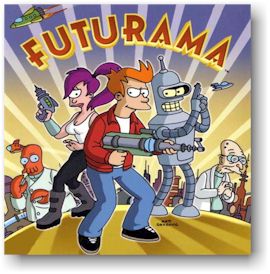 5 September 2008
5 September 2008
 4 September 2008
4 September 2008
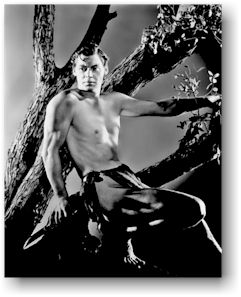 3 September 2008
3 September 2008
 2 September 2008
2 September 2008
 29 August 2008
29 August 2008
 28 August 2008
28 August 2008
 27 August 2008
27 August 2008
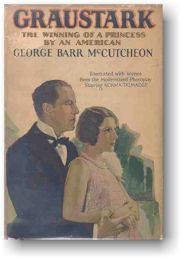 20 August 2008
20 August 2008
 19 August 2008
19 August 2008
 18 August 2008
18 August 2008
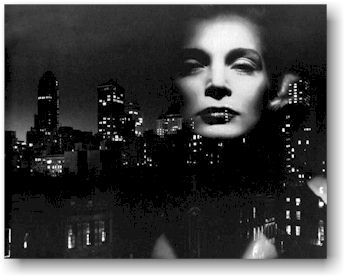 15 August 2008
15 August 2008
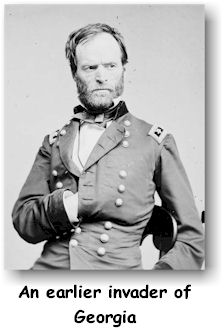 13 August 2008
13 August 2008
 12 August 2008
12 August 2008
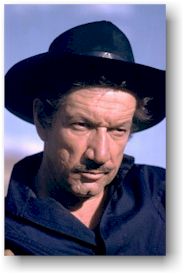 11 August 2008
11 August 2008
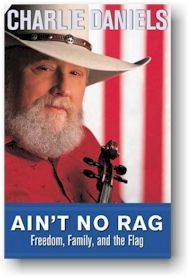 08/08/08
08/08/08
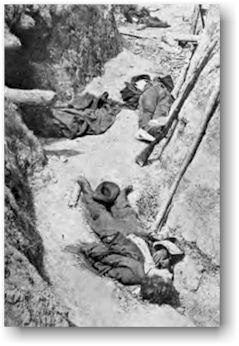 7 August 2008
7 August 2008
 6 August 2008
6 August 2008
 5 August 2008
5 August 2008
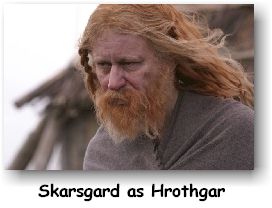 4 August 2008
4 August 2008
 1 August 2008
1 August 2008
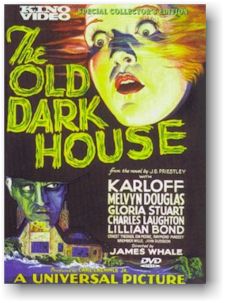 31 July 2008
31 July 2008
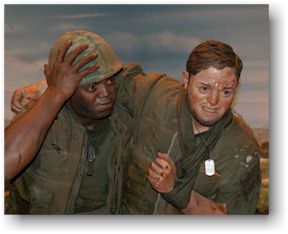 30 July 2008
30 July 2008
 29 July 2008
29 July 2008
 17 July 2008
17 July 2008
1.) Ed McMahon's home is in danger of foreclosure, and,
2.) Anheuser-Busch is about to be sold to the Belgians.
A few years back I had a similarly foolish conversation with this machine. It apparently hasn't learned a thing since then. Machine intelligence, indeed. But then, it could be argued, who is more stupid? An idiot, or a guy arguing with an idiot? Somebody once advised me, "Argue with a moron long enough and people will fail to see the difference." I take his point.
I will be on vacation starting tomorrow and returning Monday the 28th. (That is, if one considers overseeing the logistics of getting a daughter married a vacation, which I don't. All sorts of family and new in-law relations flying in and out of the area, etc.) So no blog updates until then, most likely. Go here, to lileks.com in the meantime. All sorts of good time-wasting stuff there. I like "Must Credit Acme," his look at old photographs.
See you when I get back.
I hope you enjoyed yesterday's little foray into military history as much as did my friend Bob: an e-mail exchange between us. I love that Churchill quote... I use it all the time.
Another frequent topic of discussion between Bob and I is, "What makes a film 'film noir?'" I once answered this one at length in an article somewhere, and a quick search turned it up in my archives. So here's a reprint for today's blog.
The first thing to understand is that film noir isn't a genre, like a Western or a Martial Arts film. It's a style, or a sensibility. For instance, there are what are called "off-genre noirs": Western noir ("Pursued"), Horror noir ("Dementia," "The Body Snatcher"), Science-Fiction noir ("Blade Runner," "Dark City"), or Costume Drama noir ("Reign of Terror," "Queen of Spades"). So influential was the style that, believe it or not, there are even some noirish elements in the 1946 Roy Rogers film "My Pal Trigger" and "Under California Stars!" (Read this if you don't believe me.)
So, not all noirs take place before 1950 in a city inhabited by Humphrey Bogart. In fact, there are only about twelve "private eye" style noirs from the classic period.
The truly amazing thing about noir in all the articles I've read is how greatly the critics disagree on what is required for a film to be classified as a noir. One critic, for instance, calls "King Kong" a film noir! But since this is a quickie lesson, here's a list. I'm safe in saying that a true film noir would have some or many of these characteristics:
1. A morally ambiguous protagonist
Half of the fun in film noir - besides watching them - is determining if a film can be properly classified as such. For instance, where does Roman Polanski's "Tess" (of the d'Urbervilles) fall? Period piece? Adaptation of a classic? Noir? After all, elements 2, 3, 7, 10, 12, 14, 15 and 16 are present. But nobody, to my knowledge, calls Tess a film noir. I don't.
How about "The Usual Suspects" or "L.A. Confidential?" Generally speaking, those would fall into the category of "neo-noir," or noirish films made outside of the classic period. While still film noir, they're different because the newer movie code permits more violence and sex to be shown - which puts the films in a somewhat different category.
There does seem to be one consensus of opinion among critics: if the film has an overall light-hearted tone, it can't be film noir. And yet. Charlie Chaplin's 1947 black comedy "Monsieur Verdoux" is considered an off-genre noir by some!
So, as you can see, the answer to the question "What makes a film 'film noir?'" is complicated.
In "Mayflower," that book I'm reading, I am now into Philbrick's account of King Philip's War. Fascinating! I read the section about the little skirmish known as the "Fight of the Pease Field," July 9th, 1675 near Pocasset Neck in Massachusetts. The English commander, Benjamin Church (shown at left), is honored on a U.S. Army Ranger's page here. Interesting guy. He kept twenty Colonists from being massacred by about 300 Indians by keeping his cool and persuading his men to keep theirs. At the end of it, he insisted upon recovering his hat and sword.
Read Philbrick's wonderful account of this interesting little military foray here. I liked the part about Church and his men being fired upon by the Indians en masse, and his looking back expecting to see them all dead. U.S. Grant wrote in his memoirs that you could be fired upon all day by somebody with a smoothbore musket at 100 yards and never get hit - they were that inaccurate.
What's fascinating about King Philip's War - and I'm going to have to read more about it, clearly - is the early experience that the colonists had at adapting the military tactics they knew as Englishmen to fight the Indians, who used tactics of their own. What's odd is that early on in the war, the colonial militia had bulky, inefficient matchlocks, which had to be mounted on monopods. The Indians used technically superior flintlocks. The militia also used pikes - great against calvary, not so great against Indians. The Indians specialized in the woodlands ambush, and had great speed and mobility. Obviously, the colonists (who were emulating Cromwell's Puritan New Model Army against an entirely different foe) had much to learn from the natives!
So... when the brilliant Major Robert Rogers came along 75 years later and adapted Indian tactics to form America's first true ranger unit, Rogers' Rangers, he had precedent.
I used to reenact with a unit that did a Rogers' Rangers impression in addition to their Civil War regiment. Photo here and here - Ft. Frederick, Maryland, 1986. They looked good! Note the green wool - all the better to blend in with the forest, my dear...
(By the way, are you aware of Rogers' "28 Rules of Ranging?" Still used today. My favorite is Number 5: Keep prisoners separate and examine them individually. Apparently nobody writing movie scripts in Hollywood ever read this one.)
The number one comment I used to hear from the great unwashed public when I was doing Revolutionary War reenacting (besides "It must be hot in that wool uniform") was claptrap about our winning the war against the British because we fought like Indians - dodging around behind trees and sniping at Redcoats and whatnot. Nonsense. First of all, it was more a case of the British losing the Revolutionary War than it was of our winning it. Secondly, George Washington was able to keep a viable army in the field. As long as he did the British couldn't leave and declare victory. But it's important to remember that, in general, our Revolutionary War was fought by colonists fighting the British the way the British fought: in long, disciplined lines of infantry slugging it out with smoothbore musket fire. Sure, there were American rifle companies that used different tactics, but it would be very wrong to assert that we won the war because we cleverly fought like Indians and the British didn't. I wonder where this notion got started...
Ugh. Monday.
You may think you know what hanky-panky is, but you really don't.
I went to see the Army Band perform Friday night; the highlight was their adaptation of the coronation scene from Mussorgsky's "Boris Godunov." A cool piece of music. I've liked it every since I was sixteen. Here it is on youtube. Interesting opera... the village idiot has the last word, as I recall. (Hmm. Looking this opera up in wikipedia, I see that the village idiot is actually known as a yurodivy, or a "Fool for Christ." Not quite the same thing. But whatever he is, I was right - he does get the last word.)
Interesting. I'm fond of thinking that a study of the past will sometimes puzzle modern readers. (My article about it.) Perhaps an authentic holy man - a "fool for Christ" will, too. For instance, John the Baptist must have seemed very outlandish.
At yard sales on Saturday morning I came across half a Volksagen for sale for $20. (It was used as a float in a high school parade.) I passed on this deal. Driving by later, I saw it was gone so I presume they made a sale.
As I wrote on Friday, "Mayflower," that book by Nathaniel Philbreck I'm reading, is excellent. The pages are zipping by. Here's another excerpt which addresses the famous Plymouth rock the Pilgrims supposedly stepped upon and the terrible sense of isolation they must have felt.
I took a friend (former jarhead, like me) to the Marine Corps Museum on Sunday. I once again admired my all-time favorite Norman Rockwell painting, "Homecoming Marine." In the Sixties and Seventies it was fashionable for hip and intellectual art critics to deride Rockwell, but nobody tells a story in a single image better than he does, in my opinion.
It's Fri-aye-day, it's Fri-aye-day; hey nonny nonny and a hot-cha-cha! (To quote Spanky MacFarland.)
Writing that blog yesterday about horror show hosts gave me an idea! My friend Mal Stylo pointed out that he used to watch "The Gladiators" show every Saturday morning, where some local channel broadcast crummy Italian sword and sandal epics. To my knowledge, nobody has yet hosted one of these. So there it is, an activity for my retirement years on Fairfax Cable Access: SWORD AND SANDAL ACTION THEATER! Cue music: a Roman march from Ben-Hur comes up, with the appropriate title card (big, epic lettering)... me and Mal are shown in the interior of a Roman tent - dressed in period armor, of course - and we discuss the merits and demerits of the films shown during commercial breaks. Various scantily-clad women can be featured as guest slaves, and be seen on the set filling cups with wine and looking appropriately submissive, etc. Every now and then we could be interrupted by cheering crowds to give a thumb's up or thumb's down. An occasional location shots outside of the Lincoln Memorial, or some other neo-classical building. We sponsor spear tossing contests. (Down, Venus! Up, Mars!) Have guest barbarians on the show to do a point/counterpoint thing. Man, what a concept! Tell me this won't attract an audience! This one's even better than when I invented the Sony Walkman as a sixteen year-old, back in 1972...
From my desk calendar: Archaic animal lore. Okaaayyy... so just about anything a dog did foretold death. No wonder I'm afraid of them.
From another desk calendar entry: Excuses for Drinking. As if rugby players need any.
I am now reading "Mayflower" by Nathaniel Philbrick; so far it is excellent. Can't wait to get the King Philip's War parts... Anyway, my wife is the 8th great-granddaughter of one of the Mayflower passengers, Resolved White (1614-1678). This is through the Edmund Rice (1638) Family, who are renowned as one of the notable families of the United States, producing many statesmen, authors, etc.
Me, I'm related to the guy who invented the snowmobile. My wife and I are also related, which came as a surprise one day when I was tracing some of her lines back and recognized one of mine. We're 9th cousins, three times removed - which is hardly related at all. (A relief to our kids.)
Anyway, here's an interesting excerpt from Mayflower. A narrow scrape - and that was before the Pilgrims even made landfall, where further dangers - and Squanto - awaited.
Tonight me and one of the Five Fathers go to see the Army Band, Chorus and Herald Trumpets perform at Kenwood Middle School in Arlington. 7:30 PM. Ought to be a good concert. FREE! (My favorite word.) See you there, maybe?
Weather looks good; have a great weekend!
While I readily admit that the current era of television, with many special interest channels, is nice, I miss the old days. Specifically, local broadcasting.
The thing I miss most of all are cheesy Saturday night horror show hosts. I have a hidden desire to be one, in fact. I grew up with two of them: Seymour and Moona Lisa.
Moona Lisa (real name: Lisa Clark) was something to behold. Check this out - a photo with legendary horror movie enthusiast Forry J. Ackerman. You can see that costume-wise, she was the inspiration for the later and much better known Elvira. She worked from the Sixties to the early Seventies in Southern California, and I miss her. She was a class act. (In fact, her comment is that Elvira cheapens the act - and I agree.) Her catchphrase (they all had 'em) was "Happy Hallucinations, Honeys," and a nice website tribute is here.
(Did you know that Elvira - real name Cassandra Peterson - was in the first Pee-Wee Herman film? She was the biker mama. Click here for a recent shot of the two of them.)
My personal favorite was Seymour (real name: Larry Vincent). He was gaunt and sarcastic, and generally had a demeanor suggesting that he'd rather be anywhere else doing anything other than hosting a show featuring the worst in old, crappy horror shows - which, of course, added to the fun of it all. Representative patter: "You're bigger fools than I took you for if you've stayed up this late for this little. When they called this bomb the sleeper of the year, they must have had a Nytol commercial in mind. Frankly, the picture you are about to see is so bad that it could bring back radio. Please, I beg you, take a sleeping pill before settling down to watch MA & PA KETTLE MEET THE FLYING SAUCERS FROM THE WHITE LAGOON, AD 1927, introducing Mary Pickford and Fatty Arbuckle."
His Los Angeles Local Legends page is here.
The horror show I really would have liked to have seen, however, I was too young for: the Vampira Show (real name: Maila Nurmi). But my father tuned in occasionally. I know because he described the opening sequence of the show exactly as is displayed on this youtube video from 1954. Check it out - can you believe that waistline? Nowadays she's better known as the spaceship-activated ghoul in "Plan 9 From Outer Space" and was a minor celebrity until her death in January of this year.
When I was going to college in Utah in the early 80's there was a Friday night show called "Nightmare Theater." It didn't have a host, just voiceovers (by a fellow named Ron Ross) and cheesy graphics set to Elton John's "Funeral for a Friend." You know, that "creepy" synthesizer part. Anyway, thoroughly bored, we once had some friends over to watch an Italian clunker starring Barbara Steele called The She-Beast (1966). We stayed up until nearly 2 AM watching this, as I recall. It's funny... to this day my wife and I might call some horrible female we know, "The She Beast."
When I first moved to Maryland in the mid 1980's there was Ghost Host (real name: George Lewis), which sucked. The Ghost Host had no personality at all. In fact, he was reciting Hamlet - the station reused the footage every week - with a new audio track simply dubbed over the video. Consequently the mouth movements were never in sync with the audio. (See it here.) Geez, how cheap. But as this was channel 45 out of Baltimore, what did one expect? I pronounce the show's name as if a real Baltimorion were saying it: Ghooust Hooust.
I never took to Count Gore DeVol (real name: Dick Dyszel) on channel 20 in D.C. But he does have an Internet horror show, so I'll give him credit for longevity and for updating his schtick.
And then there's Dr. Sarcofiguy (real name: John Dimes), currently broadcast over our very own Cox Cable in Fairfax County. The main problem I have with him is his penchant for taping from what looks like somebody's back yard. It's like not even trying. A little more production, please. I mean, how hard could it be to construct a reasonable dungeon set in one's basement?
Finally, I will call your attention to this. Some guy calling himself E-Gor clearly likes horror show hosts more than I do.
I stumbled across this at snopes.com, the urban legend debunking site: Reunion of two men and a lion cub they had raised. Okay, if it were me? I'd be terrified. Despite that uplifting music and the aw-shucks conclusion I find this video unsettling... that lion is just too big to engage in hugs with. And it's a lion. Lions can eat people.
I confess that I distrust and am somewhat afraid of large animals. I do not enjoy being around horses, for instance, and do not take to large dogs at all. Zoos? Never found 'em interesting at all. I'm not sure why, but my mother once told me that when I was very little, about three or four, I saw a Doberman attack my father and was very upset by it. Maybe that's why, although I don't remember the incident. You'd think I'd be over this as an adult, but no. I pass a large dog on the street, leashed, and while some friends might naturally lean over to offer the dog a hand to sniff and make friends, I'm suspecting that the dog is readying himself for a quick bite.
And then there's Petey, the Little Rascals/Our Gang dog. You know, the one with the bullseye painted around his eye. (Amusing fact: The ring was painted on by Max Factor!) Did you know that Pete was a PIT BULL? Geez. Yeah, yeah, I know, there's nothing inherently dangerous about Pit Bulls, they're perfectly safe, it's a case of media misrepresentation of the breed, etc. I'm not believing you. You watch those old shorts and see little kids playfully wrestling with Petey all the time. Scares the hell out of me. I half expect to see him suddenly wheel about and tear a chunk out of Wheezer's face or something. And every now and then you see a scene where Petey attacks a dog-catcher or some other designated bad guy, and you see that Pete the lovable pooch can indeed be an aggressive and fearsome enemy.
Okay, I will readily agree that perhaps I'm just paranoid on the subject of pit bulls. For instance, I'm sure most people would look at an old postcard image like this, "the Unexpected Visitor" and see something innocent and charming. It looks mildly sinister to me.
Anyway, it turns out that Pete the Dog, like many in Hollywood, has mystery surrounding him. There's a story that the first Pete was poisoned; that one is debunked by the dog's trainer. Another mystery is where he was buried - this is addressed in this article charmingly entitled More Poop on Petey. (Get it? He's a dog? Poop? Haw!)
As I was doing Internet research on Petey I came across this interesting image. The boy who is apparently taking second billing to the dog is Kendall McComas, who was known in the Our Gang shorts as "Brisbane." (I have never met anyone with this name.) Like many of the former Our Gangers, his end was unfortunate: he committed suicide at age 64, two weeks before his retirement. Like me, he was an electrical engineer. As you may or may not remember, much to his mother's disappointment he wanted to be a streetcar conductor, not President of the United States, because, "Boy, do they pick up the nickles!"
Whoops! A reader has pointed out that there are at least two more candidates for the Last Man Standing 1950's Rock n Roller title that was accorded to Jerry Lee Lewis (see yesterday's entry): Fats Domino and Chuck Berry, both still alive. So there's Jerry Lee Lewis, Fats Domino, Chuck Berry and Little Richard, all still performing fifty years after their first successes.
I have maintained for years that soccer is the lamest sport on earth. (Not surprisingly, other ruggers agree.) You can watch it for ninety minutes only to wind up with a score of 0-0. And the histrionics that players engage in when they're mildly injured (or not injured at all) puts the activity well into cake-buttedness.
But if definitive proof of soccer's lameness is needed, here it is: professional soccer players scoring against themselves. Pathetic.
I forgot to mention one activity I saw over this past 4th of July weekend: the Orange Hunt Community Association Fourth of July Morning Parade down Sydenstricker Avenue. I saw it being staged as I was at the neighborhood pool, so, being interested, I watched it set out from the elementary school across the street while my hot dogs were cooking on the grill. It was interesting. People in convertible cars threw candies out to children watching from the side of the street, enticing them to run out into the middle of the street to pick up the candy. I commented that I thought it odd that no Fairfax County policemen were present to control traffic, which caused one mother to cry, "Think of the children, for God's sake!" as if we were preparing to man the lifeboats on the Titanic. The cars driving by ran over a lot of the candy in the street, but they missed the kiddies.
More from that rugby book I'm reading, "Odd Shaped Balls - Mischief-makers, Miscreants and Mad-Hatters of Rugby" by John Scally: Welsh Wit.
Who are these mysterious faceless Brits?
I had a great weekend! On Friday night my wife and I and some other members of The Five Families went into D.C. to watch the rehearsal for the Capitol Fourth broadcast. Saw Huey Lewis and the News, Jerry Lee Lewis, etc. As long as I've lived here I've never done that (I hate crowd scenes, especially during the summer), so it was fun. Parking, set up, take down and exit were surprisingly easy. Fourth of July fireworks the next evening were a disappointment. The bridge from the Pentagon lot where we parked and ate to the riverbank where we normally watch was closed, and the prevailing breeze blew all the smoke towards us, obscuring the show.
By the way, the announcer introduced Jerry Lee Lewis as "the last man standing" among the first wave of 1950's rock and rollers, but he isn't. Little Richard is still alive, too. Whichever one of them outlasts the other will be the last man standing, I think.
On Saturday my daughter and I took a ride to the National Museum of the Marine Corps; always happy to go there and I'm happy to live nearby. I bought a USMC hat and some stickers. Meredith bought a postcard for a high school friend who is now in Marine boot camp in Parris Island, the lucky guy.
I had an epiphany yesterday. As the rear brakes on my (now detested) minivan were making some noise, I bought some brake shoes and commenced to replace them. I've done this particular maintenance operation before but have never enjoyed it. Replacing pads on rotors is so much easier. Anyway, the job just wasn't in the cards yesterday... I couldn't get the drum over the new brakes (yes, I know how to compress the cylinder and was doing that) and so, after much sweaty cursing I reinstalled the old brakes and took the car into my mechanic to have him rebuild the brakes. That's it. No more brake shoes, ever. It's a dirty, miserable job that causes my back to hurt, and I never feel entirely sure that I've gotten all the stupid levers, springs, hand brake cables and parts back in their right places. So, from now on, that's a job for the mechanic. I'm too old and wealthy for this. What's more, from now on out, I refuse to buy a car with shoes. It's four wheel disks or nothing. Brake shoes are so last century...
I am now reading "Odd Shaped Balls - Mischief-makers, Miscreants and Mad-Hatters of Rugby" by John Scally. The cover is a little embarrassing to be seen with on the Metro. Here's a representative page. As you can see, there are all sorts of in-jokes and references. It's a good thing I know something about world rugby ("Who's Gareth Edwards?") or this book would be dreadfully flat.
In one of the excerpts, rugby forwards are referred to as "donkeys." I have heard this before, from a scrum-half that used to play with us. He always tactfully (and correctly) added, "The donkeys do all the hard work." The whole thing about backs vs. forwards provides much humor in rugby. Here's a representative article. And another. And another. And another.
The book also has a good quote about the position I played, second row: "Playing in the second row doesn't require a lot of intelligence, really. You have to be bloody crazy to play there for a start." - Bill Beaumont (a famous second row)
Two more: "The locks must be the grinders in the pack. They must clean out rucks and mauls, take line-out ball and kick-offs, and put in tackles. Not spend the day on the wing. A tight five can only be rated on how it does the basics. Not on how many tries they can score." - Former South Africa hardman Krynauw Otto tells his successors in the Springbok second row to cut down on the flashy stuff and get back to basics when they face Argentina. (June 2002) "Lock forwards seem doomed to toil in obscurity. Many years ago, in the seasons when one lock held the 2-3-2 scrum together, Leo Fanning, a wise and witty Rugby writer, said that the mission of the forward was to be always to the fore in the field and to enjoy a back seat in the newspapers. He also said that the lock forward was frequently, with good warrant, the most profane man in a team." - Gordon Slatter, Football is 15
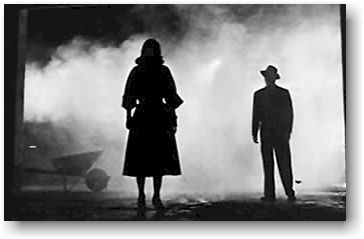 16 July 2008
16 July 2008
2. A femme fatale, usually blonde
3. A central crime
4. High contrast black and white photography, deep shadows
5. Odd, jumbled framing
6. A voice-over narrative; story told in flashback (the plot is therefore inevitable)
7. A convoluted plot, unexpected turns
8. The men wear fedoras
9. Everyone smokes
10. A fatalistic or cynical philosophy ("The little guy can never win")
11. An urban setting, usually at night (the title sequence often features the city at night)
12. A sad ending, or a less than entirely happy ending
13. Right-wing directors: a police procedural style of plot
14. Left-wing directors: pronounced social commentary
15. The past comes back to haunt the protagonist
16. A couple on the run from the police
17. Made between 1940-1960 (around 1948 was the peak)
18. A dreamlike mood
19. The protagonist is emotionally detached and cool
20. The bad guys are sadistic and/or psychotic
21. Desire and desperation are often present
22. Corrupt authority figures
23. Adapted from a book by Dashiell Hammett, Raymond Chandler, Mickey Spillane or James M. Cain
 15 July 2008
15 July 2008
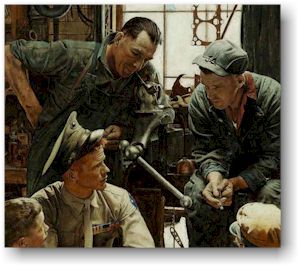 14 July 2008
14 July 2008
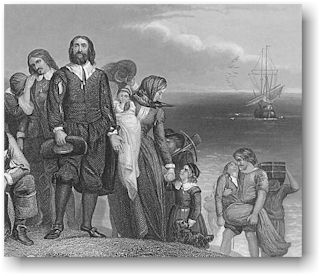 11 July 2008
11 July 2008
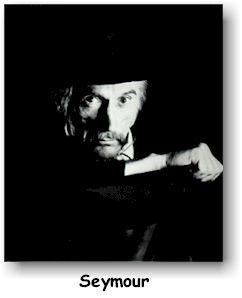 10 July 2008
10 July 2008
 9 July 2008
9 July 2008
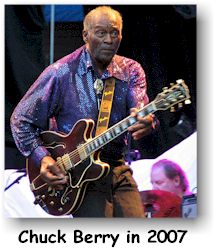 8 July 2008
8 July 2008
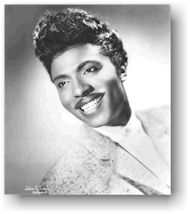 7 July 2008
7 July 2008

I was wondering when today was going to get here.
Check this youtube video out: Gene Simmons of KISS on the Mike Douglas talk show, 1974. In case you don't know, the target demographic of the old Mike Douglas show was extremely conservative, like ages 55-80 or something like that. Not unlike the old Lawrence Welk Show. And here's the bat-lizard himself, with mile high platform boots and snakey tongue. So, it's a funny juxtaposition to begin with. But what makes it even funnier is the presence of borscht belt comedienne Totie Fields, who is not at all impressed or intimidated with Gene. You've got to love the expression on her face when Gene, pathetically in character, muses about biting throats. Best of all is her line, "I bet you're really just a nice Jewish boy under all that!" (Gene Simmons' real name is Chaim Witz; he was born in Israel.) "You can't hide the hook!" (Nose.)
I remember Fields as being a frequent host on various talk shows during the 60's and 70's. I don't recall thinking that she was especially funny at the time, but my appreciation for her sense of humor has increased. A diabetic, in 1977 she had to have a leg amputated. Here she hilariously describes shopping for a prosthetic leg.
There's a book I want to read: The Seven Daughters of Eve, by Bryan Sykes. It has to do with mitochondrial DNA, and the mitochondrial most recent common ancestor (mt mrca) of every living human. You, me and everyone else has her mDNA. Sykes called her "Eve," which is confusing. She's not a first human female, nor is she the helpmeet of the Y-DNA Adam (who lived approximately 30,000 years later). And... well, read the article.
(Where would this blog be without wikipedia?)
Anyway, mitochrondrial Eve is your mother's mother's mother's mother... and so on. How far can you go? I can go back to my 10th great grandmother, a Frenchwoman named Helene Tellier, who was born in Paris in about 1605. Notice how, in this list, the name Mary (Marie in French) is so common. My Mom told me that everyone in her family, and she was one of eleven siblings, got the name either "Mary" or "Joseph," depending. When she told me that I instantly thought of Larry, Darryl and Darryl. But that's not all, oh no. French-Canadians were apparently addicted to names. Her sister Alice (Mary) was usually known as Shirley (Mary). No, Shirley was not her middle name. Her brother Ronald was known as Tom. Why? I don't know. Thomas was not his middle name. And looking at the federal census for 1930 I find a "Tressie." Who on earth was that? I have no idea. The names of the kids seem to change each decade, too. Same kids, different names. My grandfather must have had a smile on his face when he was being interrogated by the census taker.
And don't get me started on French-Canadian dit names again...
All of which leads me to this funny little genealogical in-joke. If you've ever done any family research you'll get the humor.
I am now reading Gastroanomalies, by James Lileks. Lileks is a wonderfully funny writer - his famous website is here - and this is his second book collection of images from 1930's, 1940's and 1950's cookbooks. Mainly, photos of the venomous swill of the era with funny captions. A couple page scans will suffice to give you the "flavor" of the piece: Eyes, Screaming meat. It's hard to believe that Americans considered eating this crap. Anyway, if that's not enough to kill your appetite, here's the online version of his first book, The Gallery of Regrettable Food. Browse through that and see if you can hold your last meal down.
Have a great Fourth of July three day weekend! Tomorrow night we're going to do our usual thing: park in the North Parking lot of the Pentagon, possibly put up the minivan hatches and tarps for any stray thunderstorms, and have a tailgate dinner with the Five Families. Then, walk to the nearby Lady Bird Johnson Park and set up folding chairs to watch the firework show, right across the Potomac. This is the way to do it!
I watched "C.S.A.: The Confederate States of America" (2004) last night. It's a fake documentary - mockumentary - based on the South's having won the Civil War. Being a Civil War reenactor and buff, I felt I had an obligation to watch it.
It was DREADFUL. It wasn't anywhere near as clever, as funny or as thought-provoking as it thought it was. And I write this not because I do Federal reenacting - really, I can keep an open mind about the consititutionality of secession, Southern political thought, etc. It was just so heavy-handed as to be nearly unwatchable. For one thing, it presumes that if the South had won the Civil War slavery would be perpetuated and continue to exist into the modern day, something that no serious historian ever proposed. I believe just about every book I have ever read about the Civil War mentions that slavery was a dying institution by 1861, and probably wouldn't continue even if the South had been able to broker a peace with the North. So it starts with a highly questionable premise. But okay, let's enter into the world of the work (as my English Lit professors used to say) and give them this one.
You also have to accept the film's premise that, after Gettysburg and war's end, the South could somehow dominate the North militarily, socially, economically and industrially so far as to be able to rename the United States of America the Confederate States of America into a later period, including all fifty states. And South America! Please. I suspect that the writers of this documentary never got around to reading many books about the 19th Century North and the South.
One thing's for sure: the producers did very little research on Confederate vexillology. They kept showing the Confederate navy jack (a rectangular flag) being used as the national flag, and a Confederate battle flag (the square one) is flying over the White House, for example. The real C.S.A. National Flag was a white affair with the familiar starred X in the upper left corner. The flag also had a red vertical stripe on the right edge. Here. You never saw this one in the film. Oops.
By about the half way point, I got very tired of this production. And this film included something I have never before seen in a film: a misspelling on a title card in a (fake) news broadcast. This film was that amateurish.
The only edifying thing about C.S.A. were the references to various actual household products and places featuring outrageously sterotypical black figures. One such was the "Coon Chicken Inn" located in, I hate to say it, Salt Lake City. (It was a chain and there were other locations, but the company was based in Salt Lake City.) Check out this mind-blowing postcard; one entered the restaurant through the mouth of an enormous black man's face. Or what passed for one way back when. Amazing.
Funny thing, though... while making implicit criticisms of black stereotypes, the producers were happy to use stereotypes of white Southerners in this film. This suggests to me that their thought was that there's nothing wrong with stereotyping people as long as they're politically acceptable stereotypes to advance an agenda.
Anyway, C.S.A. was an awkward, clunky and poorly-written mockumentary which does little, if anything, to cause one to consider American history or improve race relations in America. Avoid.
From my desk calendar: More Tom Swifties.
There are three mysterious natural numbers that seem to describe our universe in some way. (And no, one of them isn't the speed of light, c. I'm talking about pure numbers, not rates.)
3.1415926... - pi, the ratio of a circle's circumference to its diameter
Like many people, they are irrational - that is, they never repeat (unlike many people).
Pi: You know about this one as it's the most famous of the constants. It's also the name of an excellent independent movie made in 1998. The plot concerns a young mathematician who stumbles across a special 216 digit number that is the Hebrew numerological name of God - which can also be conveniently used to predict the New York stock market. So people are after him. It's what you might call a mathematical thriller, believe it or not.
In college, one of my calculus profs told me that 3.14 (and so on) upset the Greeks, who tried to understand why an elegant shape like a circle didn't have a correspondingly elegant value to describe it. So, peeved, they named it with the Greek letter that had the worst connotation, pi. (You know, like how we have an "f-word?") But wikipedia has this: "The constant is named pi because pi is the first letter of the Greek words for periphery and perimeter, probably referring to its use in the formula to find the circumference, or perimeter, of a circle." Who is correct?
Did you know there's a Pi Day? How nerdy.
Phi: Used as a ratio this is a value that describes the growth of living things (sunflower seeds, nautilus shells, ferns, petals on flowers, etc.) The Greeks prized architectural proportions based on phi as especially pleasing to the eye, and when we design postcards, rectangular stamps, 3 X 5 index cards and neo-classical government buildings in D.C. we are perpetuating this obsession. But, once again, phi is an annoyingly inelegant number, like pi. I'm sure there's a philosophical point that could be drawn about how "ugly" numbers create beautiful things - but I won't make it.
By far and away the best visual explanation of phi I have ever seen is a Disney short, "Donald in Mathmagic Land." (It also does a great job in explaining how to make billiards shots.)
e: Too hard to explain. It has important properties in calculus, which I got tired of deriving and proving mathematically in college classes. But check this out, from the wikipedia article: "In the IPO filing for Google, in 2004, rather than a typical round-number amount of money, the company announced its intention to raise $2,718,281,828, which is e billion dollars to the nearest dollar."
Geeks.
Great weekend! On Friday night, my reenacting pard Chris scored some VIP passes to see the Marine Corps Evening Parade (the one with the silent drill platoon you sometimes see on TV) at their Eighth and Eye Barracks in D.C. Various NCOs were on hand to interpret Marine Corps customs and traditions and barracks history for the crowd. I got to see the official USMC mascot, Sgt. Chesty the Bulldog. Also met the Drum Major for the Marine Corps Band - very cool. Best of all, we had snacks in the Staff NCO club afterwards. A splendid time was had by all!
At Saturday morning yard sales I found yet another treasure trove of Lego, this time for only $6. Must be up to a thousand or so pieces there (those tubs are deeper than they appear in the photo). Okay, that's it - no more grandchild Lego purchases for grandchildren I don't have!
Sunday I got a lot of annoying little bits of work completed around the house, including pulling down dead branches high up in our weeping willow. A wind storm had snapped a branch, causing all the willows below the snapped section to die. So for a while we had a brown and green willow tree in our front yard. Not pretty.
Saw U-571 over the weekend. A good film, but while watching it I kept thinking of other submarine films, like the superior Das Boot. But... it was a good film. My main complaint with it is everyone else's commonsense complaint: what's with giving the Americans credit for capturing the first Enigma machine? That was a British achievement. Way to insult an ally, Hollywood. Would it have been a lesser film were it based more solidly on actual history? No, of course not. So, then, why not make an historical accurate account? That kind of thing drives me nuts about Hollywood - they're always willfully getting it wrong. And then spending time and money with publicity emphasizing how historical accurate the production is. Blockheads.
Also saw the Gregory Peck Horatio Hornblower film from 1951. Not too bad, but the more recent A&E series starring Ioan Gruffydd (British casts and direction) is much, much better. If you haven't seen any of the episodes, you should. They are truly first class. Definitive Forester, I think.
And now... Monday. Bleah. Roll on, Fourth of July three day weekend.
I like what are called dark rides. I have ever since I was a little kid, riding the Peter Pan ride at Disneyland. I recall being frightened when our ship would dip down and head towards skull rock - for some reason that freaked me out. Later, my parents would try to get me to eat a tuna sandwich on that smelly Chicken of the Sea pirate boat in Fantasyland, which just happened to be parked next to yet another skull rock. No, thanks.
Have you ever counted the number of skulls and skeletons in Disneyland? Hundreds. They appear in the Snow White and Peter Pan dark house rides, on the Jungle Cruise, in the Haunted Mansion, in the Indiana Jones ride, and in large numbers in the Pirates of the Caribbean ride. One could make the assertion that a rotting corpse is as emblematic of Disneyland as Mickey Mouse. It's curious, given all the promotion about happiness that Walt Disney claimed for the place. Fact was, Walt had a dark side. From some text about a Neal Gabler biography: "Gabler also reveals a wounded, lonely, and often disappointed man, who, despite worldwide success, was plagued with financial problems much of his life, suffered a nervous breakdown, and at times retreated into pitiable seclusion in his workshop making model trains." I suspect he may have had a morbid fear of death. It seems to come out occasionally in his classic animated films, as when Bambi's mother is nailed by the hunter, or in Snow White. And I have always had a sneaking suspicion that there is a gloomy subtext to Mary Poppins.
The tradition continues... when I was at Downtown Disney in Orlando earlier this month this is what I found greeting guests walking into the big Disney store: a display of quivering, moaning decomposing skeletons. Am I the only person who finds this a bit odd?
I am now reading "A History of the Vikings" by Glyn Jones, a 430 page book I bought in 1997 (yes, at a yard sale). It's very scholarly and I have avoided reading it ever since. But every book in my collection has its day. Jones points out that Bronze Age Scandanavian rock wall carvings feature men with ridiculously large erect phalluses, which I guess suggests that these proto-Vikings thought a lot of themselves.
A friend of mine and I attended a concert given by the U.S. Army Men's Choir last night; it was excellent, as I knew it would be. (I'm telling you, these armed forces musical ensembles are top notch.) They did one piece entitled "Last Letter Home" by Lee Hoiby, which took as its text the last letter written by a soldier, PFC Jesse Givens, serving in Iraq in 2003. He was killed when his tank crashed into the Euphrates River. It was very moving; when it concluded nobody wanted to applaud right away to break the mood. The letter is described here. Here's a youtube video. God Bless all such as Givens who give their lives in our defense...
They also sang a beautiful, dreamy piece in Latin entitled Lux Aurumque.
Actually, last night's program was light-heartedly entitled "Stuff and Nonsense" after a three part piece by Dwayne Milburn. I liked the middle part, a poem by Ogden Nash entitled, "The People Upstairs." The last part was funny, too: New Kid on the Block.
Have a great weekend!
I have but three words: ICE ROAD TRUCKERS! I saw an episode of this show on the History Channel last night... Yeesh! Talk about grueling conditions. They have shots of big, heavy sixteen-wheelers rumbling across the ice taken from below the ice, in the water! Amazing. An engrossing series. You wonder why anyone (other than Wolverine) would want to live up there. ("Up there" being northern Canada.)
But... what's it doing on the History Channel? Isn't this a topic more suitable for, say, the Learning Channel or the Discovery Channel? Frankly, I have to admit that the old HC has been something of a disappointment. It started off with an over-emphasis on World War II (I know reenactors who call it "the Hitler Channel") and now seems to be heading off in just about any old direction.
One of my favorite reality series, the endearingly contrived and lame "Who Wants To Be A Superhero?" on the Sci-Fi Channel, doesn't seem to be headed for a third season (it normally airs in July). A pity. It's just kitschy and goofy enough to be enjoyable.
I am now reading "The Look of the Century - Design Icons of the 20th Century" by Michael Tambini. Yes, a yard sale book - $1. It examines how all sorts of manufactured objects - cars, furniture, clothing, hair dryers, typewriters, etc. - have changed from 1900 to 2000. So far the most unexpectedly interesting part is about jukeboxes. (Page one, Page two.) I really like that AMi Continental 2. That plexiglass dome is the living end, as we used to say. Lots more fascinating jukeboxes here. By 1967 the designs started to get boring, I think...
Berkeley Marines. Actually, I'm putting this link here because I can't watch the video at work very well; if it's here I'll remember to watch it at home. Berkeley, California, is an odd place. It's simultaneously the nation's biggest supplier of pathetic hippies and excellent rugby players.
Last but not least, there is FACIAL, my son Ethan's blog. "Starting June 20th, 2008 and ending June 20th, 2009, I will draw a single cartoon face EVERY DAY. I've been cartooning since age 3, and have decided that faces are one of the most interesting things to draw. You may see some faces that are unusual, plain, odd, abstract, or ugly. Sometimes the face will depend on my mood for the day, or the amount of time that I have to draw." I have a hunch mine is bound to be one of the 365...
Here's an interesting blog link sent to me from a British reader: "German Bunker in my Garden." "Our house is in an old quarry, and when we bought it five or so years ago, the previous owner told us that there was a tunnel built by the germans during WW2. He said it was big enough to drive into, and that his father had buried the entrance during redevelopments, but not before filling it with stuff that was lying around the property..." Some history from the Channel Islands, in the U.K.
But that's a promising blog. Today's subject is bad blogs. I was talking to a friend yesterday on the bus home about bad writing and, by extension, bad blogs. About a decade ago one fellow came across one of my web sites on the Internet and mailed me a copy of his self-published book, entitled, "It's in the Book." The idea was that when he talked to people and they asked him his opinion of, say, beer, he would refer them to his book, saying, "It's in the book." Hence the title. Clever, huh? That way he can almost entirely avoid any conversation at all - just continually refer people to a book he's written.
It was truthfully one of the worst books I had ever read. This fellow was single, apparently never thought about anything other than what he could buy, and, really, had nothing to say. And I suspect that if you have nothing to say conversationally, you have nothing to write about, either. Anyway, as I recall, a typical chapter went something like this:
Chapter Five - Beer
I work as an expatriated American defense contractor in Kuwait. I like beer like most guys. I like Bud but you can't get that here. So I drink the local stuff. It's mostly good but sometimes bad. I make a lot of money so I sometimes order beer from overseas. I get Bud Michelob & Coors. I like Coors the best. It has a flavor I like. Did I mention I like beer. Ha! I think America is #1 because we have better beer. Coors is my favorite.
I read this volume from cover to cover - it was like a trainwreck: horrible, but you can't avert your eyes - and then encouraged my wife to read it. I was sitting in the living room one day when I heard a scream from upstairs, followed by, "Give me an icepick so I can gouge out my eyes!" She got about twenty pages into it and had to quit. Good bad writing is like that - it provokes a powerful response. I then threw out the book and was sorry ever since that I did. After all, owning the worst of something is almost like owning the best of something.
I once was directed to an early Internet blog by James Lileks, who writes very, very well. He was kind enough to link one of my sites on his site. The blog in question was written by a lunkhead who apparently had no other higher functions in life than drinking beer and getting laid. (Yes, yes, I know what you're thinking, "But aren't rugby players like that?" No, they're not. They are, by and large, far more intelligent than virtually everyone gives them credit for.) Incredibly, this paleolithic blogger considered himself something like the beau ideal of manhood. And yet, and yet... reading his braindead journals was fascinating. Once again, like witnessing a trainwreck, to use a tortured analogy.
So I'm looking for BAD blogs. The kind of cringe-inducing nattering that causes you to shake your head and wonder about the future of humanity. Do you have any candidates? Tell me! You know, like bad Christmas letters. That's what I'm after!
(And, no, I have no illusions about my own writing, Gentle Reader. Somewhere out there I know there are e-mails along these lines: "Check out this blog by some clown calling himself 'Brigham.' He thinks he knows it all and compulsively writes about only himself, and other weird, random stuff. Who cares?")
Saw a funky, late-period film noir on Turner Movie Classics last night: "The Crimson Kimono" (1959), directed by Sam Fuller. As it doesn't seem to be released on VHS or DVD, I've waited years to see it; it's one of those noirs I've known about but haven't seen. It's fairly typical of Fuller's sensational style: abrupt edits, odd characters, over the top situations. For instance, in the first five minutes or so we see a stripper (Gloria "Voluptua" Pall, shown above) doing her show, taking a drag off a cigarette backstage and suddenly getting shot, falling dead in the center of Main Street in Los Angeles. The title of the movie, by the way, is from the name of her proposed new strip routine featuring a karate artist breaking a piece of wood in two.
The most fun about it, to LaVey, the founder of the Church of Satan, worked at the Burbank Theater as the organist on the house Wurlitzer.
LaVey, who shaved his head and wore a goatee long before it became fashionable, was a somewhat popular guest on talk shows in the Sixties, as I recall. Well, I got sick of looking at his puss, anyway. Somewhere, I think, there's footage of him discussing wickedness with Merv Griffin circa 1968. That ought to be funny. ("Oooooh. Stepping on the Bible. That's so evil, Anton. We'll be right back!")
From my desk calendar: FAGOTTIST - one who plays the bassoon. "You could tell by her lips that she was a faggotist." No comment.
I must be getting old. I just spent a good while working out an electronic slide show birthday card for a friend at hallmark.com, something I'd never consider at an earlier age. (Hallmark cards and birthday cards in general have never really been my thing.) I guess I figure that the older I get, the more big a deal every birthday is!
I'm almost done with that 1066/Bayeux Tapestry book I'm reading (see entry for 20 June). One of the odd features about the famous tapesty is that it mentions people for whom we haven't a clue as to their identity, for instance, the dwarf Turold. Who was he? And why is he singled out for mention? The name "Turold" was fairly common in Norman society, and so there could be any number of candidates. A Turold is supposed to have written the famous medieval epic "The Song of Roland," and the book's author, Andrew Bridgeford, makes a rather unsatisfactory claim that the Roland author and the dwarf Turold are one and the same. Hmmmm.
The juiciest mystery behind the tapesty is certainly the section captioned, "Where a priest and Aelfgyva" (dot dot dot you figure out the rest, nudge nudge wink wink). What has incited comment for many years is the naked man in the border, mimicking the pose of the priest and gesturing up Aelfgyva's skirt. Think of it as a sort of 11th century Jerry Springer thing. It has apparently nothing to do with the story the tapestry deals with, the 1066 invasion of England by William the Conqueror. The inescapable conclusion is that it refers to some contemporary sexual scandal, but we don't have a clue as to what it was. Bridgeford writes a lengthy chaper about an historical Aelfgyva, but ends by stating that her connection to the 1066 invasion must still remain unknown.
Anyway, the Bayeux Tapesty reinforces my pet theory that REAL history is always a bit puzzling. And, once again, "The past is a foreign country. They do things differently there." - L.P. Hartley
Fun fact: When a team of Victorian embroiderers reproduced the Bayeux Tapestry in the 20th C., they put a pair of pants on the little guy in the border. Some online commentary about Aelfgyva is here. And on that salacious note I'll end.
I got my wife to look at a website that sells Bayeux Tapestry reproductions from Belgium. (I like the one entitled "The Battle.") And the other day we got our economic stimulus check. (Hopeful smile.)
Finally, one of my sites is now the definitive online reference for what the San Val drive-in theater in Burbank, California looked like in 1972. (Can you imagine living next door to this, looking out your window and seeing scenes from "Super Fly?")
My quest to provide increasingly bizarre niche information to the masses continues apace.
From my desk calendar: Marriage terminology. It lacks some of the choice terms some married couples use to describe their relationship with one another. Which reminds me of a story.
When I was a little boy, let's say about four or so, we had crazy, middle-aged neighbors named Edith and Bob who fought continually. They'd have loud and angry arguments, and many is the time I can recall playing in my back yard and seeing Bob, in his wife-beaters, walk outside, slam the back door loudly and yell at his wife, "BLOW IT OUT YOUR ASS!" as a final word to some disagreement. As this was something of a favorite retort, I used to hear it rather frequently. So... one night, when company was present, Mom told me to go and clean up my room, and, being miffed at thus being dismissed, I innocently repeated Bob's line to her. I recall a stunned look on her face which strongly suggested that I had erred somehow.
Fast forward forty years or so, and I am greatly amused to hear that my son and his friend enjoy dining at Bob and Edith's, a diner in Arlington County. (He wondered why my wife and I started laughing when told of the place.)
I have a photo of Edith and Bob: click here and scroll down about half way. It's the pool photo.
One night Edith got drunk and, remembering some slight my mother had said or done, drunkenly staggered over to our front door and started yelling abuse at Mom. Edith then opened the screen door, walked in and proceeded to assault her. Dad couldn't do a thing because he was just back from the hospital earlier that day and was as weak as a kitten, and was lying on the sofa. As it turned out, Mom, a large-boned French-Canadian woman of fearsome strength, was kicking Edith's butt and decidedly getting the best of the tussle. I can still recall Dad yelling out the door, "Bob! Come and get Edith!" He eventually did, dragging Mom off of her, and that was the end of that friendship; no more pool invitations for Edith and Bob.
You see from this what a genteel upbringing I had.
Yard sales were pretty good on Saturday morning. I found a big 617 piece Lego set - the Dino Research Compound - for $3, probably $50 or $60 when new. I'd say about 614 of the pieces were actually in it (as you can see, I sat on the floor and built it on Saturday). Also thrown in was a big universal set and a little arctic exploration vehicle kit of some kind. As those of you with kids know, Lego sets are expensive. I always like finding them at yard sales.
This purchase was something of a milestone in that it was my very first grandfather purchase. No, one isn't on the way, but I didn't buy this for myself or any of the kids. It's a future presentation.
What motivated this odd desire? When I was twelve I took over the family console stereo, and started digging though the family's record collection finding stuff I liked. One album Dad bought in the past was a Columbia Masterworks sampler, which had a fold out section promoting a bunch of their recordings. "Hey, this is cool," I thought. Ever since, I've casually searched out these recordings and buy them when I find them. One time, when I was eighteen, I stopped in a record store and was amazed to find Columbia Masterworks on a shelf, in order of their catalog numbers. "Some day..." I thought.
By the way, I have always liked their logo, what record collectors call the "walking eye." (Which is suggestive of an Lp and a tonearm.) I am very sorry to report that Columbia Masterworks are no longer known by that name. Sony bought the catalog in 1990, and releases are now known as Sony Classical. Paugh. But they released these great old Lps on CD in their original jackets, which is a step in the right direction.
Friday! Hooray!
I am now reading "1066 - The Hidden History in the Bayeux Tapestry" by Andrew Bridgeford. So far, it is excellent. You know the Bayeux Tapestry, don't you? You may not recognize it by name, but you've probably seen sections from it. The wikipedia entry is here. It is at once one of the great works of art and great historical documents of Medieval Europe. The beginning of this (revisionist) book states that it's not pro-Norman propaganda, as is usually written, but really a subversive Anglo-Saxon account. I read with interest how that is to be established. Oddly enough, what it isn't is a tapestry - it's really an embroidery. And the French call it La Tapesserie de la Reine Mathilde, according to an old belief that it was ordered made by William the Conqueror's wife Matilda. It isn't that, either.
I understand in Bayeux, in France, the shop associated with where the tapestry is on display sells all sorts of 1066-related trinkets and gifts. If I ever go there I'm buying the place up. About twenty years ago in a local mall I once saw a Bayeux Tapestry reproduction of one of the scenes for about $300; at the time we didn't have the money for it. A pity.
Want to see something really cool? The animated Bayeux Tapestry. It's abridged from the complete story the tapestry tells, but it's still excellent.
I once attended a reenactment of the Battle of Hastings in Maryland in October 1988. As medieval reenactments go, it was the usual thing: guys with wooden swords banging on guys with wooden shields. (We black powder burning types scorn this, generally.) It was quite noisy. But the Norman reenactment unit, Milites Normannorum, was impressive in that they got the chain mail and arms right. The guy who portrayed William the Conqueror was impressively dedicated as well, and shaved the entire back of his head in the Norman style for authenticity. Well, I was impressed. Nowadays it's well within "xtreme" grooming styles.
The other night I enjoyed the British "The Cruel Sea" (1953) one of the Don Tracey collection of Maritime Videos. Brilliant, a truly excellent film. In fact, it was one of the very best World War II films I have ever seen. I now have a new name for sausages: "Snorkers! Good oh!"
Me and a friend (whose birthday it was), went out to Manassas to see a U.S. Navy Sea Chanters performance, which we really enjoyed. Given that he spent twenty years in the Navy, he probably enjoyed it more than I. They did a great Frankie Valli and the Four Seasons/Jersey Boys set, and also asked the musical question, "What Can You Do With A Drunken Sailor?" But as I've blogged before, I really like the local U.S. military musical ensembles and see them whenever I can. Top notch musical performances for free... Army Band, Navy Band, Air Force, Marine Band.
Finally, I watched an interesting show on the Speed Channel last night: "Livin' the Low Life," about low rider cars. (By the way, somebody needs to put Vida Guerra and Kat Von D in the same show...) Being from L.A., I've always been interested in these. Not because I think they're especially artful, but because of the motivations and social culture behind them. One of the questions asked in this particular show is one I've always wondered myself: Why are Impalas so especially popular? The answer given was kind of weak - "Because they look good." I suspect it's because they're kind of blocky and give paint artists a lot of flat surfaces upon which to throw paint. And it's also an agreed-upon social/cultural gathering point of sorts.
At any rate, I used to get a kick out of watching those low riders throw 4,000 pound cars ("hoppers") up and down with hydraulics... it really is a sight to see.
Have a great weekend!
Well, that's it for us with the public school system! My youngest child graduated from Lee High School earlier this week; we went to the commencement exercises on Tuesday at the Patriot Center and I helped out the other night at the all night grad party. (Actually, it's called a "celebration," probably to manage teenage expectations.)
Grad Nights in Southern California, where I'm from, are great - we spend the night at Disneyland! Well, my friends did. For some odd reason having to do with an overly-introverted and reluctant personality, I didn't. I've regretted it ever since. The Lee High grads spent the night at the South Run Rec Center, where we used to practice rugby. All sorts of games and activities were set up in the fieldhouse, including an area where Texas Hold'em and 21 were played. Not for money, of course, but, still, I wonder about the message we send eighteen year-olds... One Fred Flintstoneish-looking kid was sitting at a 21 table wearing a wife-beater, all by himself with the dealer; he had a hairy back and shoulders, and generally looked like he was 18 going on 46. I half expected him to inquire where to make book for the seventh race at Pimlico. Most of the other kids looked like kids. The casting directors for movies and television shows about teenagers seriously need to visit real high schools.
Another activity in the main building was the application of removable tattoos. As a lark I tried to get a USMC tattoo put on my lower arm, but it wouldn't stick because there was too much hair. My conversation with the Mom putting on the tattoo went like this:
Middle-aged Mom: This isn't going to work, there's too much hair on your arm. I need to apply it where there's no hair.
Okay, I didn't say that. I would never be that rude.
I did my last grad night party as a volunteer in 2005, when my middle child graduated. Not knowing any better, I asked to be put on a traditionally female assignment: tattoo parlor. At one point a nubile eighteen year-old in a scandalously low cut top plunked herself down and asked for a tattoo on her upper arm; I sent her to a Mom after wondering whether or not the bovine growth hormone in modern hamburgers isn't developing children way faster than normal. My discomfort was relieved when the guy running security walked in and announced that he was short guys to patrol. Since I'm 6'3" and what might be termed husky, I'm a natural candidate, and so I did that for the remainder of the evening. This time I simply voluteered for security, knowing that's where I'd end up anyway.
Security sometimes means posting onesself in front of a fire alarm and ensuring that no prankish teens pulled the lever, which would effectively end the party as the firemen closed the place down and evacuated everyone. This didn't happen in 2005 and, I'm proud to say, it didn't happen on my watch in 2008, either. Another duty was to hover around menacingly at the ticket table near the front door at the start, looking like a formidable deterrant to some kid considering grabbing the cashbox. The flyers for the event emphasized that each kid bring his or her Lee High ID - we didn't want uncontrolled guests for obvious reasons. The number of kids who totally blew off this minor requirement suggests that there will be some immediate wake-up calls regarding personal responsibility come college time.
It was a long night. A further indication of my advanced age came at about 3 AM with the D.J. blasting a heaving, blaring number in the fieldhouse which I am certain is D.J. Beelzebub's personal selection for background music for the Third Ring of Hell in Dante's Inferno. Naturally, the kids loved it, but every now and then a parent would walk by and give me a sympathetic glance. After 45 minutes at that post I'm fairly confident I would have snapped the wrist of any teen daring to touch the fire alarm lever.
By and large, however, as Pete Townshend observed in 1965, the kids are alright. While the activities were great, all that was really required for a successful party was food, the pool and each other. At one point, about 2 AM, one kid who was playing a fantastically fast-paced and skillful game of one on one basketball at a machine asked me if I wanted to play after his companion left. I politely declined. There was also a mechanical bucking bronco, which made mincemeat out of any eastern kid who dared ride. I noted that there were very few rednecks among the Class of 2008 who might be expected to step up to such a challenge. A climbing wall was also available, as was an inflatable horizontal bungee challenge. I noted with approval that the party planners incorporated many such energy-burners into the activities; I am confident that this made my job in security easier.
I brought a CD recording of the Beach Boys' classic song "Graduation Day," which Beelzebub the D.J. kindly played at the end. I'm convinced that neither he nor any of the kids had ever heard it before - a shame. Geez, what's graduation without it?
All in all a wonderful time was had by all, myself included.
I got a complaint about the image I used for yesterday's blog; the word "Yeach" was used. Apparently some of you don't think Peter Paul Rubens had good taste for calligypian females. (By the way, that's a detail from "The Judgement of Paris," which is significant because it depicts three of the most reputedly beautiful women in mythology: Hera, Athena and Aphrodite.) Obviously, the standard for beauty has changed during the centuries. Back then, poverty or crop failures led to starvation, therefore a well-fed woman was beautiful. I guess. Anyway, were Paris alive nowadays he'd probably find our taste in female beauty odd, too.
When L.P. Hartley said, "The past is a foreign country; they do things differently there." this is kind of what he meant.
Let's take Cleopatra, for example, a fabled beauty. Have you ever seen a bust of her from antiquity? Check this one out. For me, that nose is just a bit too big. Wikipedia has, "In most depictions, Cleopatra is put forward as a great beauty and her successive conquests of the world's most powerful men is taken to be proof of her aesthetic and sexual appeal. Whether or not she would have been considered beautiful by current standards is unknown, but clearly she was appealing by the standards of her time. In his "Pens‚es," philosopher Blaise Pascal contends that Cleopatra's classically beautiful profile changed world history: 'Cleopatra's nose, had it been shorter, the whole face of the world would have been changed.'"
Personally, I think the greatest beauty from ancient times is Queen Nefertiti; her bust is more famous than Cleopatra's - and I've seen it in person (insofar as a 3,330 year old bust can have a personage) at the Altes Museum in Berlin, Germany. My wife and I just stood there gazing at it. Indeed, I have a large poster of it in my house. How realistic was it? We cannot tell. It could be that it's an idealized image. But idealized or actual, there's a coolness and elegance there that is simply... classic.
By the way, somebody, was it P.D.Q. Bach?, said that a milliHelen was the amount of beauty required to launch one ship.
But my all-time favorite quote about physical attractiveness comes from Joanne Woodward, the wife of Paul Newman (in his prime, frequently described as the sexiest man alive). It's, "Looks are great but looks fade. If you've got a man who can make you laugh every day, then you've really got something." I smile victoriously at my wife when I cite that one.
And who do I think is the greatest beauty of modern times? For me, there is only one answer: my wife. Period.
Word of the day: Calligypian. On Saturday morning, while browsing yard sales, I saw a tee shirt with the word "callipygian" on it. Knowing it to be a Greek word and not able to figure it out for myself (which I can do sometimes), I asked the woman what it meant. She had a blank face and shrugged "I don't know," and asked her friend. Her friend hesitated a moment and said, "Nice ass," with some embarrassment. I then narrowed my eyes and peered at them both (they were both seated). The knowledgable woman said, "You could wear it!" and then, when I returned a puzzled stare, added, "... it's an extra large." Not bothering to ask if one thing didn't negate the other, I said, "No thanks" and moved on.
I did get a VHS tape of "U-571" for a buck. I like submarine films. But I'm told this one isn't as good as "Das Boot." I'll decide when I see it.
I also found a neat hardbound commemorative book about Disneyland's 25th anniversary (1980) for $1. The first date my wife and I went on was a 1979 trip to Disneyland, so these pages depict that park. (But... why are the pages beginning to yellow? And what's with that horribly dated font, and the funny clothing and hairstyles on the people in the pictures?) On the drive down I agreed to lend her a nice book about Henry VIII I had; it was my sneaky way of ensuring that I'd see her again.
Speaking of Disney... yesterday I blogged about the Disney Vacation Club. A constant reader of this blog sent me an e-mail and commented, "Take it from a bankruptcy attorney - timeshares are an awful investment and not a good value for the money. ...I would be really leery of buying a Disney timeshare. Disney is the king of hide the ball, non-economic value-based marketing. They are way too savvy for me to enter into any kind of substantive negotiations with them (and I negotiate for a living). I always thought it was interesting that the DVC sales pitch offers free ice cream for the kids while other timeshare pitches in Orlando will actually get you into Disney for sitting through their torture sessions."
I forgot to mention that when I arrived back from Orlando and mentioned that I attended a 45 minute timeshare pitch from Disney, the professional timeshare brokerage couple quickly asked, "What did they give you?" Nothing. It hadn't occurred to me that negiotiating a gift for sitting through a timeshare pitch is part of the game. So now I feel like a minor sap; if surveyed, I will check the "the sales presentation did not fully provide me with a good overall experience" box. Yet another reason why I should probably avoid timeshares entirely. But! Despite constant pressure I refused to give my home telephone number for a follow up call. It was funny... when talking to a cast member about a "reservation" I was waiting for the line, "But we need your phone number in order to make the reservation," in which case I'd say, "Fine. Goodbye." and watch that little play fail entirely.
Self-confidence, backed by some experience, is one of the comforts of middle age. After successfully negiotiating with realtors (we once sold a home by ourselves), car salesmen (there is no new automobile on earth we can't walk away from), doctors and oncologists (I once watched my wife squabble with a doctor over medical procedure while dressed in a surgical gown, seated on a hospital bed), teachers (innumerable conferences) and public school administrators at every level my wife and I are intimidated by nobody.
One of the great bits of knowledge in life is knowing which purchases are necessary and which are not. In other words, being able to determine what is a luxury and what is a necessity. Not only does it give you the upper hand with salemen of all kinds, it just might keep you financially solvent. I have to admit that seeing yard sale prices for things every Saturday morning is sobering, too. It's awfully hard for me to justify the purchase of, say, a $30 DVD set when I get perfectly watchable and entertaining VHS tapes for fifty cents or a buck. (Or free.) When I was a teen I used to think that media was worth what they were asking. Now I know it's worth what you can get it for, which is a different thing.
Today my youngest child attends her high school graduation ceremony, and an important chapter in her life and mine (the public school system) ends. Men who have been trying to be good fathers can have terribly conflicted emotions about this. When you've been a dad for the last 24 1/2 years and your last kid will soon move out of the house, you feel like, "Now what? What good am I anymore? Is there any possible use for me? What do I do with myself now?" and so on. I suspect that from now on life affords a greater degree of self indulgence and more service, but to different entities. Older couples keep assuring me that the financial dependence is still there to some extent... Swell. Now I'm a colossal walking wallet.ÿ
Well. If my blog entires start to seem a little depressive, that's why, Gentle Reader.
The months of the year (and Latin sundial sayings). They missed, "Grow old with me, the best is yet to be" and, "I only count sunny hours."
When I was in Orlando earlier this month, feeling curious about seeing a lot of "Disney Vacation Club" (a Disney-themed timeshare condo system) people all over the resort hotels, I drove over to the
"welcome center" and gave them 45 minutes before I had to be at the airport to make their pitch. Of course they wanted longer and made a fuss about having to get a manager approve an "appointment time," but I cheerfully informed them that I would hurl off any number of cast members assigned to me in order to make my flight. (I happened to be wearing a rugby shirt when I made this assertion.) That led to a wonderfully to-the-point briefing.
Simply stated, the system works on points. You buy at least $16,640 worth of them at the start and enter into a timeshare condo purchase agreement. Each point costs $104. You sign up for a 50 year plan. Each resort costs a certain number of points per night, and you can choose between larger or smaller sized apartments. The Disney system is extended to cruise ships and with nationwide and worldwide associations with other resort systems, so it's not just Orlando. The system offers a lot of flexibility, which most timeshare condo systems don't. (You sign up for a week at one place.) At first it sounded good.
However, my BS alarm went off when the cast member (a realtor) described this as "An investment in my family's vacation planning for the next 49 years." Hmmmm. And being a straight dollars and cents kind of guy - I am not especially good with finance, but fortunately my wife is - I thought about the costs. The points breakdown for their least cost resort, Disney's Key West Resort in Orlando, not far from Downtown Disney, is 10 points per night. It goes up - costs more points - for certain seasons and, of course, for larger apartments. So let's say we want to have a four day vacation at the Key West resort with a small studio apartment. 10 points X $104/point is $1,040 a night. Times four nights is $4,160. Add in the approximately $700 in DVC yearly fees and you get $4,860. Yikes!
But that's just lodging. You also have to consider what's not included: airfare (which I can attest is getting more expensive every day), park admission, car rental (if you do that) and food. Clearly, we're looking at a pricey vacation! And, at the end of 49 years you have... nothing. No real estate to pass on, nothing. The deal ends.
Obviously, you can get a lot of hotel for $4,860 for four days. For instance, the Disney Grand Floridian, which is a gorgeous hotel, starts at $385/night to $710/night. The Polynesian, which I like better being a tiki kind of guy, is somewhat less. Two bedroom suites are more, of course, but, costly as it is, it's a lot less than owning a Disney timeshare. And, needless to say, you can find much better rates at other Orlando hotel chains.
So... what do you get with a Disney Vacation Club membership that you can't get with a travel package pre-negiotiated by, say, COSTCO? Frankly, I don't know. Goofy phoning you up for a wake up call, perhaps. A cheery cast member greeting you at the timeshare with a somewhat contrived, "Welcome home!" greeting upon arrival. To be honest, some truly inspired and cleverly-themed architecture and landscaping. But is it worth it?
When I arrived back in town from Orlando I mentioned the briefing to a couple who, as it turns out, makes a partial living by renting and leasing timeshares other people have unloaded. (At least I think that's what they do.) As it turns out, most people become disenchanted with their timeshares after five or ten years, and then this couple starts wheeling and dealing. The whole thing kind of made me think of vultures waiting to pounce on real estate, to be honest.
I don't think I'm ever going to be a timeshare condo owner.
Watched "Sink the Bismarck" (1960) last night. Excellent film. When I was a kid I remember seeing another kid in a pool leap upon a fat kid screaming, "Sink the Bismarck!" Now I get the reference.
Friday the Thirteenth! See this.
We put down a new carpet in the basement last night; we retired our eleven year-old hunter green one and got a beigey semi-shag that makes the whole room look lighter. I have always liked the smell of new carpet because it smells like affluence. Back when I was a kid, when my parents finally carpeted our family room and I no longer had to lay on cold linoleum, I associated the new carpet smell with luxury, and so it continues to this day. So ignore all those dire prognostications about the tanking economy. There's a new carpet in the basement Chez Clark!
The preceding paragraph makes me think of the old Depression era song, "We're in the Money." This, in turn, makes me think of and of the lavish Busby Berkeley production number of the song featuring gigantic coins and Ginger Rogers wearing coins to modestly conceal her crotch - check it out here on youtube. (It's from "Gold Diggers of 1933.") I like when Ginger rolls her eyes and sings in pig Latin. Those 1930's women would be attractive, if it weren't for that period style of plucking their eyebrows to an angstrom or two of width. Well, whatever. That's what passed for beauty "back in the day" and Berkeley always catered to the Y chromosome bearers in the audience.
For me, however, the ultimate mind-blower Busby Berkeley number is "I Only Have Eyes For You," from 1934's "Dames." As one commenter wrote, "Before there was CGI there was Busby Berkley." This freaks out all who see it.
(You can appreciate the mighty leap in style and mood when, 25 years later, Terry Johnson of the Flamingos brilliantly rearranged the song into what is arguably the best romantic nocturne of all time. Click here.)
More Berkeley? Okay, here's a good one: Ruby Keeler taps her little heart out in the finale to 42nd Street. Incredible. Just tell me you don't have that song stuck in your head afterwards. I won't believe you.
More Keeler? Here she Shuffles Off to Buffalo. No doubt about it, she was a doll.
One last one, with an interesting tie to American history: Joan Blondell remembers her forgotten man. Wow! What was THAT all about? In the 1930's "the Forgotten Men" were out of work and impoverished World War I veterans. They're associated with the Bonus Army March on Washington D.C. in 1932, which wikipedia neatly describes here. It's a fascinating incident in American history, when, right in the nation's capital, Federal troops attacked former Federal troops, leaving two veterans and two infants dead and various others maimed and injured. Not one of the Republic's shining moments. But we have now remembered the Forgotten Man.
And now... BRING ON THE WEEKEND!
I am now reading "The Poe Shadow," by Matthew Pearl. It's a mystery about the death of Edgar Allen Poe; I found it at a yard sale last month. A few years ago I read a book which looked at the circumstances of the author's death (John Evangelist Walsh, "Midnight Dreary: The Mysterious Death of Edgar Allan Poe," 2000), so this is of interest to me.
The usual account is that Poe died of some alcohol or drug-related cause. Wikipedia states that the newspapers of the time gave the cause of his death as "congestion of the brain" or "cerebral inflammation", common euphemisms for deaths from disreputable causes such as alcoholism. However, the book I read gave a convincing account of his possibly being drugged and beaten (cooping), and dying of a concussion. Oddly enough, Poe wasn't wearing his own clothes when his body was found.
The wikipedia article about Poe's mysterious death is here - interesting reading.
I read all of Poe's short stories as a teenager. I first got interested in his work when I was eight, when my friend Jimmy's older sister took us out to the movies one lazy summer day in 1964. She was a huge Beatles fan (in fact, she was the president of the Los Angeles chapter of the Beatles fan club and once met them), and was curious about the Roger Corman film "The Masque of the Red Death," which starred Vincent Prince and Jane Asher. Asher, at the time, was Paul McCartney's girlfriend. So Kathy was sizing up the competition, I guess. Anyway, I fell in love with the artsy and coloful film, and was gratified to learn, years later, that it was accounted one of Corman's best. Even better, when I finally saw it again in 1981, as a young adult, I was satisfied to see that it was as good as I remembered. I always like when that happens.
Poe's short story the Masque of the Red Death really isn't long enough for a feature film, so Corman's script writer cleverly inserted another short Poe tale, Hop-Frog, to flesh it out. The two stories merge perfectly.
As a kid, I always wondered: what exactly was the Red Death? The short answer is, a literary invention. There never was an historical plague by that name. However... I once read a fascinating - and frightening - book about the Spanish influenza outbreak of 1918 (yes, a yard sale purchase). It also discussed mutated varieties of other flu viruses, including the candidate for the next great pandemic, H5N1, the so-called avian flu virus. According to the book's author, in 1918 victims frequently bled from every orifice, leaving sheets awash in blood, and an H5N1 outbreak would probably have the same characteristic. Horrible! Medieval!
By the time I moved out to the East Coast, I was happy to finally be able to visit the Poe Museum in Richmond. A visit is highly recommended, if you like the author's works.
Also cool: I got to visit Poe's room while attending the University of Virginia. Fittingly enough, it was #13.
Another Poe curiosity, concerning his wife, Virginia. Her one and only likeness that survives is a watercolor of her modeled from her corpse!
And finally, I can't forget to mention the mysterious Poe Toaster. I want to see him place the roses on Poe's tombstone sometime before I move out of the area...
From my desk calendar: A Good Match. How complicated. Lust, unfortunately for John William Taylor, just doesn't work that way.
Here is mangofalls.com. What's it all about? It's a website of random, unidentified slides from abandoned cameras. The webmaster doesn't know who any of these people are (unless they happen upon the site and identify themsevles, but that apparently hasn't happened yet). What's interesting about them to me is the quality of the Kodachrome process, which is famous as an archival medium. Colors still look good.
There's a cottage industry for this kind of thing. Charles Phoenix takes his old slides out on the road. Nice racket.
Archeologists uncover the world's first Christian church. If they dig deeper I bet they'll find a cassarole dish down there, somewhere.
Remember bulletin boards? That is, BBS (bulletin board system), the electronic ones you used to dial up with modems in your PC? They were the forerunner to the World Wide Web. You would dial up a telephone number where, at the end of the line, a PC with a modem would be waiting to take your call. Then you'd connect to an ASCII interface with, more likely than not, a Tolkien or Star Trek theme ("Welcome to the Black Gate of Mordor!") and download and upload software. Or chat. I was thinking about them the other day and it occurred to me that there might be an entire generation of people who have never used one. Indeed, I confirmed this with a 31 year-old friend; he has never dialed one up. The last time I did so was, I think, in 1994. It was where I downloaded my very first .jpg image: a shot of Leonard Nimoy as Mister Spock. Shortly thereafter I got my account to the workplace Unix Internet system (called, appropriately enough, "pioneer") and have never looked back. I remember being stunned that I could actually routinely send and receive e-mails to anywhere in the world from my PC and modem at home - this was about in 1995. Now, we expect to do that with BlackBerrys. It's funny... once upon a time "http://" looked decidedly odd and unfamiliar.
Anyway, in late 1994 I set up the very first Internet discussion group about Civil War reenacting, CW-reenactors, which was hosted on a George Mason University computer. I was the moderator until I got really, really tired of crazed neo-Confederates attempting to use the service to argue the constitutionality of secession. YAWN. So I turned it over to a guy named Al Aronson, who turned it over to Betty Barfield. It's still around!
My first website, JonahWorld!, went up in 1996. It's still up, of course, and I wrote a little piece about the good old days of the early WWW. I guess I'm proud of my longevity and grandfather status on the World Wide Web.
"I heard they have the Internet for computers now!" - Homer Simpson
Want some fun? Here's what the Internet looks like. That is, snapshots at various points in time.
As I mentioned yesterday, I was at the GFirst conference in Orlando, Florida last week. This involved sitting in classes and seminars where I received all sorts of new information, phrases and buzzwords.
For instance, one guy kept using the phrase "black swan," and mentioning that 9/11 was one such "black swan" occurance. What on earth is that? Wikipedia gives an answer. It has to do with the probability of random acts that have huge consequences. As you can imagine at an information technology (IT) security conference, 9/11 got mentioned a lot. One guy called 9/11 a "Digital Pearl Harbor" (because it forever changed awareness of the threat of computer security).
Another term popped up, Botnet. Don't know how I missed that one before, but I did. Geez, sounds like the Internet is totally out of control. Actually, it is - that was the summary of one of the briefings I attended. I was told the interesting story of the time that the government in Pakistan blocked youtube from Pakistani users - and knocked out youtube to the rest of the world for about two hours as well. Fascinating, but that's the way the Internet works. There isn't a single controlling entity and one rogue nation can foul things up for everybody. The wonder is that it doesn't happen more often.
Another odd term that popped up in my conference was "Folksonomy." Funny thing was, when I raised my hand and asked what a folksonomy was, I got an entirely different answer than what wikipedia supplies. This suggests that the presenter didn't really know what he was talking about... Come to think of it, the same presenter came up with this whopper quote in one of his slides, "More change will occur between 2009-2020 than in all of human history prior to today." Oh, really? What change, exactly? Economic? Technological? Social? Any? All? And what's missing from this bold statement is the phrase, "...if present trends continue..." - and they almost never do. What futurist nonsense. But then, back in the 1960's those people assured me that we'd all be using videophones and driving about in air cars.
(By the way, have you noticed the subtle shift from "global warming" to "climate change?" If the trends don't fit your prediction, change the phrasing of the prediction.)
Also mentioned in the conference was the Morris worm, the world's first Internet worm.
I also caught another pair of interesting terms: "Typo squatting" and "SAM" (Socially Awkward Male). Typo squatting is when, for instance, you mistype "rugbyfotball.com" and wind up at a web site that loads malware on your PC. SAMs, of course, may be found in video game stores across the country.
I also sat in a session where some law enforcement types described the electronic trail of clues leading to the apprehension of Max Ray Butler, a.k.a. the "Iceman", a formidable internet scam artist. What was interesting was hearing them describe the physicality of the break in and apprehension. Butler is 6'5", 225 pounds and, at the time of his arrest, naked. (Naked because all of the computer equipment in his room - servers, routers, etc. - heated the air to the point where the apartment's air conditioning system couldn't keep up.) Now, looking at it as a rugby player, taking down a naked guy is far easier than taking down a clothed guy, once you get over some squeamishness about physical contact - being a scrummie helps there. Think about it: no matter how big your opponent is, getting your hands on his cojones will render him very, very docile. And, as we know from the rugby episode of "Friends," ruggers will grab anything.
I am back!
Attended the GFirst conference in Orlando, Florida. Naturally, I brought a camera and, at night, I did some sightseeing. Click here for the photos and write up.
I digitized my high school graduating class yearbook (Burbank High Class of 1974) the other day, just for the heck of it. The Seventies were indeed a strange time. Check out the clothing on these members of the faculty. No, they didn't dress up for the photographer - this is what they normally wore. My philosophy is that you should only go so far to gain the acceptance of your students; clown bowties and LSD shirts are beyond the pale.
And despite the fact that I have grown grayer, fatter, balder, harder of hearing and poorer of eyesight, I'm glad I no longer look like this. (It could have been worse, though.)
In the 5/22 entry I mentioned having a crush on fellow student Leslie Haviland. Here she is.
Back in 1974 there was a (mercifully short) fad for "streaking," that is, running around wearing only socks. My yearbook duly commemorated this - as tastefully as possible. In rugby we know it as a "Zulu."
Far more comical to me, however, was modern interpretive dance. This was where girls and hopeful, opportunistic boys dressed in tights and sort of grouped themselves into odd structures, all while managing to keep serious expressions on their faces. (Hey, this is ART we're doing, here.) Do high schools do that any more or has this been relegated to the dust bin along with the clown bowties?
I recall one memorable assembly where a league of modern dance girls came out dressed like sluts and bumped and grinded (ground?) to a recording of David Bowie's "Sorrow." ("With your long blonde hair/And your eyes of blue/The only thing I ever got from you/Was sorrow/Sorrow.") Here they are. Check out the ones at right. Bet Mom was thrilled with that "interpretation." Needless to say, we boys loved it. It was kind of like attending a school board-sanctioned burlesque show.
Barbershop singing was popular for some totally unaccountable reason. The sound of a barbershop quartet is right up there with accordions in my estimation. Both actually make me feel queasy. But barbershop? In the Seventies when every established thing was considered totally unhip and uncool? Who would have thought?
Since Burbank High had a pool, water polo was one of the sports that got yearbook coverage. The sport left me unconcerned. Far better was playing an aquatic form of "smear the queer" if we got to use the pool during P.E. In it, one kept the ball as long as one could while being gripped and held under water by opposition players. Since we had a backyard pool I was quite practiced at holding my breath. It was rather like pool rugby, actually, or rugby without sweating. No wonder I took to the game...
And also, inevitably, there is high school drama. I have since come to appreciate it since both my daughters took part, but I'm still glad I missed "Trio '74."
Mitch Vogel was in my graduating class. Remember him? He played Jamie Hunter Cartwright in the last years of "Bonanza." In the show he was an orphan adopted by the Cartwrights. Mitch Has Multiple Daddies! IMDB bio here. The most famous person appearing my my yearbook, however, is director Tim Burton, who was a sophomore when I was a senior. He had my art teacher, Miss Frey. According to a classmate, "...the case can easily be made that without Frey, there would be no Tim Burton as we know him." Perhaps if I had paid more attention in her class I could have been a contender, too, instead of a bum, which is what I am.
No updates all next week; I'll be away at training.
Have a great weekend!
I watched half of a great old WWII Navy movie last night, "Destroyer" (1943). It stars one of my favorite actors, Edward G. Robinson, a man who conveys intelligence in every role. The comic relief is provided by Edgar Buchanan ("Uncle Joe" in the 1960's "Petticoat Junction" TV series - geez, he seems old in 1943!) and Leo Gorcey, "Spit" of the Dead End kids. Gorcey makes a fine sailor. I really like Navy films. They make me gung ho to be aboard a ship. (My friend Don Tracey, who served in the Navy in Vietnam, assures me that the attraction fades with time...)
My desk calendar tells me that on this day in 1953, Edmund Hillary and Tenzing Norgay reached the summit of Mount Everest for the first time. Norgay is an interesting character; his wikipedia entry is here. An interesting quote: "Tenzing and Hillary were the first people to conclusively set their feet on the summit of Mount Everest, but journalists were persistently repeating the question which of the two men had the right to the glory of being the first one, and who was merely the second, the follower. Colonel Hunt, the expedition leader, declared, "They reached it together, as a team." Tenzing stressed the unity of such teams and of their achievements. He shrugged off the allegation of ever being pulled by anyone, but disclosed that Hillary was the first to put his foot on the summit. He concluded: "If it is a shame to be the second man on Mount Everest, then I will have to live with this shame."
"Merely the second." Typical newsie slant. They're always overlooking the real story for manufactured ones.
I know what Norgay means. I have always placed greater importance on teamwork than on individual accomplishment. Growing up as something of a loner, I have always greatly enjoyed my participation in teams and collaborative efforts. If I were an actor, I think I'd look for ensemble pieces to be in, for instance. This is why, I think, I became attracted to rugby, which has rightly been called "the world's greatest team sport."
I'm in the process of doing some research on John West Haley. Who? Click here. Haley is my favorite Civil War diarist, a soldier in the 17th Maine. Yesterday I made contact with a library in Saco where he used to work (he died in 1921). His writings are housed in a collection there. I was told to e-mail a ninety year-old man who recently gave a talk about Haley; I hope to gain some interesting insights into the life of this interesting fellow. The librarian is mailing me his notes from the talk. She also told me that one of the gems in their collection is a private, gossipy work Haley wrote describing the goings on in each household in Saco in tiny, precise handwriting. She said it's hilarious and yet another example of Haley's acid wit. She also said that she suspects that he wasn't well liked around town. Perhaps not... but he's one fellow I hope to meet in the afterlife!
The amazon.com link for Haley's indispensable book "The Rebel Yell and the Yankee Hurrah" is here. Buy it! It's highly recommended for any Civil War buff and a classic of its type.
ANIMMMMMMAAALLLLLLS IN SPAAAACE!
Scroll to the 2000's, where you can read this: "Nematodes (C. elegans) from one experiment were found still alive in the debris after the Space Shuttle Columbia disaster." Sheesh, again with the nematodes. (Click here, where I discuss these weird creatures.) Nematodes freak me out!
I am now reading "Medieval England - A Social History and Archealogy from the Conquest to 1600 AD" By Colin Platt. Well, that's not quite true. I'm scanning it. It's entirely too dry and academic, even for me. I like the subject matter, but, geez, I'm not terribly interested in each phase of construction of every abbey and church in England.
So how, then, did I end up with this book in the first place? No, not from a yard sale. A guy I didn't know died (his wife and mine were in the same exercise class) and the widow invited us over to buy what we wanted out of his truly HUGE book collection. So I gathered up every book I could find about medieval England - about thirty - and made an offer. This guy also had Glocks, old Nikon F-series bodies and lens, fireworks, old Playboys and booze. The Playboys and booze I sold to Western Suburbs and then gave the widow the proceeds. The widow kept the Glocks.
Last night I watched a bunch of Roxy Music videos; I bought a two DVD set with some birthday money. Are you familiar with the band? Bryan Ferry's group. The funny thing about them was that they looked like a bunch of art school types except for the drummer, who looked like he came out of a sheet metal shop. (Click here - can you spot the drummer?)
They made news in late 1974 when they released their "Country Life" album, which had - how do I put it? - exploitative cover art. Record outlets like Sears had a fit and refused to stock it, so an alternative cover was quickly devised. None of the songs were even remotely offensive; it's an excellent, tasteful work. The follow up album, "Siren," from 1975, featured Mick Jagger's common law wife Jerry Hall on the cover, as a mermaid with unusually flexible shoulder joints.
Other interesting Roxy Music album covers:
Stranded (1973 - this one would get them in trouble with feminists these days)
Come to think of it, they've always had classy, art schoolish design elements to go with their classy, art schoolish music.
They're reportedly working on a new studio album, their first since 1982. I'm interested in hearing it.
It's a Tuesday, but it sure feels like a Monday.
From my desk calendar: Ink color. I'm an advocate of just plain old black. I have to laugh about the use of green ink by knaves and the insane. There used to be a Civil War reenactment event organizing company calling itself "Napoleonic Tactics, Inc." run by a guy named Pat Massengill. (I am not kidding.) Since their logo was in green, he used green ink in correspondence.
A reader sent this in, The Eight Least Intimidating Gangs in Movie History. Agreed about the utter cake buttedness of the Baseball Furies in "the Warriors." The worst thing they could do a passerby is to enlist him into their ranks. And ditto with the Greasers in "The Outsiders." Nothing ruins gang creds like Patrick Swayze.
Speaking of disappointment, I saw the latest Indiana Jones film (no, I'm not even going to bother to spell out the stupid title) on Friday night because others wanted to. I thought it was juvenile and tedious; I zoned out at about the 2/3rd mark, when the Jones family were having a squabble in the quicksand. My jaw dropped when the flying saucer took off. Retire this franchise. Now.
I still want to see "Iron Man," which has much better word of mouth reports. I guess the movie-going crowds have thinnned out by now.
The Turner Movie Classics channel has been playing a lot of Frank Sinatra material in May. I watched "Frank Sinatra: A Man and his Music" parts one, two and three (1965, 1966 and 1967) and "Ol'Blue Eyes is Back" (1973). I don't think much of 'Ol Blue Eyes as a person (he had some pretty unlikable characteristics), but as an artist I really have to admire him. Every nuance and gesture communicated the song. And the phrasing and voice... it's wonderful watching him sing a song. Like Judy Garland, he could sing the phone book listings and make it interesting. I truly think, more than anyone else, he was the dominant entertainment personality of the Twentieth Century.
I remember exactly when I heard the most depressing song I know: Frank Sinatra's "It was a Very Good Year," which was a hit for him in 1965. (Lyrics here.) I was nine, and Sinatra was 50. It was playing on the car radio, and I asked my father questions about the song - why it was so sad, what it was about, etc. My Dad (who was then 53, one year older than I am now) responded that it was a song about a man who was, ".in the September of his years."
This was the first time I ever heard this phrase and puzzled over it. When exactly can a man be said to be in "the September of his years?" With a sinking feeling that I have already reached that point, I have calculated it. (This is why people call me "Chronos.")
According to the Department of Health and Human Services, the average life expectancy for an American male and female combined is 77. For a white male it's 74.8. But let's be optimistic and use, say, 77. Dividing 77 into 12, gives, roughly, 6.4 years. So each "month" of a man's life lasts 6.4 years. Doing the math gives the following result, and you may check to see where you are on life's calendar:
A few things become apparent: 1. This scheme makes some poetic sense. After all, when a man is between 25 to 44 years old he may be said to be in his prime, or high summer, of his years. 2. This scheme kind of falls apart for me in December. That's a jolly, lively month - like the repentant Scrooge. I'd expect one's last failing years to psychologically be more like February (the dead of winter).
Being 52, I am now in the September of my years. Ugh. Never liked September. That's when school started.
Yesterday another reader gently took me to task for perhaps overstating the case for the excellence of (real) Confederate troops and Robert E. Lee's generalship. No, no... I won't get snagged into any prolonged discussions of who was the better general, Grant or Lee. That matter can be and is endlessly debated. Yet, I stand by my assessment. While it is true that Grant had an excellent strategic sense of how to wage modern warfare and occasionally out generaled Lee - and, let's face it, compelled Lee to surrender! - I think when all is said and done, Lee was the more brilliant general.
As for Confederate troops - the real ones - I stand by my assessment that they were the better fighters. I think the Yanks were the better soldiers, but that, too, is a matter for endless debate, which, like the consitutionality of secession, I won't entertain. Snore.
Have you ever spent any time on Wikipedia Commons? Good stuff there. Take this painting for example, "Ivan the Terrible Showing His Treasury to Jerome Horsey" by Alexander Litovchenko. (Click on the image for higher resolution.) Gorgeous! Ivan's son Fyodor is shown... this isn't the son Ivan killed, also named Ivan. Wikipedia commons has many good images of Ivan and Ivan-related stuff; take a look!
By the way, Ivan's nickname in (transliterated) Russian is "Grozny," which is more correctly translated into English as "Ivan the Threatening" or "Ivan the Dread." Did you know that?
I am now reading D.J.V. Fisher's "The Anglo-Saxon Age, c.400-1042." I have always liked learning about the migration of the Angles, Saxons and Jutes from upper Germany to Britain, and of the subsequent Northumbrian, Mercian and Wessex kingdoms. There are lots of groovy old Saxon names in this book: Pecthelm, Oswiu, Raegnald, Sihtric, Eardwulf, Hlothere, Aethelthryth, Hwaetbert, Hygeberht, Aelfheah, Aelfthryth, Brihtheah, Byrhtnoth, Ohthere, Plegmund, Hygeberht, Oshere, Saxulf, Ulfketel, Widukind, Waerferth, Wynfrithand... and my personal favorite, Eorpwald. Here's some fun: One of these names is for a female. Can you guess which one? Answer below.
In the Seventies a ethnic custom arose with African names being adopted by American blacks; this was once hilariously sent up in an episode of Sanford and Son. Can you imagine a similar Anglo-Saxon ethnic awakening, using these names? Suddently little Hwaetberts and Aelfheaths start appearing in elementary schools...
I was hoping to see one of my favorite relics from those olden times, the celebrated Alfred Jewel, at the British Museum when I was there in March. (Photo here.) Whoops! It isn't located there; a patient museum employee told me that it's in the Ashmolean Museum at Oxford University. Bummer.
Saw a funny little movie the other night about surfing penguins, "Surf's Up." That computer-generated animation is getting better and better. Those images of rolling waves and sunsets looked hyper-real. Notice the artifical lens flare in this shot. This being CGI, there are no lens, of course. But the animator put it in there thinking that we subconsciously associate such optical artifacts with reality. Interesting. Bring on summer!
Speaking of which, as you know, Monday is Memorial Day. It started out as Decoration Day, to honor the Union soldiers who died during the Civil War, and later was changed to include all U.S. soldiers of all wars. Confederate Memorial Day is a different matter entirely.
Wikipedia mentions the Charles Ives symphonic poem "Decoration Day": "...depicts the holiday as he experienced it in his childhood, with his father's band leading the way to the town cemetery, the playing of Taps on a trumpet, and a livelier march tune on the way back to the town. It is frequently played with three other Ives works based on holidays as the second movement of 'A New England Holidays Symphony.'" This is a rip-snorter of a work because all of the various elements - a band playing one march, another band playing another, fire bells, etc. - all play at once at the end. Ives was into dissonance, polyrhythms, and, in general, cacophony.
Have a great weekend!
(It's Aethelthryth, the saintly abbess of Ely. Perhaps not surprisingly, she was usually known by a shorter pet name, Audrey. It led to our modern word "tawdry." Go here and scroll down!)
Yesterday a reader took me gently to task for making fun of Confederates and asked if I could write something nice about Rebs. If you read carefully you will notice that I am not, at any time, slighting real Civil War soldiers, for whom I have the highest respect, North and South. (Well, okay, perhaps more North than South. Dad was from Brooklyn and Ma was from New Hampshire, after all.) My cutting comments are directed at Confederate reenactors. The real soldiers of the American Confederacy have created a legacy of fighting excellence which is far beyond my poor powers to add or detract, and I freely admit that Robert E. Lee was probably the greatest American military genius, ever. And I do not throw the word "genius" around easily. The Rebel soldier 1861-1865 was possibly the greatest American fighting man in history. No professional military historian disputes this greatly and neither do I.
All right? Okay.
Dreams can be created out of such meager inspiration. Last night I was thumbing through an old high school yearbook (Burbank High Class of 1974 - Go Bulldogs!) when I chanced upon the tiny photo of Leslie Haviland, brown of eye and blonde of hair, for whom I had a major crush. She sat on the opposite side of the room from me in a class facing in my direction, which gave me ample time to admire her. Nothing ever came of the crush as I uttered not a word to her; the social circles she inhabited were far different than mine (as I supposed). So I suffered in silence. I looked at the yearbook photo for just a moment without really thinking about it and continued on, then put the book away and went to bed.
Last night in my dreams I conjured up a situation where I mustered up the courage to speak and asked if I could write a few lines in her yearbook on the last day of school, in June 1974. She nodded her head "yes" (without speaking to me, you notice) and I filled a half page with words and phrases that, at the time, meant absolutely nothing but I knew would have significance later on: "9/11/01 - Verizon Wireless - Nokia Cellular - Reagan - Bush - Clinton - Jurassic Park - Raiders of the Lost Ark - Madonna - PeeWee's Playhouse," etc. and, on the last line, "See you in September 2008." September 2008, you see, is the planned 100th anniversary of Burbank High School; I plan to be there. In my dream I handed her yearbook back to her with what I hoped was an earnest look and... and... nothing. I woke up.
So, what was THAT all about? I have no idea. Using waking logic I suppose it's a deeply-rooted desire to impress somebody meaningful from my past with my current self. Kind of a, "Look-at-me-now-am-I-worthwhile-yet?" sort of insecurity, perhaps. Or maybe it reflects the way I think about the past, present and future - all mashed up. It is worth nothing that I met Leslie at my twentieth high school reunion, in 1994. She was with her husband, my wife didn't go. I mentioned that I once had a crush on her and she looked surprised, with a look that suggested she was thinking, "But who were YOU?" The moment passed and that was that. Will I see her this September? I don't know and it doesn't matter - I don't care.
Frankly, I am far more interested in seeing Diane Manley again, for reasons stated here. (Scroll to about a third of the way down.) I feel I owe her a "thank you."
And, for the record, I am happily married. Cari, if you're reading this, as the Flamingos and Dick Powell once sang, I Only Have Eyes For You, Dear.
Yesterday I finished a book about Edward, the Black Prince (son of Edward III). As it turns out, he wasn't a very interesting guy. A very skillful military commander, but that's about it, really. A rather dull book. After 244 pages it addresses his legend, and discusses why he was called the "black" prince. Was he swarthy, with black hair? No. Like his fellow Plantagenets Richard I, Edward I, Edward III and Edward IV, he was tall, blond and physically imposing. The traditional reason given was that he wore black, or darkened, armor, but the book's author calls that into question. The real answer is that we just don't know. He left a mighty cool-looking effigy, however, in the Canterbury Cathedral. (Photo one, photo two.) I once built a plastic model of it when I was a kid. Painting those fleur-de-lys and lions on that armor with Testor's enamel was a real pain.
It happened again. I stumbled upon yet another annoying instance of a writer's use of the phrase "America's loss of innocence," this time in a review of the film American Graffiti! From what I've read and depending upon the writer's own personal views, America is either ever-virginal or has lost its innocence, 1.) During the American Revolution, 2.) During the American Civil War, 3.) During World War II, 4.) Sometime after the 1950's, 5.) When JFK was shot, 6.) During the Viet Nam war, 7.) At the Rolling Stones' Altamont concert, 8.) With the Watergate scandal, or, 9.) On 9/11/01. Enough, already! It's time to give this worn-out rhetorical flourish a rest. It highlights nothing more than the writer's lack of perspective and desire to dramatize.
Frankly, I don't think America was ever innocent. For instance, we've had human slavery here from the early seventeenth century to 1863. How can a nation do that and claim innocence? Or take the attacks upon civilians during the Revolutionary War, or even Indian depredations during the earlier French and Indian War? Or go back further, to King Philip's War in 1675/1676. From wikipedia: "Colonial historian Francis Jennings estimated that the War killed nearly 7 of every 8 Native Americans and 30 of every 65 English settlers. King Philip's War was proportionately one of the bloodiest and costliest in the history of America." Sure looks like a better candidate for a "loss of innocence" to me than Altamont.
Were I an editor I'd make any writer using this hackneyed phrase go to the back of the room for a remedial session of cracking open some history books.
And while we're at it, can we also retire the silly phrase "world class?" I saw it the other day in conjunction with an American truck. That could mean that we Americans build trucks as well as, say, Estonians. Or, heaven help us, the French. It might make sense to call a particularly successful rugby match by the U.S. Eagles "world class," in which case we're playing rugby as well as, say, Australians. But to use the phrase in conjunction with an area where we do well in is ridiculous.
Okay, I'll take a deep breath now and end my rants about rhetoric.
No! Wait! One more!
I work in the IT (Information Technology) field, and am constanty bombarded with silly, aggressive, para-military phraseology. For instance, we don't plan to install computers. We strategize to deploy workstations. Good grief, how tedious. The all-time whopper of this style was in an ad I saw once encouraging tech geeks to subscribe to a computer magazine. Check out the language: "wimpy fluff," "head to head," "sparks fly," "brutal." It's interesting that this hard-hitting magazine, PC Computing, doesn't exist anymore - at least not by that name. Somebody perhaps realized a magazine named Personal Computer Computing was a bit redundant.
My pard Don Tracey - a.k.a. "Mal Stylo" - wrote a brilliant interpretation of yesterday's "The Lee Stooges" image (see below). Click here. Great to have you back, Mal!
Perhaps Mal's greatest contribution in the field of Civil War research was his A Brief Histrionic Sketch of the Parrot Gun, a classic I enthusiastically recommend to you. (You see, the joke is that there was a Civil War weapon called the Parrott Gun.)
Also excellent is his poem about the C.S.S. Hunley - click here. I was at an event last year, talking about the C.S.S. Hunley and wondering how the Confederacy was able to continue recruits to man a submarine that kept killing its crews (32 men in total - about as many casualties as could be expected from a good Yank company of musketmen in a battle). One wag suggested that they must have renamed it the "Funley" at some point. Har!
I will also note that Don recently gave me a bunch of his VHS tapes, many of which were about the U.S Navy in World War II. I love those, especially the ones about submarines. And, once again, I feel regret at not having served some time in the Navy. Not that I regret being the Marines, of course - certainly not! It's just that when I was in high school I sort of heard the Call of the Sea and never responded. Now I'm kind of sorry. Anyway, last night I watched "They Were Expendable" (1945), about the PT Boats. Good John Ford movie; as usual, he does an excellent job with casting and presenting interesting "types": the very young sailors (one of whom drinks milk), the battle-harded Irish sailor, the retiring old Navy man, etc. And John Wayne!
Interesting IMDb trivia about this film: "During the shooting of this movie, John Ford had put John Wayne down every chance he got, because Wayne had not enlisted to fight in World War II. Ford commanded a naval photographic unit during the war rising to the rank of captain and thought Wayne a coward for staying behind. After months of heaping insults on Wayne's head, costar Robert Montgomery finally approached the director and told him that if he was putting Wayne down for Montgomery's benefit (Montgomery had served in the war), that he needed to stop immediately. This brought the tough-as-nails director to tears and he stopped abusing Wayne." Geez, can you imagine a Hollywood director abusing today's "stars" about their lack of military service? They'd all be wetting their pants.
Click here, on that subject.
I watched a number of crappy films over the weekend. My therapist says I will hasten my recovery by sharing these with you.
The first is a cult classic, "Wild in the Streets" (1968), with what could be cinema's most hyperbolically over-the-top premise. A rock star heads up a youth revolt with his crappy band - Richard Pryor is the drummer - that leads the states to pass laws giving the vote to those age fourteen and above. ("Fourteen or Fight!") Said rock star then becomes President of the United States and puts all citizens over the age of 35 into re-education camps where they're fed LSD and kept high. It also has Shelly Winters in a loud, annoying and utterly unnecessary part as the rock star's mother. And... and... well, this one was so thoroughly odd it was fun. Reality trumps Hollywood for weirdness, however, in that this film was actually nominated for an Oscar (for film editing - which causes me to wonder).
There are interesting shots of circa 1967/1968 Sunset Strip crowd scenes. I fondly recall my parents taking me out for Sunday drives up and down the Strip to gawk at the hippies. "Look at the hair on that one! He looks just like a chimp!" etc.
In "Wild in the Streets" there's a fleeting shot of my hometown (Burbank, CA); I paused the DVD and confirmed "Olive Ave." on a street sign. There's no mistaking those two bedroom, one bath, post-war, stucco-covered ranch style Burbank homes...
The other two films were Roger Corman stinkers. One was "Gas! - or, It Became Necessary To Destroy The World In Order To Save It" (1970). Another bizarre premise: a gas is let loose upon the world that kills everyone over the age of twenty-five. The young people left alive then venture out and... do nothing even remotely interesting. Humorless scenes and jokes about rapine ensue, and nothing is edited sensibly. It's even worse than "Easy Rider," if that's possible. Incidental music by Country Joe and the Fish, who gave us the Unofficial Anthem of the Viet Nam War.
The other Corman film was, in fact, Jack Nicholson's first movie, The Cry Baby Killer (1958). Would I be disappointing you if I revealed that nobody gets killed in this disappointing entry into the J.D. genre? I thought not. The theme song was like listening to nails being scraped on a chalkboard. Something tells me that there may be no more good J.D. films to be seen. But still I plow along.
I had high hopes for the WWII movie The Battle of the River Plate (1956), an Archers Production about a true British Navy incident in 1939. Sadly, however, this was something of a yawner. Well, never mind. Thanks to viewing this film, I now know what a pocket battleship was, so it was worth it.
My desk calendar points out the existence of something called Tom Swifties. I wonder if there are also Nancy Drews?
My photo essay of the New Market event on Saturday.
Hankie slang - Remember I told you on Friday that Civil War era hankies looked different? Here's proof, from my Schott's Almamac desk calendar. All sorts of interesting colors - what I didn't know was that they had names.
Hybrid animals - Napoleon Dynamite's Liger actually exists.
Watched an episode of the original Star Trek series last night, "The City on the Edge of Forever," by no less a writer than Harlan Ellison. Now that's good science-fiction! I recall seeing it as an eleven year old - I was blown away. Loved that time doughnut (as I called it.). Good sci-fi always has a sense of wonder.
An interesting bit of trivia from wikipedia: "With the exception of some stock footage of New York City used on this episode, all the exterior shots were filmed on "the back forty", Desilu Studios' film backlot in Culver City, California. The 21st Street Mission was part of the back forty set known as Main Street and was referred to originally on The Andy Griffith Show as the Grand Theatre. (Look also for an appearance of "Floyd's Barber Shop" in the scene with Kirk and Keeler holding hands in the street.)"
Tomorrow my pard Chris and I head out to New Market, VA for the 144th anniversary battle of New Market. Yahoo! Sloshing about on puddly grassy fields and firing off black powder! It'll be a Jonah's Flying Camp event: We pull up perhaps an hour or two before the 2 PM battle, do the battle, look around sutler row, then head home. I'm kind of sorry that we're not camping out tonight, however. Last year, while sitting around a campfire in the rain, we were amused by watching a tent burst into flames. (A candle sitting in hay fell over, probably.) But tonight my band is reviving itself and we're doing a rehearsal for some as yet undefined Summer gig. I haven't touched my Fender bass since, oh, I don't know, last November?
I had a conversation with Chris yesterday about my fanciful rumble between the two fearsome Bronx gangs the Diapers and the Gaylords (5/14 entry). Once again, yes, there were actually two street gangs by these names.
It confirms my theory about how history is portrayed. If you are watching, say, a movie set in some historical time and you are entirely comfortable with everything you are seeing - you are being had. The producers or directors have changed something to keep you from being distracted by something jarring, puzzling or odd, what I call "the shock of authenticity." (I once wrote an entire article about this.) A Bronx street gang named the Diapers is this kind of shock.
It reminds me of when I was doing a lot of Civil War reenacting in the late Nineties. At one point guys started wearing funny-looking cotton sleeping caps around the campfires. The camps looked like they were inhabited by a bunch of Travelodge Bears walking around with candles. Weird! I assumed that it was more a case of sutlers finding a new "must-have" item to sell to reenactors than a case of a documented, authentic item. Imagine my surprise when, visiting the Gettysburg Battlefield Museum one day, I came across a display case full of relic Civil War soldier sleeping caps!
Another surprise was bandanas. Back in the Eighties a reenactor fad began (or was continued, I was never sure which) with the wearing of bright red railroad bandanas. This didn't look especially odd to me; I was more or less conditioned to it by Hollywood productions of the 1950's and 1960's. But guess what? That's not what they wore. In the Eighties sutlers started selling what the real Civil War troops had: larger, pastel-colored (lemon yellow, pink, light green) cotton squares with little flowery patterning. When these started appearing around the necks of reenactors things started looking... gay. The Shock of Authenticity. Of course, these are rarely, if ever, shown in period daguerrotypes of the troops, so it calls into question whether or not it was common to wear these things, but still...
(We reenactors are kind of nutty. Here's a website from a guy who wants to walk from Fairfax Courthouse to the Gettysburg reenactment. In June/July. Wearing wool.)
But getting back to the shock of authenticity, let's revisit the Bronx gang members we met earlier this week:
Setting: A run-down neighborhood somewhere in the Bronx.
A Diaper: What are you Gaylords doing on our turf?
Business cards for gang members? Yes, indeed. The Gaylords started handing out business cards in the 1970's; this website has a display.
Or here's one for you... name some gang weapons. A switchblade, chain, car antenna, pipe, umbrella. Umbrella? Yep. Check this out, from 1959. One famous gang member was known as The Umbrella Man (pictured above). If I were in the Media I'd have called him the Penguin.
We all know gangs wore leather jackets, right? Well... take a look at this. The Gaylords wore sweaters. The Imperial Gangsters wore pink ones!
Or let's say a new film comes out about gangs. One gang member wants to caution another about a possible sneak attack by another gang. The correct period phrase would have been, "Pull a jap" (referring to the Japanese attack at Pearl Harbor). But do you think you're likely to hear this politically incorrect phrase in a film made nowadays? Probably not.
I just finished a book about America's more agreeable side, by Eric Sloane, "Once Upon A Time - The Way America Was." As is the case with all Sloane books, it has excellent line drawings by the author. For instance, did you know so many different woods went into the making of one rocking chair?
Have a great weekend! Photos from New Market on Monday, most likely.
Yesterday I introduced you to "Tunak Tunak Tun," which I thought was pretty funny. The world applauded, and my inbox was filled with acclaim.
Okay, so it wasn't.
But some wag added a "translation" that makes it even better.
Elsewhere on the foreign song video front is the Finnish couple Armi Ja Danny singing "I Want To Love You Tender." I have to admit, however, I get a kick out of the way the dancers continually intrude upon the song. And, of course, how could I leave out the Indian Thriller, an Internet classic?
In the "Bollywood Sucks" category we also get Indian Superman (dancing with Spider Girl).
University of Oklahoma freshman, 19, elected mayor of Muskogee. I know you optimists out there will swear that this can work, but we know better. It's a fact: teenagers are unsuited for high elected office. Just look what happened, back in 1973, when a teenager became president ("Prez") of the United States. A vampire wound up in the White House and terrified senior military advisors were unable to help. Who knows what horrors Muskogee will face?
I was considering throwing together a page of the J.D. films I have seen until I found this one. There's a bunch on here I have to see! The reviewer seems to have the same opinion I do of Teenage Gang Debs (1966), a guilty favorite of mine... Lady Macbeth in a J.D. setting, what a great concept!
Hey... the murderous Lady Macbeth was based on a real Scottish queen, Gruoch ingen Boite. Cool. Didn't know that.
I watched the final installment of the Up Series last night, 49 Up. I feel like I should be getting a diploma or something. It's interesting to note that as the series progressed, the upper class people who went to the best boarding schools and universities Great Britian could offer, started to bow out. Why? They don't need or want the publicity. John, who usually managed to convey an impression of himself as an insufferable snob, is now a Queen's Counsel. Can a knighthood be far away?
It reminds me of a book I once read, "Class - A guide through the American status systems" by Paul Fussell. In it he identifies two groups who are diametrically opposites, the extreme rich and the extreme poor, who nevertheless have a defining trait - they are "out of sight." The multi-millionaires and billionaires don't want us to know about them (Donald Trump seems to be an obnoxious exception) and have lawyers to ensure this is the case, and the destitute poor who don't vote and so don't have influence, voter impact or identity, are out of sight due to their powerlessness. Interesting.
But I do feel some sympathy for those who became a part of the Up Series and who now refuse to take part. It is all too easy to make an ass out of yourself when the media is involved. And, when it comes down to it, the media's main interest are sound bites and sensation - not concern about the interviewed. (In 1992 I was quoted in a local paper as stating that Confederate reenactors were wackos. I'm lucky some cracker didn't hunt me down and sprinkle corn pone in my gas tank.) If I were in an American version of the Up Series - and there is one - and was interviewed when I was 21 when I was a Marine sergeant, there's no telling what idiotic statements I would have been recorded uttering. Every seven years I'd have to confront them anew upon rebroadcasts.
Roger Ebert describes what makes this series so fascinating: "You could make this series in any society. As its installments accumulate in my memory, they cause me to regard the arc of my own life -- to ask if I, too, contained at 7 the makings of who I would become." It's impossible to watch these documentaries and not ponder about the meaning of life, how it's to be lived, and the transitions of marriage, parenthood, sickness, and, in general, aging. Thought-provoking stuff...
Tunak Tunak Tun. It is far too easy to make fun of foreign music videos... which is why I plan to continue. If I were in this video I'd insist upon wearing the green turban and robe. (Green is my favorite color, you see.) I suspect the award winner in the foreign music video category is still the classic Yatta, however. I once played this at a Suburbs Rugby annual banquet; the incredulous stares were priceless. Not to be overlooked, however, is I Have A Bad Case of Diarrhea. The Japanese are hard to top when it comes to utter weirdness.
But enough of that.
In all of English history there has been only one king accorded the title, "the Great," and that is Alfred. I'm now reading about him in a book by Eleanor Shipley Duckett, which was printed back in 1956, so it's hardly cutting edge scholarship. But that's okay. The facts are pretty much as they have been since the 9th century, when Alfred was alive.
Have you ever heard of the Viking Blood Eagle? A charming little practice which involved the ripping out of the lungs behind a man's back with an axe; it's described in a wikipedia article here. The Vikings threatened to do that to Alfred of Wessex, but, Ha Ha!, he had other plans and soundly defeated them in battle. And that's only one of the reasons why he was great. (He peed in the font when he was baptised, that's yet another reason.)
We watched the second to last installment in the Up Series last night, 42 Up, filmed in 1998. T'was that year I took up rugby, at the tender age of 42. Nobody in this series took up rugby at that age. I think they'd be happier if they did. Anyway, it's still interesting and thought provoking, but I'm looking forward to seeing the last one and moving on to something else. My ADHD restlessness is starting to kick in... it makes me unsuitable for any sustained academic or mental effort.
Went to Tyson's Corner Mall last night, and looked at the expensive Swiss watches in the window display of Lenkersdorfer. The Breitling window was playing a promotional video showing John Travolta's love of flying. I'm a little puzzled by the marketing angle with this one. Danny Zucco Wears Breitling seems ill-starred. I'd find a different celebrity. Or a rugger.
I was doing some casual research on Bronx gangs (as depicted, sort of, in "The Wanderers") the other day, and came across this page, which describes a gang calling themselves The SB (South Bronx) Diapers. That's right, The Diapers. That one sort of jumped off the screen at me. Whoa, scary, huh? What were they thinking? It is unrecorded. As I always tell people, if you're doing historical or genealogical research of some kind, expect to be constantly surprised and/or puzzled. While human nature doesn't change, customs do, and sometimes you come across some odd stuff.
Take, for instance, the Chicago Gaylords, named way before the word "gay" became synonymous with "homosexual." Like many 1950's-1960's gangs, this lot started out as a post-war athletic club (which is why you see "AC" on gang jackets sometimes), organized to play softball. They were intially known as "clubs." Later on they morphed into a predominantly white gang, with branch organizations in the Bronx and elsewhere.
Setting: A run-down neighborhood somewhere in the Bronx.
A Diaper: What are you Gaylords doing on our turf?
et cetera.
My wife and I watched 35 Up last night - the children are now (in 1991) 35. One fellow, Neil, who was clearly emotionally troubled, was asked about someday having children. His reply was wrenchingly sad. He said that even though he managed to marry a perfect woman, any child of his would be tainted with his own inheritance, personality, etc. Most people, when considering having children, look forward to passing on something of themselves on to the future. At the time this fellow saw that as a detriment to society. What miserable self-esteem. Reading ahead, however, I see that things turned out for him... which is one of the many things that makes the Up Series so fascinating as a documentary.
I don't like greens. (Little Paul, age seven, in 1964.) It's one of the quotes from the Up Series. You see this clip again and again, and it sort of burns itself into your head. In fact, Paul describes my encounter with greens. My wife started feeding them to me when we first married. Now I like them. In the 28 Up edition, Paul's wife informed viewers that Paul now likes his greens as well. So... eat your greens. They're good for you.
Last night I used a $40 FCC coupon to buy a digital converter at Wal-Mart to keep my 1986 vintage bedroom TV viable. It worked! I can now watch over-the-air digital broadcasts on it, which look and sound much better than the analog reception we were getting. Ha! No need for a television replacement. Corporate America, screw you!
Yesterday I finished my last book on the War of the Roses. What did I learn over and above my readings on the same subject during my teenage years? Well, like most English historians I greatly admired Henry V. Let's face it, Shakespeare makes that easy to do. No more. The historical truth of his campaigns in France paints a much different picture of him. He was a ruthless opportunist who caused France a generation of needless misery and suffering. Also, his son, Henry VI, to me, was always a figure of little interest that I had to get past in order to get to the more interesting stuff of Edward IV and Richard III. Now I find him interesting in his own right. But I must confess that this was greatly helped by Peter Benson's sympathetic portrayal of him in the BBC Shakespeare Henry VI trilogy. (See 31 March entry.)
There is also Jehan (Joan), the French peasant girl who heard voices and who managed to thwart the entire English military presence in France - and all that Henry V had achieved. I now find her a much more compelling historical personage than I ever have. When I was a kid I used to consider her an enemy. Now she is a patriot, and perhaps a holy patriot.
And finally there is Richard III, whom I was always sure was innocent of the deaths of the Princes in the Tower. Now I'm not so sure. I guess, in all, my new reading of old material now causes me to have doubts about everything that I used to "know," which, I think, is an essential trait of a good historian. Hooray for maturity!
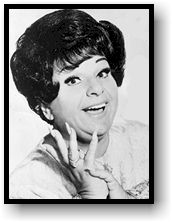 3 July 2008
3 July 2008
 2 July 2008
2 July 2008
 1 July 2008
1 July 2008
1.6180339... - phi, the so-called "golden mean"
2.7182818... - e, called "Euler's constant" and the natural logarithmic base
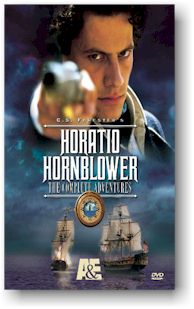 30 June 2008
30 June 2008
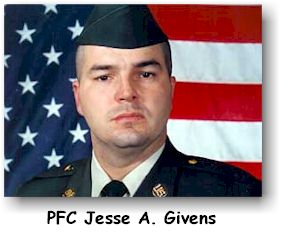 27 June 2008
27 June 2008
 26 June 2008
26 June 2008
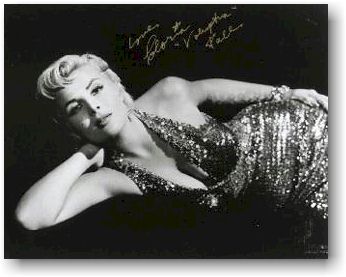 25 June 2008
25 June 2008
 24 June 2008
24 June 2008
 23 June 2008
23 June 2008
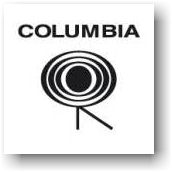 I also found a couple of Columbia Masterworks Lps I didn't have... I have what may be the oddest niche collection, ever. I'm not really a collector of anything, not having the collector's instincts. My one and only indulgence, however, is in finding Columbia Masterwork Lps ("vinyl") from approximately 1958, when the first stereo recordings were issued, to about catalog number MS-6700, say about 1970. It's not just vinyl and it's not just classical vinyl. It's Columbia Masterworks vinyl from a specific era. The artists who recorded for Columbia in this era included Leonard Bernstein and the New York Philharmonic, the Mormon Tabernacle Choir, Eugene Ormandy and the Philadelphia Orchestra, E. Power Biggs on organ recordings and Rudolph Serkin on piano. Best of all, the Stravinsky conducts Stravinsky recordings. In fact, I have twelve of these Lps - the ones with intriguing cover art - framed and up on the wall of my basement. I usually find 'em at yard sales and at library sales for fifty cents to a dollar each, so it's a minor expense. And, of course, I listen to them every now and then.
I also found a couple of Columbia Masterworks Lps I didn't have... I have what may be the oddest niche collection, ever. I'm not really a collector of anything, not having the collector's instincts. My one and only indulgence, however, is in finding Columbia Masterwork Lps ("vinyl") from approximately 1958, when the first stereo recordings were issued, to about catalog number MS-6700, say about 1970. It's not just vinyl and it's not just classical vinyl. It's Columbia Masterworks vinyl from a specific era. The artists who recorded for Columbia in this era included Leonard Bernstein and the New York Philharmonic, the Mormon Tabernacle Choir, Eugene Ormandy and the Philadelphia Orchestra, E. Power Biggs on organ recordings and Rudolph Serkin on piano. Best of all, the Stravinsky conducts Stravinsky recordings. In fact, I have twelve of these Lps - the ones with intriguing cover art - framed and up on the wall of my basement. I usually find 'em at yard sales and at library sales for fifty cents to a dollar each, so it's a minor expense. And, of course, I listen to them every now and then.
 20 June 2008
20 June 2008
 19 June 2008
19 June 2008
Me: I'm over 45. There isn't a square inch on my body without hair.
Middle-aged Mom (peering at my receding hairline): How about your upper forehead?
Me: Well, har-de-har-har. I see you have some impressive blue tattoos of your own, running up and around your legs.
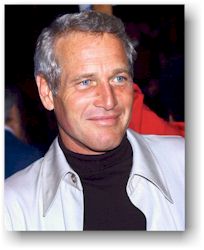 18 June 2008
18 June 2008
 17 June 2008
17 June 2008
 16 June 2008
16 June 2008
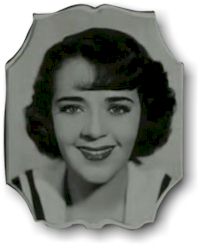 13 June 2008
13 June 2008
 12 June 2008
12 June 2008
 11 June 2008
11 June 2008
 10 June 2008
10 June 2008
 9 June 2008
9 June 2008
 30 May 2008
30 May 2008
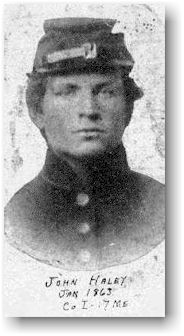 29 May 2008
29 May 2008
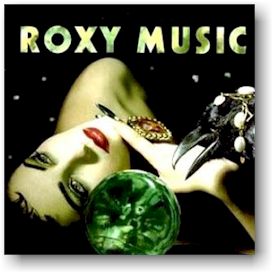 28 May 2008
28 May 2008
For Your Pleasure (1973 - that's Vegas in the background)
Roxy Music (1972 - self-titled)
Flesh+Blood (1980 - there's another girl in white on the back)
Manifesto (1979 - the party's over)
Avalon (1982 - everyone said, "Hey, where are the girls?")
Viva! (1976 - a live album)
 27 May 2008
27 May 2008
January: birth to 6.4 years
February: 6.4 to 12.8 years
March: 12.8 to 19.2 years
April: 19.2 to 25.6 years
May: 25.6 to 32 years
June: 32 to 38.4 years
July: 38.4 to 44.8 years
August: 44.8 to 51.2 years
September: 51.2 to 57.6 years
October: 57.6 to 64 years
November: 64 to 70.4 years
December: 70.4 to 76.8 years
 23 May 2008
23 May 2008
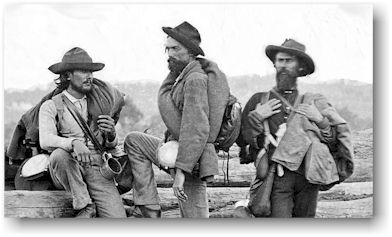 22 May 2008
22 May 2008
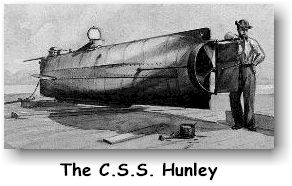 21 May 2008
21 May 2008
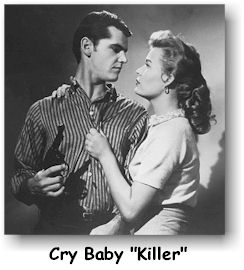 20 May 2008
20 May 2008
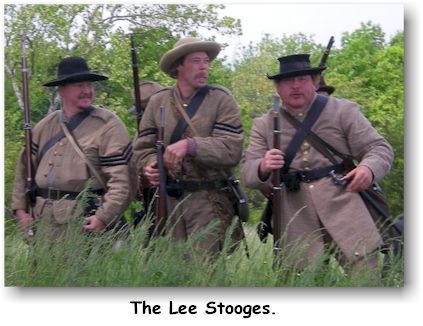 19 May 2008
19 May 2008
 16 May 2008
16 May 2008
A Gaylord: It's cool. Just passing through. Have my card. (He offers a business card.)
A Diaper: You may pass.
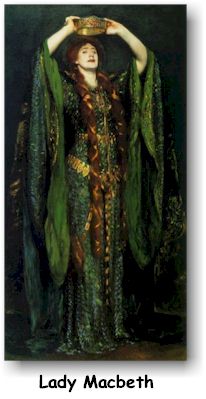 15 May 2008
15 May 2008
 14 May 2008
14 May 2008
A Gaylord: Diapers turf? This don't look like no play pen.
A Diaper: Bite me, Gaylord.
 13 May 2008
13 May 2008
You'll have to allow me some parental bragging for a paragraph or four, now. The big news last night was that my daughter Meredith, who has but a month left in high school, got nominated for a Cappie as the Lead Actress in a Play. (A Cappie is the high school theatre version of a Tony.) Even better, is the fact that she got the nomination for her role in a Shakespeare play. Have you seen many high schoolers do Shakespeare? I have. It's enormously difficult, imparting the meaning of 400 year-old verse when you're that age. Hey, it's even difficult for adults!
She played the unhappy Helena in the Lee High School production of A Midsummer Night's Dream last November, photos here, here and here. Her Cappie reviews were gushingly excellent.
This is a big deal; we attend the Cappies Gala (black tie!) at the Kennedy Center next month to see if she wins. I hope the judges take the Shakespeare Factor into account...
We knew that Meredith could act from a very early age. When she was but two or three years old, she used to sit in her car seat in back and pretend that she was asleep, "Playing possum." The amazing thing was that nothing her mother or I could say got her to laugh or break character. We knew then that getting the truth out of her about what she did on dates and sleep-overs was going to be a challenge if she chose not to tell us...
Actors are by nature, of course, convincing liars. The apple doesn't fall far from the tree.
Well, I never: Candy-striped icebergs. (More incredibly beautiful Antarctic photography here.)
I've wanted to visit the Antartic ever since I discovered Ralph Vaughan-Williams' "Sinfonia Antartica" when I was sixteen. The symphony was adapted form music VW wrote for the 1948 film "Scott of the Antarctic," which, annoyingly, I still have not seen. At one point the score depicts, in musical terms, the dreadful cold weather and a blizzard - a wind machine is used to simulate the sound of howling breezes. I've seen one of these used at a performance of a different piece by the National Symphony Orchestra in the Kennedy Center. It's a wide canvas belt that sits on a drum rotated with a crank - a homemade device, it appeared. As the crank is turned at varying speeds by a musician (presumably, a percussionist), the canvas surface wipes against the wooden drum surface causing a sound much like wind. It's fun to watch... A photo is here.
Over the weekend my wife and I started watching the "Up Series." You can read the wikipedia article here, but here's the opening paragraph: "The Up Series consists of a series of documentary films that have followed the lives of fourteen British children since 1964, when they were seven years old. The children were selected to represent the range of socio-economic backgrounds in Britain at that time, with the explicit assumption that each child's social class predetermines their future. Every seven years, the director, Michael Apted, films new material from as many of the fourteen as he can get to participate. The latest film, 49 Up, was released in September 2005; filming for the next installment in the series, 56 Up, is expected in late 2011 or early 2012."
The series is more or less based on the Jesuit maxim, "Give me the child for seven years, and I will give you the man." In other words, by the time we are a mere seven years old, we are mostly what we'll be for the rest of our lives. The Up Series documentaries more or less prove this point, but the exceptions - there's one fellow named Neil who started as a cheerful and personable lad who later becomes homeless and morose, are gripping.
This series is fascinating! The best documentary I have ever seen; Roger Ebert counts it among his ten best films, and I can see why. We finished 28 Up (1984) last night; today I go to Video Vault and get the next two installments, when the group is age 35 in 1991 and 42 in 1998. It helps that these kids are my wife's age, so we see similar generational events. But the concept makes for very interesting films... sort of the ultimate reality show, run over fourteen parallel lifetimes.
A while back I wrote about the fun of seeing my hometown, Burbank, California, appearing in films and television productions. Over the weekend I watched a cheesy Mark Hamill film from 1978, "Corvette Summer," parts of which were filmed in the Auto Shop of Burbank High School, my alma mater. I had to laugh: one part showed Luke Skywalker walking up a flight of steps where, four years previously, I had taken a spectacularly theatrical tumble down for the benefit of some of my friends. Also, near the steps was a ledge that I once climbed upon to do a gargoyle impression, crouched and leering at some girls. The audio-visual coordinator lady chose that moment to come out and yell at us for making too much noise, when she got a look at me on the ledge. "...and look at him!" she cried, as if I were representative of all the sins of the school.
Heh. Seventeen. It was a very good year.
"What dreadful weather we have! It keeps me in a continual state of inelegance." - Jane Austen
I watched "I Was A Teenage Frankenstein" (1957) last night. Gad, it was awful. When it wasn't boring and talky, it was ridiculous. A much inferior product to "I Was A Teenage Werewolf." And those are all the ASCII characters I'll waste on that.
I was in an office the other day which had a poster on the wall from the (overly) celebrated 1969 Woodstock Festival, which was billed as being "An Aquarian Exposition." Being a child of the 60's I am, of course, familiar with the term. It comes from a song (with a longing, lyrical chorus: Aquarrrrrrrr-ree-usssssss) in the musical "Hair." But, having once been into the occult and a very amateur preparer of astrological horoscopes, I wondered. Woodstock was nearly forty years ago. Are we in the Age of Aquarius yet? If so, when did it begin?
Where does one go to answer such imponderable questions? Wikipedia, of course!
The appropriate article is here, and is titled "Astrological Age." According to it, we don't enter into that fabled age until 2062, 2150, 2638 or 2654. Or even a range of dates from 1447 to 2631. Are you starting to suspect that astrological lore is imprecise? That's surprising, given the precision with which we know the movement of the planets. It seems the Age of Aquarius is kind of like everything else in the 1960's; you probably have to be high to really understand it.
As I said, I used to draw up astrological charts - which is now done in the twinkling of an eye by software - and have always found the results to be unsatisfactory. Or so broad and general as to apply universally. When I got to college and took physics and calculus classes, and learned about the inverse square law of gravitation, I really discarded astrological lore. A professor pointed out that in the celebrated Grand Celestial Conjunction of 1982, the total gravitational influence of all the planets lined up would be less than that of the mass of a glass of water on my desk. So how could it be significant in any astrological sense? An adherant would suggest that we're not really talking about gravitation, we're talking about some (helpfully) undefined influence. You can't win.
For the record, I was born under the sign of Taurus, the bull. (Not really. I was born under a sign which read, "This way to the materity ward" - Har! Bum-dump-bum.) According to Taurean lore, I'm supposed to be built like a prop, and have a special affinity for finance. Wrong on both counts. As well as others...
As far as the Taurean Age is concerned, wikipedia says that it occured between 3814 BC and ended circa 1658 BC (according to one source). Also, a defining characteristic of the Age is that Bull worshiping cults began to form in Assyria, Egypt, and Crete, which relates to Taurus symbolizing the bull. But hang on! Taurus is only a bull because some ancients looked up into the skies, saw Aldebaran and other stars and thought, "Hmm, that looks like a bull." Other cultures saw other things. Wikipedia sensibly notes, "The identification of the constellation of Taurus as a bull is very old. However, we should be cautious when trying to link prehistoric phenomena with the symbolism of a number of ancient, literate cultures whose interactions and appropriations can be evaluated through the examination of their own written accounts, images and artifacts. Because prehistoric people did not document their lives in texts, we can only try to gauge the significance of their images by analyzing them in the context of other artifacts and evidence that survive from their world. We do not have their own words or voices to interpret pictures or explain if they are supposed to represent anything other than what they appear to be: massive bulls, galloping horses, deer and so on." So maybe that whole bull connection is a load of bull.
Along with astrology.
Every now and then I take a walk through a nearby cemetery when the weather is nice; there's a small national cemetery (like Arlington) in Alexandia, where I work, that I pass. Have you ever noticed the emblems of faith on the tombstones? There's a list of the authorized emblems that the government will put on a stone - click here. The Mormon one shows the Angel Moroni blowing into a trumpet, as on the tops of our temples. That's what I'll have - although I think the teepee is pretty cool (the Native American Church of North America). Far be it from me to make fun of another person's religion (after all, perhaps you think Moroni is funny), but check out the Wiccan and Atheist ones...
Have a great weekend! And don't forget, Mother's Day on Sunday. As Bill Cosby once said, Mom brought you into the world and she can take you out of it.
I am now reading my last book about the War of the Roses, "The Year of Three Kings - 1483" by Giles St. Aubyn. As I mentioned before, what makes the War of the Roses so difficult to understand is the cast of characters. The Earl of March is also known as Edward IV, the Duke of Gloucester is aka Richard III. There are members of the Howard, Neville, Beaufort, Grey, Mortimer, Bohun, Tudor, Woodville and Percy families who all also have titles to keep straight, and every female seems to be named Elizabeth or Catherine and every male Edward or Henry. And they're all related to one of Edward III's five sons. It's very hard to track, especially when they murder one another. There is a dramatis personae section at the front which is positively eye-glazing - click here for a representative page. Got all that?
I finally saw Francis Ford Coppola's "The Outsiders" (1983) last night. It was... okay. But about a quarter of the way through it I suddenly realized why I wasn't very impressed with the book. The situations and dialogue were written by a teenage girl, S.E. Hinton, and that comes through loud and clear in the book and movie. The Greasers speak and act in ways that are fundamentally inconsistent with the ways adolescent males speak and act; their behavior and voices in The Outsiders are what a teenage girl thinks boys sound like, not what they actually sound like. This is in dramatic contrast to "Stand By Me," which I saw the other night, where the boys sound and act very, very much like boys. The story arc in The Outsiders is too classically adolescent female.
For instance, in both Grease (the play, not the movie, which is a far different work) and Stand By me, the boys make admiring comments about Annette Funicello's bust. Teenage males of that era would and did. Annette was really stacked, and every male in America was aware of it. (There's a funny bit of dialogue in 1987's "Back to the Beach" where Connie Francis tells Annette, "You had a really great rack in those days!" And a childhood friend of mine used to call Dagmar bumpers "Funicellos.") Yet nothing like this appears in The Outsiders. Instead, the Greasers dwell on the awful social gap between themselves and the affluent Socs in a way that Jane Austen would have found engrossing.
So, my search for the great J.D. leather jacket and switchblade flick continues...
On Monday I mentioned my friend Chris' ferrotype, taken at last Saturday's reenactment. This caused me to wonder about whose face appears in the very first photograph of a person. From the always fascinating shorpy.com, it was photographer Robert Cornelius, whom the ladies find attractive, 169 years later. ("How Gorgeous!! I'm in love. Too bad he's dead and I'm 70. It could have been something wonderful.") They seemed to have found him interesting back in the day, too. He was also a ventriloquist? How interesting...
Also, from shorpy.com, Street scene: 1921. Can you spot the two women in this crowd?
Finally, scroll down and see image of the Burbank War Lord home on the 2 May entry. My pal Mike swung by there the other day, and reports that a big tree in the front yard now obscures the crenelation. What a pity!
From my desk calendar: The power of stones! The one I find interesting is the lodestone, which promotes somnambulism (sleepwalking). Why would anyone want to promote that? Sleepwalking is weird and disturbing; my mother used to do it. Back when I was a teenager, we had a backyard in-ground pool which we let friends use. The little girl of one family had a piercing, whiny voice which, apparently, my mother found annoying. I was in the den with my father late one night, watching TV, when we heard my mother walk out the back door, yelling "Mary Ann!" Then splash! - the sound of her jumping into the pool in her bedclothes. Dad and I ran out to find her wading around in the pool, asking, "Where's Mary Ann? I heard her!" Apparently the sound of the kid's daytime voice permeated my mother's dreams and she thought Mary Ann was somehow casting about in the pool. Sheesh. Keep the lodestones away from Mom.
At the suggestion of a reader of this blog, I watched a perfect film last night; perfectly cast, written and directed. It's "Stand By Me" (1986), a Rob Reiner film. While it's not a J.D. film it does take place in 1959 and has a teenage gang, so it fits in my current survey. I thoroughly enjoyed it because it seemed completely authentic. Twelve year-old boys talk and act exactly as depicted; at least I did.
There's one scene where the boys walk across a high trestle, which is depicted as being a scary experience. Have you ever done that? It is scary. I once walked across the trestle crossing the Monocacy River in Maryland, near Frederick. Between the trestles you can see a sixty plus foot drop into the water, and there are gaps in some of the crossbeams that made my palms sweaty to cross over. Perhaps it would be less scary if I were somnambulating...
I also watched "The Flaming Teen-Age" (1956), which absolutely sucked. A stale, moralizing waste of time, one reviewer wrote, "The Flaming Teen-Age, on the other hand, is like a lesson in living from the Church of Jesus Christ of the Latter Day Saints." Wrong! This guy clearly doesn't know what he's talking about. I have seen many LDS church films; in fact, old church videos are an interest of mine. Ours are far, far better than The Flaming Teen-Age!
I also wasted 72 minutes of my time with Edgar G. Ulmer's "Girls in Chains" (1943). The star, Arline Judge, who looks like a chubby chippy pulled off the street, can barely act. She wears the world's strangest 1940's upswept hair do - it looks like a big loaf of brown bread is perched upon her head. She fails to convince as a do-gooder counselor in a girl's reformatory. (As usual in chicks in prison films, the matrons look and act like lesbionic Nazis.) Her cheap aura is completely at odds with the fact that her character supposedly has a master's degree in psychology.
How bad was this film? Well, there's a gangster named Johnny Moon in it. The background music annoyingly plays from beginning to end, and whenever Johnny is mentioned the music switches to an orchestral arrangement of "When Johnny Comes Marching Home." That's how bad this film was.
Ulmer is an interesting director; he did the world's cheapest, yet most utterly convincing, film noir, the celebrated "Detour" (1945), which is on the short list of every noirhead's favorites. Ulmer worked for the Producer's Releasing Company (PRC), one of the "Poverty Row" companies in Hollywood due to the bare bones nature of their film funding. Every film of his I have seen (save Girls in Chains) is at least interesting and rises above its poor budget.
I am now reading an Eric Sloane book I got for my birthday, "The Cracker Barrel." Longtime readers of this blog will know I mention him from time to time and enjoy his insights into old time Americana. He is also an excellent artist, specializing in line drawings that exactly illustrate the point he is trying to make. For instance, check this one out: How the Pennsylvania Dutch made hex signs with pitchforks.
A friend of mine is reading "Carnage and Culture" by Victor Davis Hanson. In it is this question and answer format question. My italics.
"Do you agree with von Moltke's alleged statement that the American Civil War amounted to little more than, '...two armed mobs chasing each other around the country, from which nothing could be learned?' Was this a case of European military snobbery that overlooked the contributions of new technologies and commanders such Lee, Grant and Sherman to the art of war? Or did these technologies and commanders have little impact, in practice, on how the war was waged, rendering it (as some historians hold) a haphazardly fought last gasp of the Napoleonic era?"
"Hanson: He was wrong, as Germany learned in 1918 when the American Expeditionary Forces replicated what was learned in the Civil War. By 1865 there was no army in the world of the caliber of Sherman's Army of the West, acknowledged by foreign attach‚s who watched them march in D.C. in April 1865. Sherman's strategic vision was unmatched by any European's. Whether one examines mortars, repeating rifles, iron-clads, or the use of railroads and telegraphs, the American armies in 1865 were either as good or better than anything in Europe. The problem we have with all German military theorists is that in peacetime they seemed brilliant, but in war their doctrines either proved wanting or led to inevitable overreach. German strategists of the 20th century were comparable to contemporary Chinese thinkers who somehow have found themselves surrounded by nuclear Russia, nuclear Pakistan, nuclear India, nuclear American bases, nuclear North Korea, and soon perhaps if they are not careful nuclear Japan, nuclear Taiwan, and nuclear South Korea."
I am pleased to see Hanson write this because I have always maintained it. In 1865, at the close of the Civil War, we had the world's best armed forces. Battle-hardened commanders, high-tech weapons, modern tactics. And we could say that same thing eighty years later, in 1945.
Various types of lies, from my desk calendar. I once heard a Mormon church authority cite the following, which has caused me to fidget ever since: "A lie is any communication intended to deceive." Now that I have passed it on, you may fidget.
Last night, at my daughter's pleading and urging, I rented and we watched "Newsies" (1992) the ambitious Disney musical that nevertheless falls flat. Christian "Batman" Bale has a leading role in this (he was all of 18), which is why my daughter wanted to see it. She thinks he's hot.
I rented this film back in the mid-Nineties, when, every Friday night, I'd rent a family film for us all to watch. (I complied a family films website for parents tired of inappropriate material and crappy films - click here.) I am pleased to note that my entry for Newsies, written more than ten years ago, is prophetic: "Newsies - The Bowery Boys meet West Side Story meets Disney. Clearly an ambitious film by Disney, but one that was only marginally successful and critically panned. Still... the tunes are pretty good, and the dance sequences are interesting - but the plot is just plain silly (it is based, however, on an actual New York City newsboys strike of 1899). What I find interesting is that there seems to be many web pages devoted to this film. Hmmm. Could achieve cult status someday. Anyway, it gets a so-so rating because my kids weren't terribly interested in it. (I imagine that could change when my daughters get to be about the same age as all those boys in the film, however.)"
Roger Ebert has about the right take on it. I like this observation: "Ann-Margret, who plays Madda, the dance hall star, has a role whose purpose is all but incomprehensible. She acts as a sort of big sister and confidante to the striking newsboys, chucking some of them under the chin while talking to others in terms of fairly alarming intimacy. Are we to guess that her dealings with some of the lads have gone beyond buying a paper for a penny?" I wondered precisely the same thing when I first saw it.
Newsies takes place in New York City, and, perhaps needless to say, there's a scene that takes place in Brooklyn. (See entry for 24 April.) Some day I'm going to have to visit Brooklyn, the land of my father...
Watching Newsies makes me think of child labor c. 1900 in general, and of Shorpy and shorpy.com in particular. Shorpy.com is a very interesting page... the webmaster presents historical American photos and people comment. Fascinating stuff.
To me, what's even sadder about poor Shorpy Higginbotham's work conditions and death (he died aged 31 in a mining accident) is the incomprehensible lack of interest in him displayed by his son. (Click here for some interesting Shorpy-related detective work.) As an enthusiastic amateur genealogist, this kind of attitude drives me nuts! A great photo - nay, a classic American image - turns up about a fellow's father and he doesn't care? I scrape and dig for years for every little scrap of family history I get... ARRAUGGHH!
Administrative note: this page was getting a bit too big and unwieldy, so I archived the entries from January to April '08 here.
My son's favorite childhood star, Paul Rubens (aka Pee-Wee Herman) is back.
Used a borrowed Nikon D200 to shoot a rugby match on Friday; a young friend of mine from church was playing for West End RFC vs. NOVA. (NOVA won 11-7.) I took 999 photos during two 35 minute halves! (Here's one.) That camera is amazing - a great advancement over my D100, and I understand that the new D300 is just as advanced over the D200. Anyway, it has a great continuous frame rate that I was using; that's why I took so many shots. And a greater majority of these shots were usable compared to my D100. I want a D300!
My pard Chris and I did the 145th anniversary battle of Chancellorsvile on Saturday. It was... okay. About a 5.0 on the Event-O-Meter. It was really too small-scaled to be very good, to be honest. Some photos:
All of the Rebs. Big field, too few Rebs (and fewer Yanks). You get the idea. So, some of the Rebs galvanized, that is, fell in with us Yanks. The problem with this was that some of these guys didn't have Yank sack coats. It looks terrible. Any member of the public with halfway decent eyesight could be forgiven for wondering why Confederates were located in a Union firing line, shooting at other Confederates.
And the ones with Union sack coats did stuff that ensured that nobody would mistake these guys for real Yanks, like Feather Yank, here. Another problem was that these guys apparently had a somewhat careless attitude with safety. We're marching along down the road, loaded, and I hear a shot go off from this galvanized company behind me. One guy apparently had his hammer down on the cap, instead of at half-cock. Classy. In my ten plus years of reenacting, I have never seen that one before!
I have to state that the amenities at this event were advanced, however. Nowadays you can get portable hand cleaning stations with the porta-potties. Chris demonstrates.
It was a solid ten on the Event-O-Meter for Chris, however. He had his image struck by Bob Szabo, who travels from event to event and makes a living doing ferrotypes. Here's Bob removing a plate from his camera, which is equipped with a lens from the 1850's. The pose, in color, as seen by an onlooker. The pose as seen by the wet plate. Pretty cool, huh? Notice that the image is reversed, and that Chris's blue eyes have washed out. That olde-tymey process is not panchromatic, and washed out blue eyes is a feature of Civil War era prints.
Chris' print turned out better than mine, I think. (Taken October 1996 at Cedar Creek, Winchester, VA.)
Before the battle Chris and I visited the nearby Chancellorsville Battlefield visitor's center, where I found this cool reenacting artifact: a cardboard cartridge box, used in the 1961 reenactment.
Chris and I also visited the celebrated "Last Bivouac" site on the battlefield, where Lee and Jackson met to discuss the next morning's flanking march. Jackson was killed the next day, so this was their last meeting. Neo-Rebs boo-hoo over this, so I caught Chris with an appropriately mournful pose. He also peed in the nearby woods, showing no respect. He's been acquiring my bad attitude...
Here's an odd story somebody sent me: You can use pixie dust to grow back parts of severed fingers. How weird! You've got to like the comments: "Can you sprinkle it on short legs? Will they grow longer?" and "I think that this dust should be sprinkled on all our politicians' noses, just put a bit in their troff" (trough). Ha!
Finished my Henry V book. I now have an entirely different view of him. All of the other books I had read more or less concentrated on Agincourt; this one gave a broader picture. He was a ruthless creep. I think one of the overriding themes of studying English history is that one must study it and somehow disregard Shakespeare - which is hard to do given his genius...
I am now reading a breezy little book about life in medieval castles as a break from the more difficult style of historical non-fiction I usually read. Whenever we think of castles we think of that characteristic square-toothed pattern found at the tops; you probably know these are called crenelations. As boys, we imagined archers dodging around behind these, firing off the occasional shot at attackers below. But did you know that the name comes from the spaces and not the solid parts? The solid parts you take cover behind are called merlons, the spaces are called crenels. My book says so.
We also know, from movies, that the floors were strewn with rushes. But what was under the rushes? This passage makes it clear. No wonder they had pestilential diseases.
The old saying "A man's home is his castle" was never so true as it was in Burbank, California, where I grew up. When I was a kid I used to ride my bike to the library and around town, and always got a kick out of riding by the little crenelated Spanish-style homes (my father called them "Spanish dogs") built in the 1920's and 1930's. These were never very large - one bath with two bedrooms, probably - but they were certainly stylish. I hoped to own one, some day, so I could post myself behind the merlons and shoot down at... who? The paper boy? Salesmen?
I got so interested in castles that I wound up reading every book I could find on the subject in the school library. Then I naturally got interested in medieval history in general, and knights, medieval warfare, Arthurian literature, the lives of the English kings, etc. All from riding my Sting-Ray in Burbank.
Fast forward about thirty years, and I'm back in Burbank, visiting from where I now live in the east. While doing a nostalgic cruise around Burbank neighborhoods with my high school pal Mike, we passed one of these and I told him about how I used to admire them. Where there any more that he knew of? That question turned into an occupation that we'd pursue every time I visited my old home town. It also led to this article, THE WAR LORDS OF BURBANK! (You have to scroll down a bit to get to the castle part, but I do a passable job at linking the historical Second Battle of La Cuehenga Pass with these funky little homes, I think.)
There are war lord homes in other states, of course (I once toured a cinder block castle in Aldie), but I've never seen it done with so much flair and enthusiam as in Southern California. It's a pity those Spanish dogs are getting remodeled and McMansionized out of existence.
Have a great weekend! Tomorrow I venture south with my pard Chris as members of Mister Lincoln's Army, to take on the Rebs at the 145th anniversary Battle of Chancellorsville. Musketry! Cannon fire! Battlefield fatalities! Sacred Harp Singing! Sutlers! Porta-Potties!
By the way, click on that animated battle map link - what a novel idea. Gives you a very clear idea of what went on. I wish there were sites for other Civil War battles; this is the way it should be presented.
LAST NOTE: I just got a rugby club mailing from my friend Pete Murray. His take on Chancellorsville is entertaining: "Unless you've been living under a rock for the past 5-10 years, you have heard the ongoing debate about immgration to the US. Well whatever side of the fence you are on for this issue ponder this tidbit: On this date in 1862, that wayward Virginian, Thomas "Stonewall" Jackson led his man on a 20 mile march along Brock Road. His objective was to flank General "TJ" Hooker's men on his western edge. Since it was early spring and the leaves weren't quite grown in, the Union troops could see the dust that Jackson's men were kicking up on the march. That forewarning didn't do much for the Union troops as Jackson's men crashed through Hookers line and rolled it up much like the mob does with a dead guy on a piece of carpet. OK, what is the point of today's history moment? Those troops on the flank, Immgrants. Germans no less, probably busy making kraut and sausage and drinking beer when the rebs charged through their lines. Do you think they spoke english? No. So no matter where you fall on the ol' immgration debate, be happy that our flank isn't being watched by beer guzzling, sausage face-stuffing Krauts who don't speak english."
Still reading "Henry V - the Scourge of God" by Desmond Seward. (That's how he described himself, "The Scourge of God.") Monetary policy is important, always has been, always will be. Here's a excerpt from the book describing the disasterous effects of bad monetary policy.
This is a very enlightening book... far from being the glittering king-hero of England that Shakespeare describes, Henry V is depicted as being an awful, cold-blooded tyrant. Of course, one always has to keep in mind any biases of the author, but Seward cites contemporary chronicles and writers whenever possible and paints a convincing picture. As for me, I always thought that medieval England was far better off without French possessions, which cost much blood and effort to maintain. But, I'm a 21st Century American, not a medieval noble brought up to venerate war as were Henry's Peers of the Realm. The glory and honor of an Anglo-French Empire was very much on the minds of Henry V and his subjects.
Whatever the bias of their biographers, surely English heroes like Richard the Lion-Hearted, Edward I (The Hammer of the Scots) and Henry V were all drenched in blood.
Watched one of the major budget J.D. films from the Fifties last night, "Blackboard Jungle" (1955), a compelling work. (The other mainstream film everyone sees is, of course, "Rebel Without a Cause.") I've seen Blackboard Jungle before, but since TCM broadcast it and I'm doing a review of teen interest and J.D. films, I thought I'd watch it again to get a feel for how it differs from the other works. Simply stated, it's better scripted, acted and directed. But it lacks that certain something that puts it in the cult territory... that feeling one gets of discovering something overlooked, or an entirely new, non-Hollywood angle brought to bear on the subject in question.
Jamie Farr (you know, Klinger, the guy who dressed in women's clothing to get out of the army in M*A*S*H), makes an early appearance credited as "Jameel Farah." Interesting trivia from his IMDb entry: "Was one of two cast members of the original "M*A*S*H" (1972) television cast to have actually served in the armed forces in Korea; Farr's tour of duty came in the years after the war. Alan Alda served a six month tour as a gunnery officer in Korea. In addition, the dog tags Farr wore on the "M*A*S*H" (1972) set were actually his issued set from his time in the Army."
The other film I saw, with my wife this time, was "The Careless Years" (1957), with a very young (21) Dean Stockwell. Not a J.D. film, but a film about ill-starred teenage love. Stockwell looks, acts and sounds like a poor man's James Dean, but we both liked this film. One scene, where Stockwell gets into an altercation with his angry father, was very effectively staged and rather hard to watch (the Dad gives his son a mighty whack across the face) - an amazing thing, given all that we routinely see in modern films. But such is the power of good storytelling, acting and direction. I have always maintained that you don't need a R rating to shock and surprise an audience and this scene proved my point.
No leather jackets in either film, by the way, with one interesting exception. In the second film, Dean Stockwell's younger brother puts on what looks like a brown leather jacket (not a biker type). Stockwell asks if he doesn't have some other jacket to wear; that he's going to wear that one out. The younger brother says, "This one attracts all the women," or words to that effect. So there's a 1950's rationale towards the wearing of leather jackets: females found them attractive. Or males thought that females found them attractive, which is probably more the case.
In Blackboard Jungle, the gang members wear interesting (cotton) jackets with what look like white X's painted across the back. The X-Men! Still, it's more credible than those baseball guys in "the Warriors."
 12 May 2008
12 May 2008
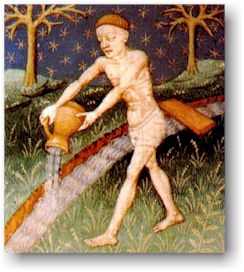 9 May 2008
9 May 2008
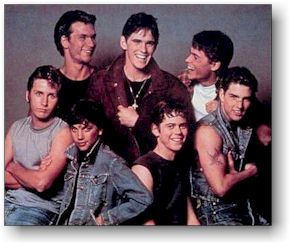 8 May 2008
8 May 2008
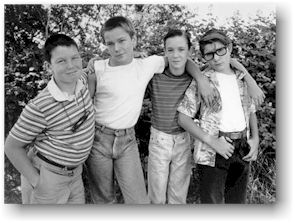 7 May 2008
7 May 2008
 6 May 2008
6 May 2008
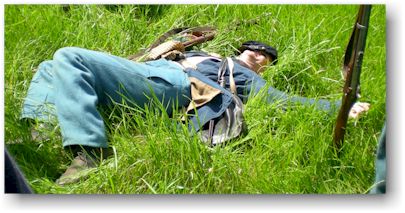 5 May 2008
5 May 2008
 2 May 2008
2 May 2008
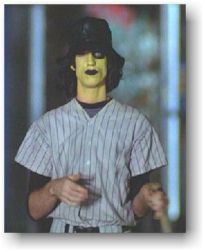 1 May 2008
1 May 2008